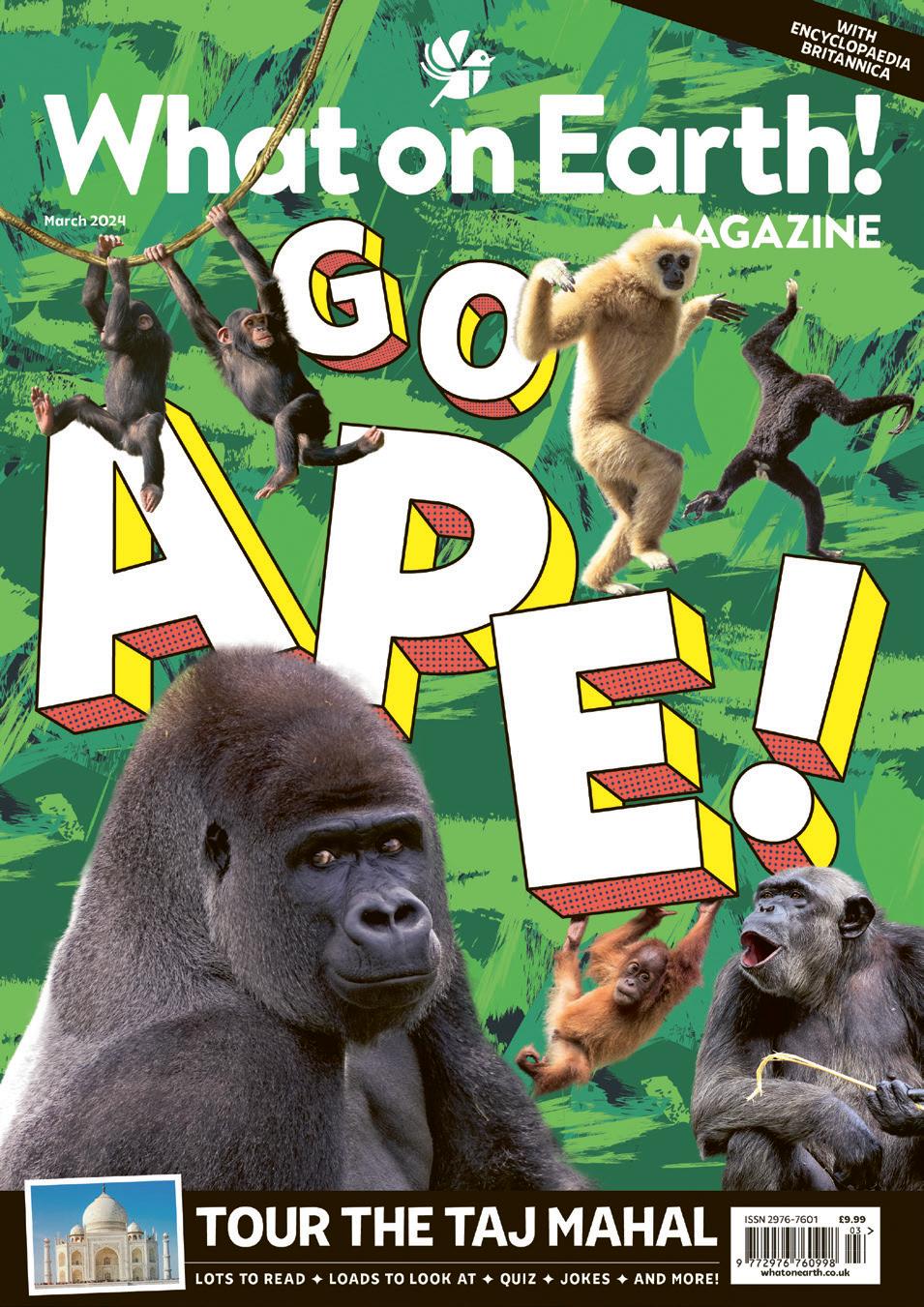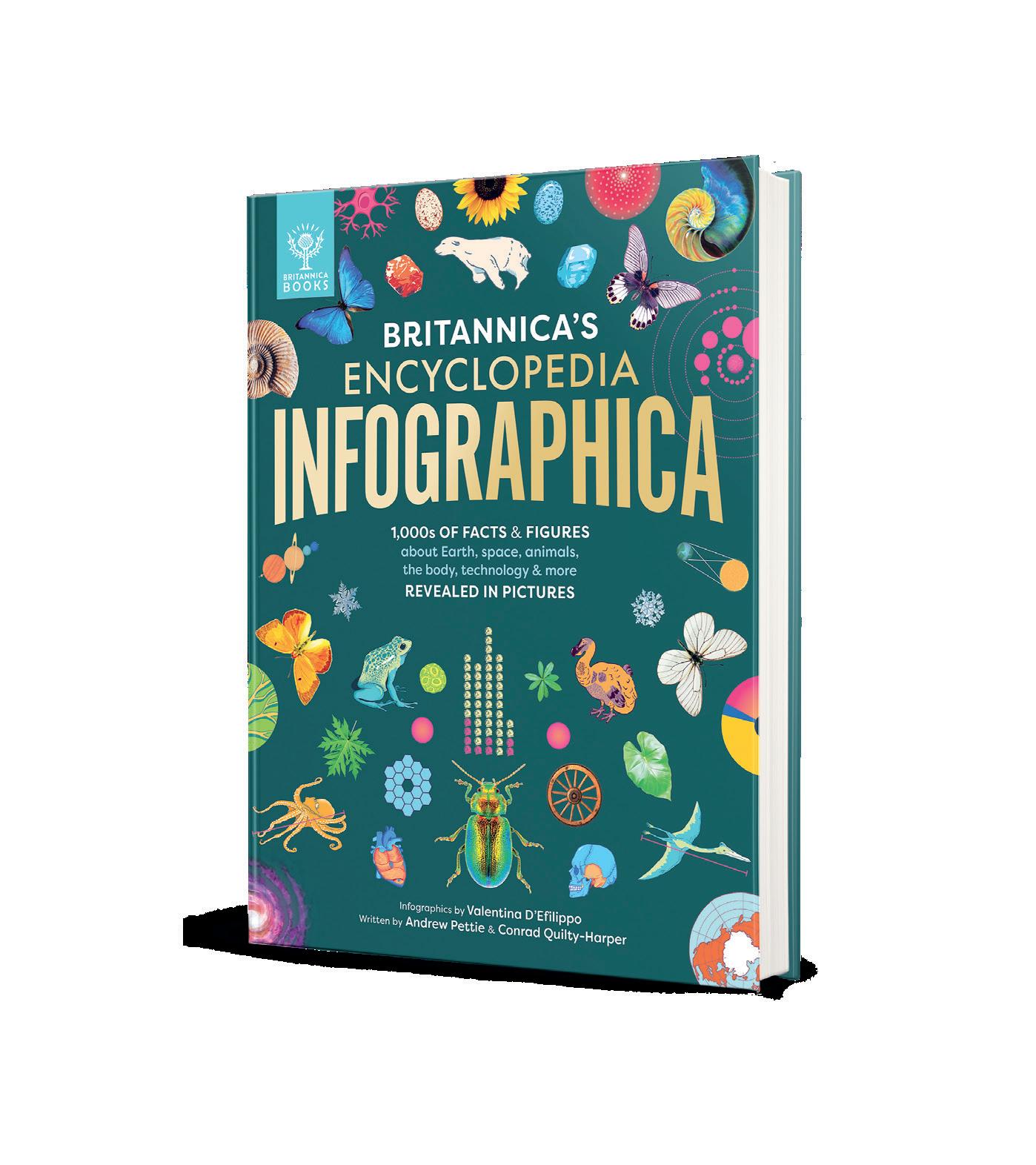CONTENTS
A wild and wonderful world awaits you inside!

A wild and wonderful world awaits you inside!
Explore the world of pyramids on page 18 – from the pyramids of ancient Egypt to the stunning pyramids still being built today.

Get your brain buzzing and test your puzzle-solving skills on page 29
EYE DON’T BELIEVE IT!
Trick your eyes and tease your brain with another incredible optical illusion, on page 39. This month: the Fraser spiral – is it really there at all…?
Follow the trail of crazily connected facts on page 4 all the way from an ocean journey in a glass bubble to slime-eating flies!

WORD UP!
Did you know that English has used different letters in its alphabet to the ones you can see on this page? All is revealed on page 14.

Sink your teeth into 10 fascinaing facts you didn’t know about pizza on page 42, including the world’s most expensive pizza, strange toppings, pizzas in space and more!

In 1620 the Pilgrims set out from England to America. Discover who they were and what inspired their epic voyage on page 44.
Take a tour of some of the most ingenious structures built by animals on page 16
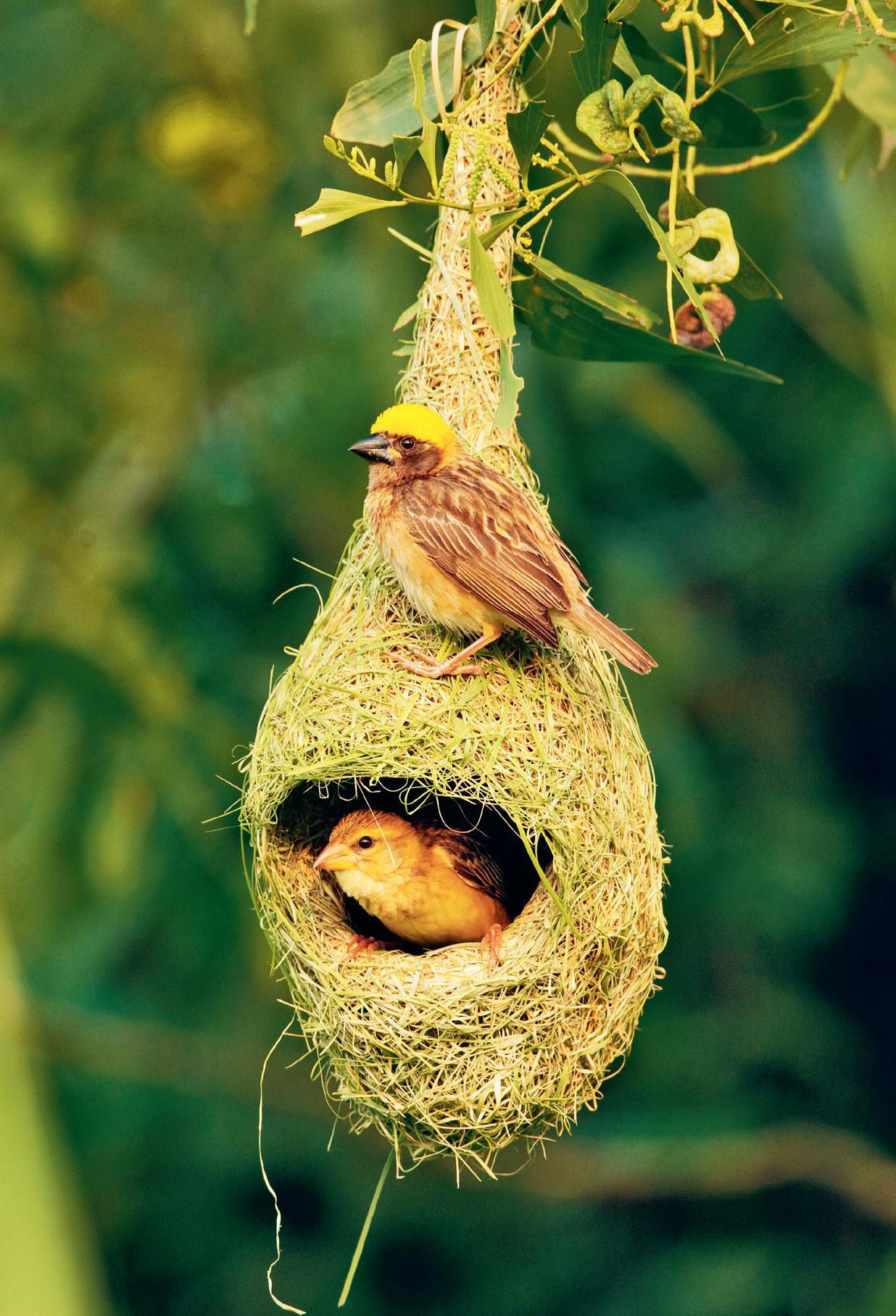
…meerkat! Find out about their different kinds of predator warnings on page 12


Look out for this month’s selection, hand-picked by our jokes editor May, on page 50.
How does the smell of a banana affect your brain?
Find out more on page 10.
Plus: a pioneering rocket launch by SpaceX, an unexpected shape in a distant galaxy and the incredible superpowers of the mighty axolotl!

To win ALL the brilliant books featured in our November Issue, just answer this question: Which Egyptian pyramid is the oldest?
Send your answer to letters@whatonearth.co.uk and a winner will be chosen at random by our jokes editor May. Good luck!

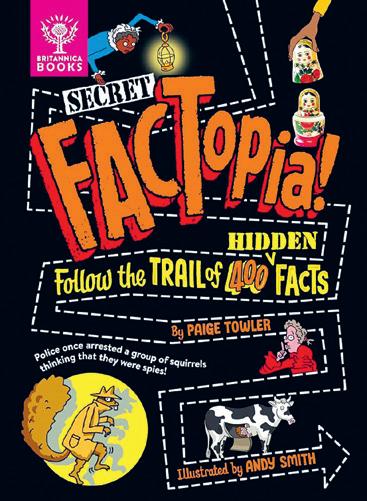
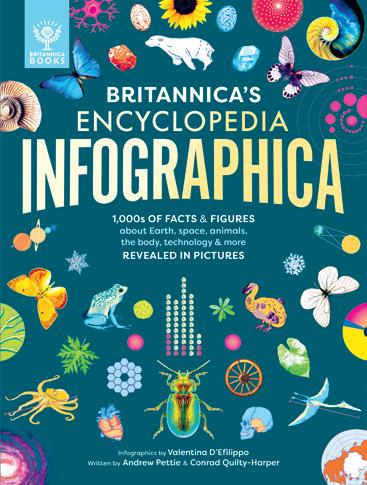
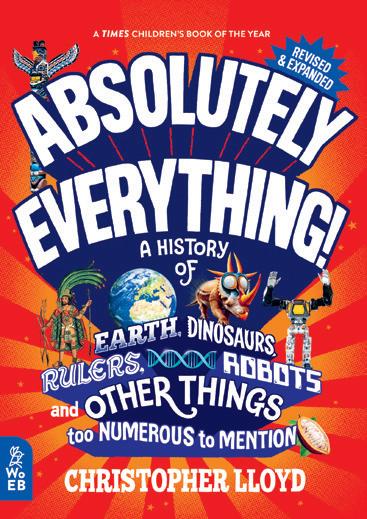
You can also find all these books (and more!) at whatonearthbooks.com/ shop
Follow the trail of crazily connected facts all the way from Alexander the Great’s journey under the sea to… slime-eating flies!
By
HERE
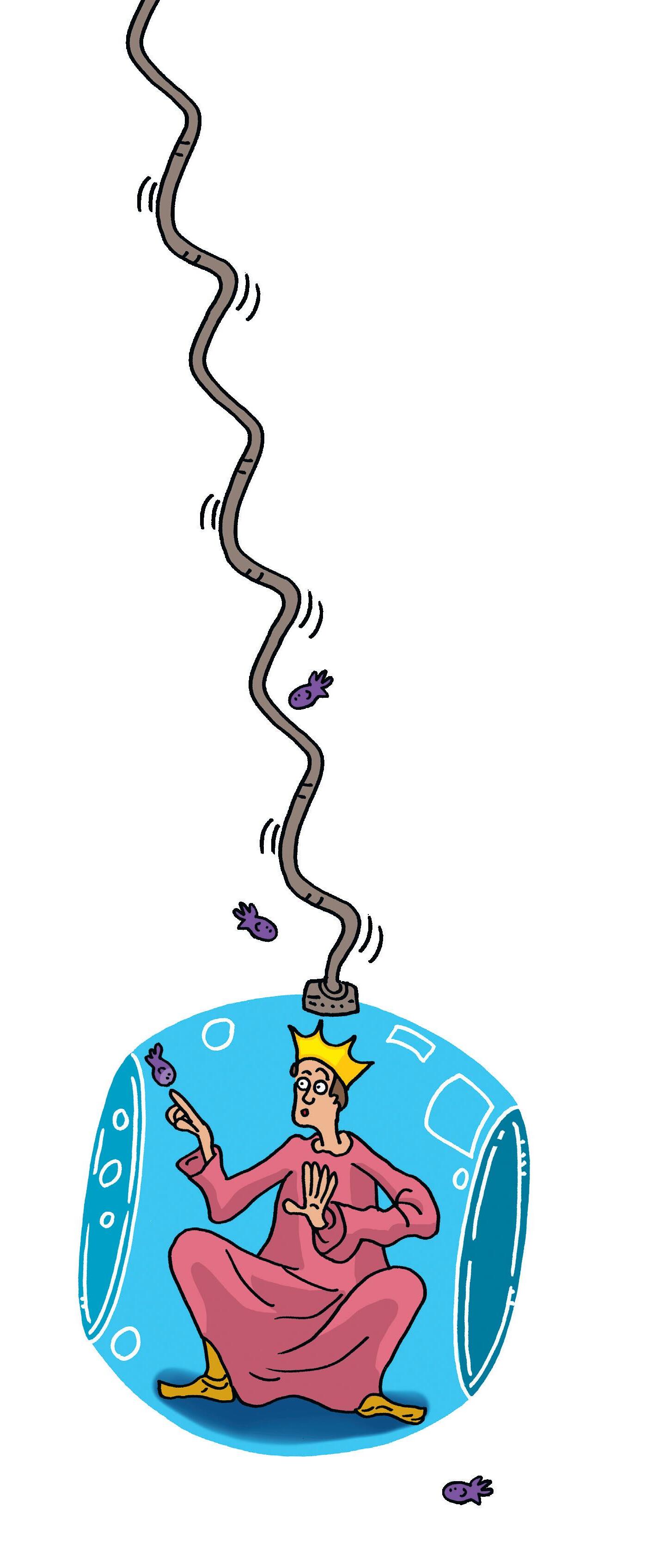
According to legend, ancient Macedonian conqueror Alexander the Great once explored the deep ocean by having himself lowered in a waterproof glass container
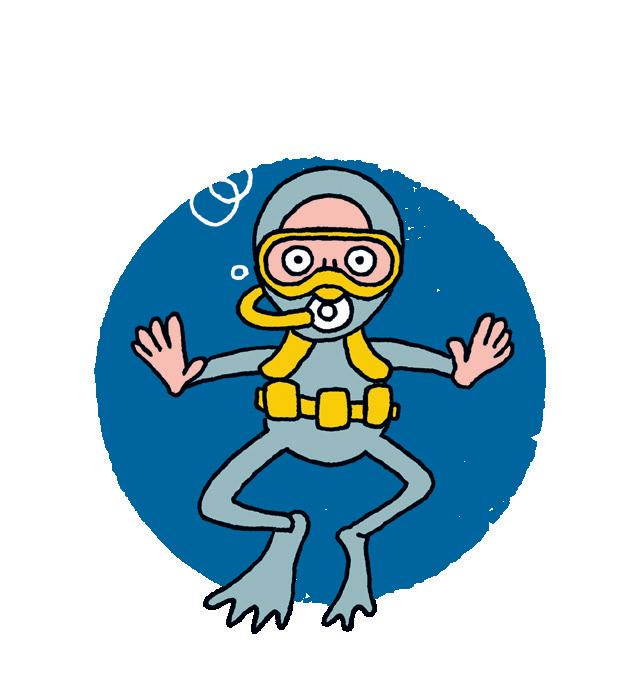
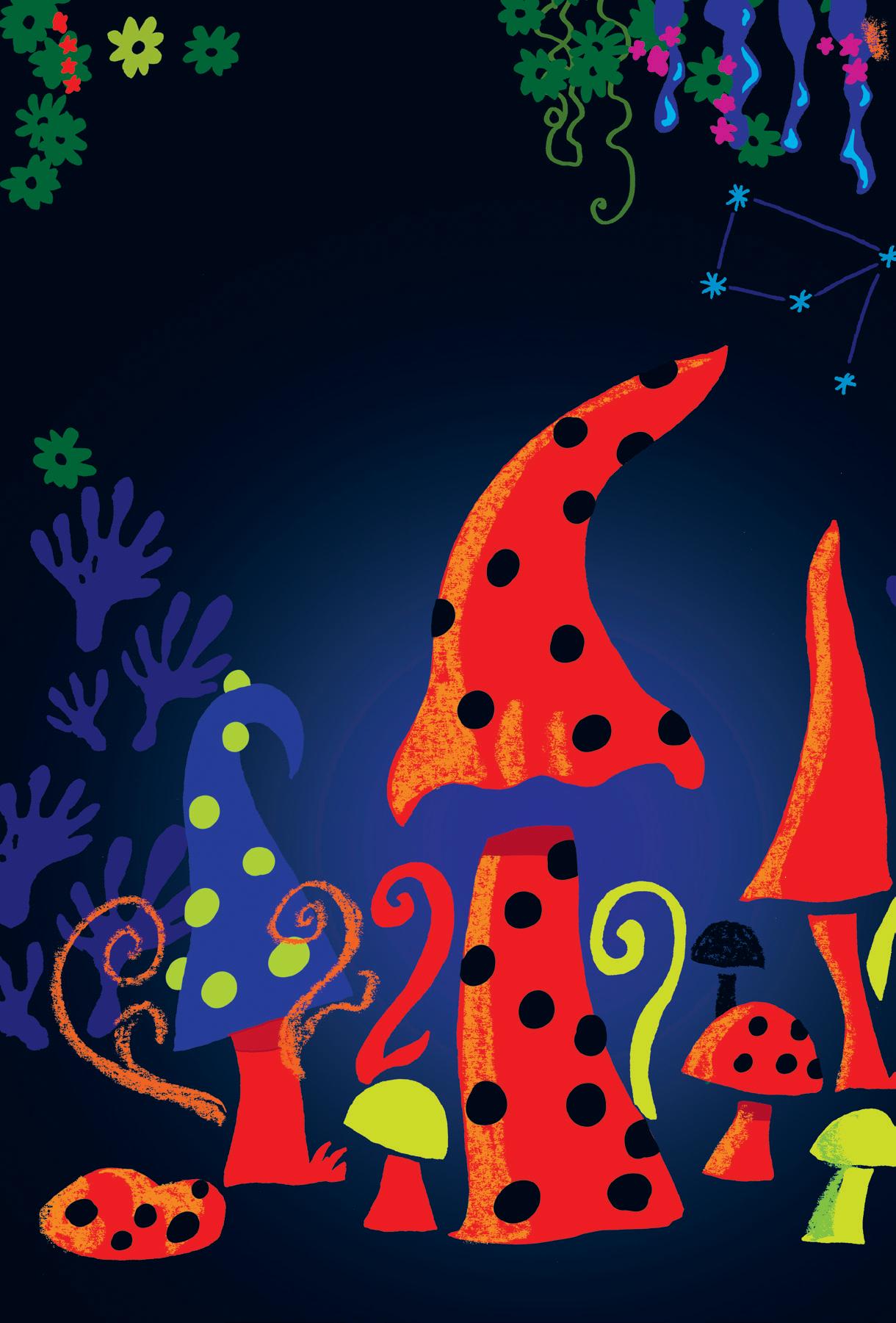
Young sunflowers move their heads through the day so that they always face the Sun – at night they reset, ready for sunrise




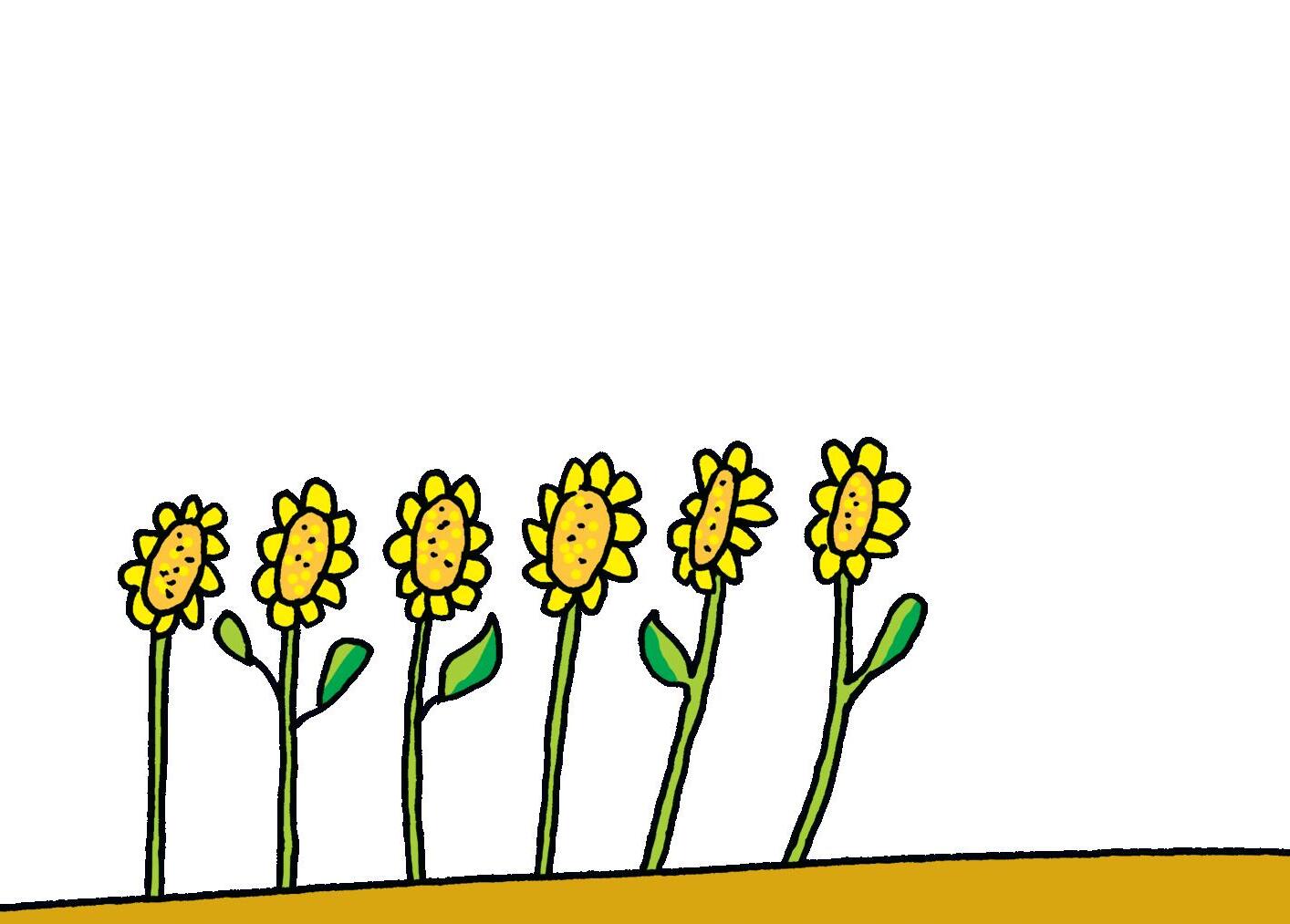
All the exhibits in the Dark Mansion Museum in Malaysia are designed to glow in the dark

Located on Spain’s Canary Islands, the Roque de los Muchachos Observatory is situated in a place that has the least light pollution on the planet
Some flowers
only at night
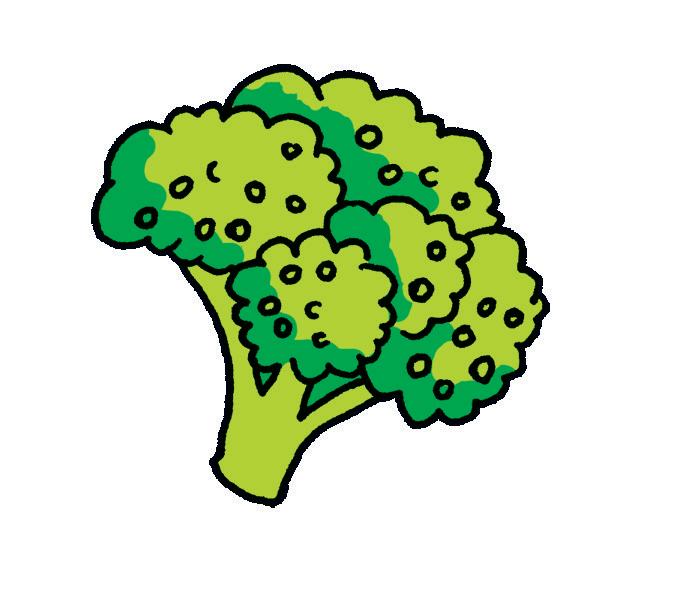






smell like rotting meat in order to attract insects

A plant called the octopus stinkhorn emits a stench that attracts flies, which then feast on the slime that covers the plant!
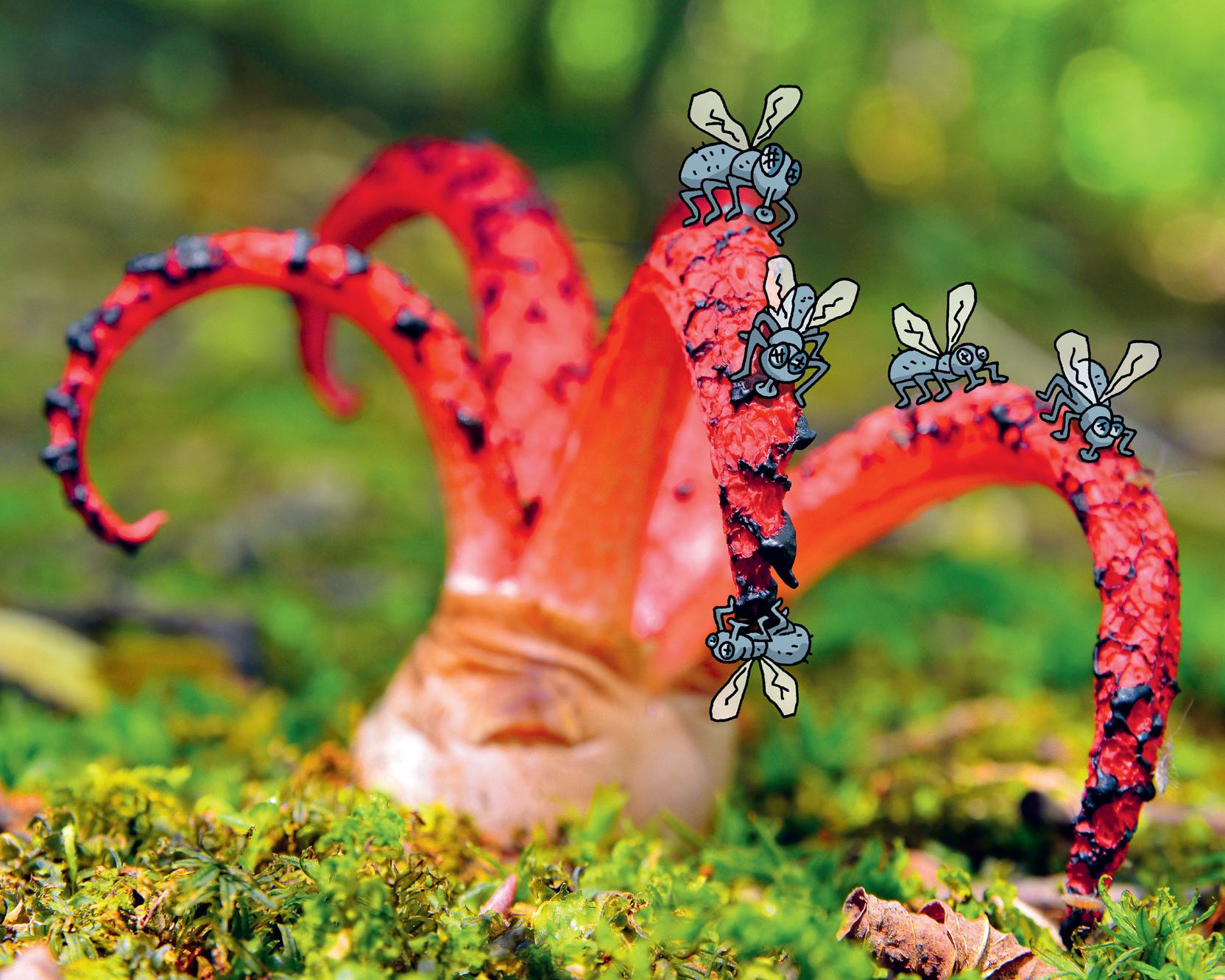
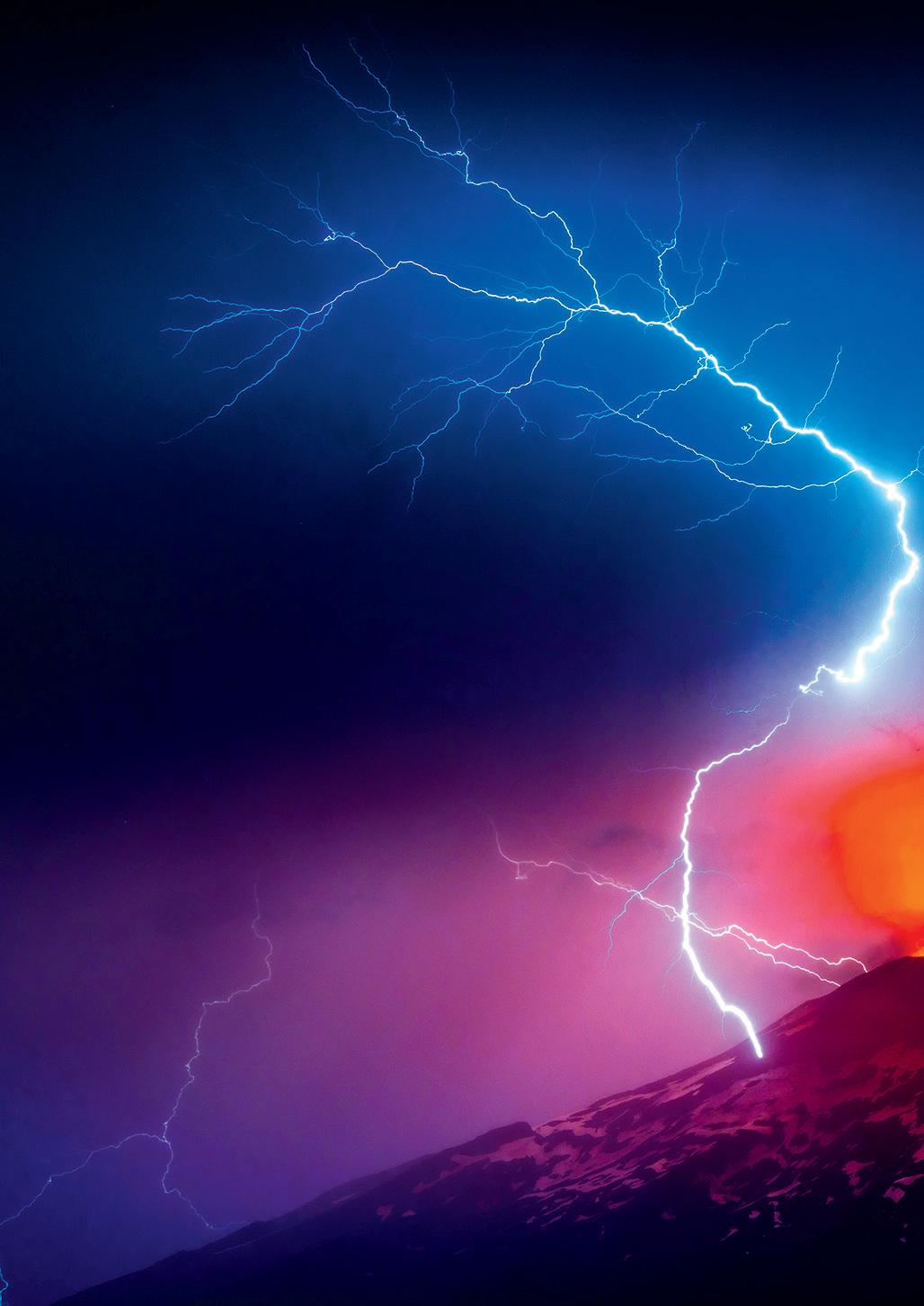


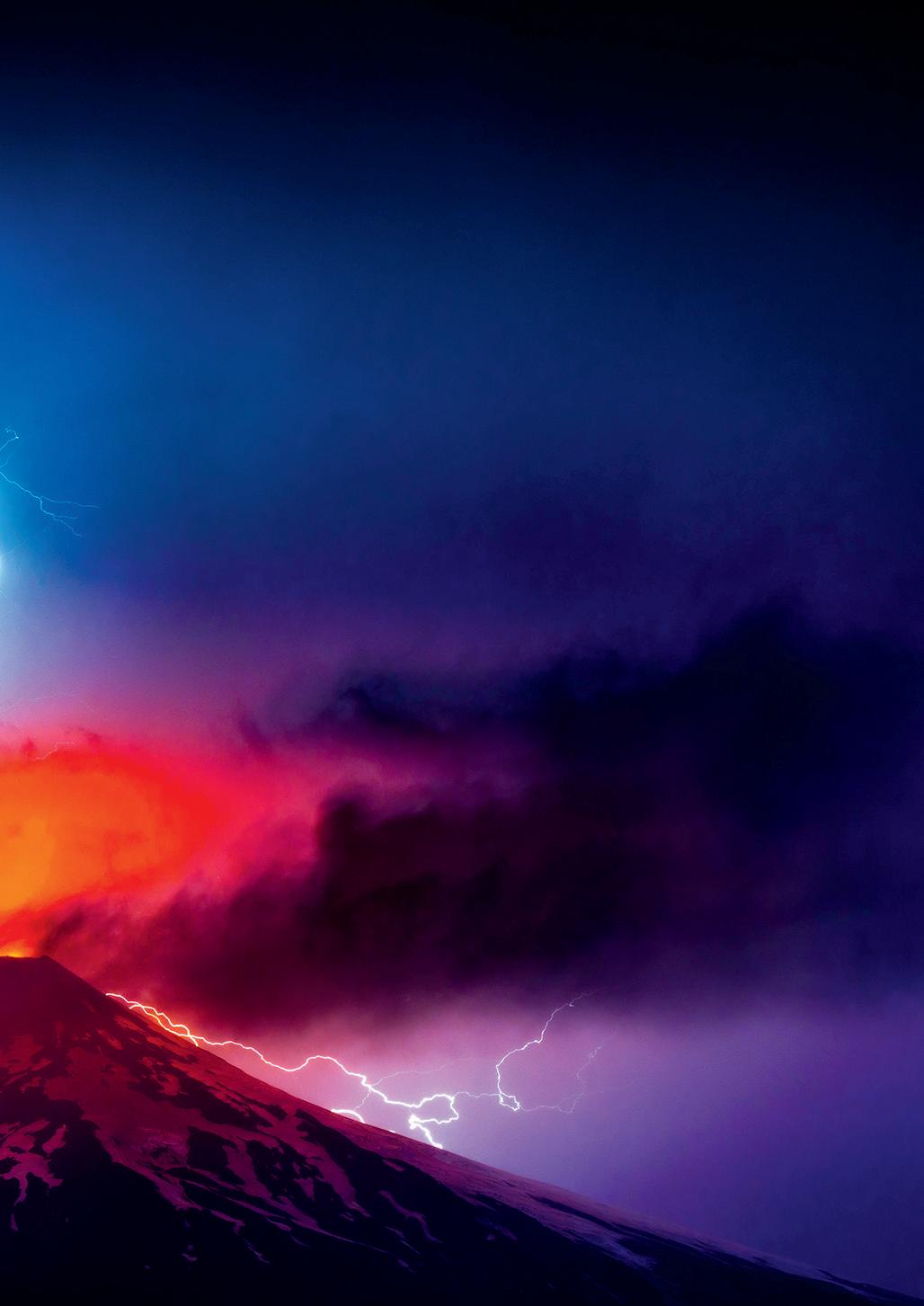
Astonishing photos from around the world

This photo was taken during the Fête du Citron –or Lemon Festival – which takes place every year at the end of winter in Menton, France. In 2020, when the photo was taken, the festival’s theme was World Festivals. The giant figure seen here is a calavera, a depiction of a skeleton associated with the holiday Día de los Muertos, which is celebrated in November.


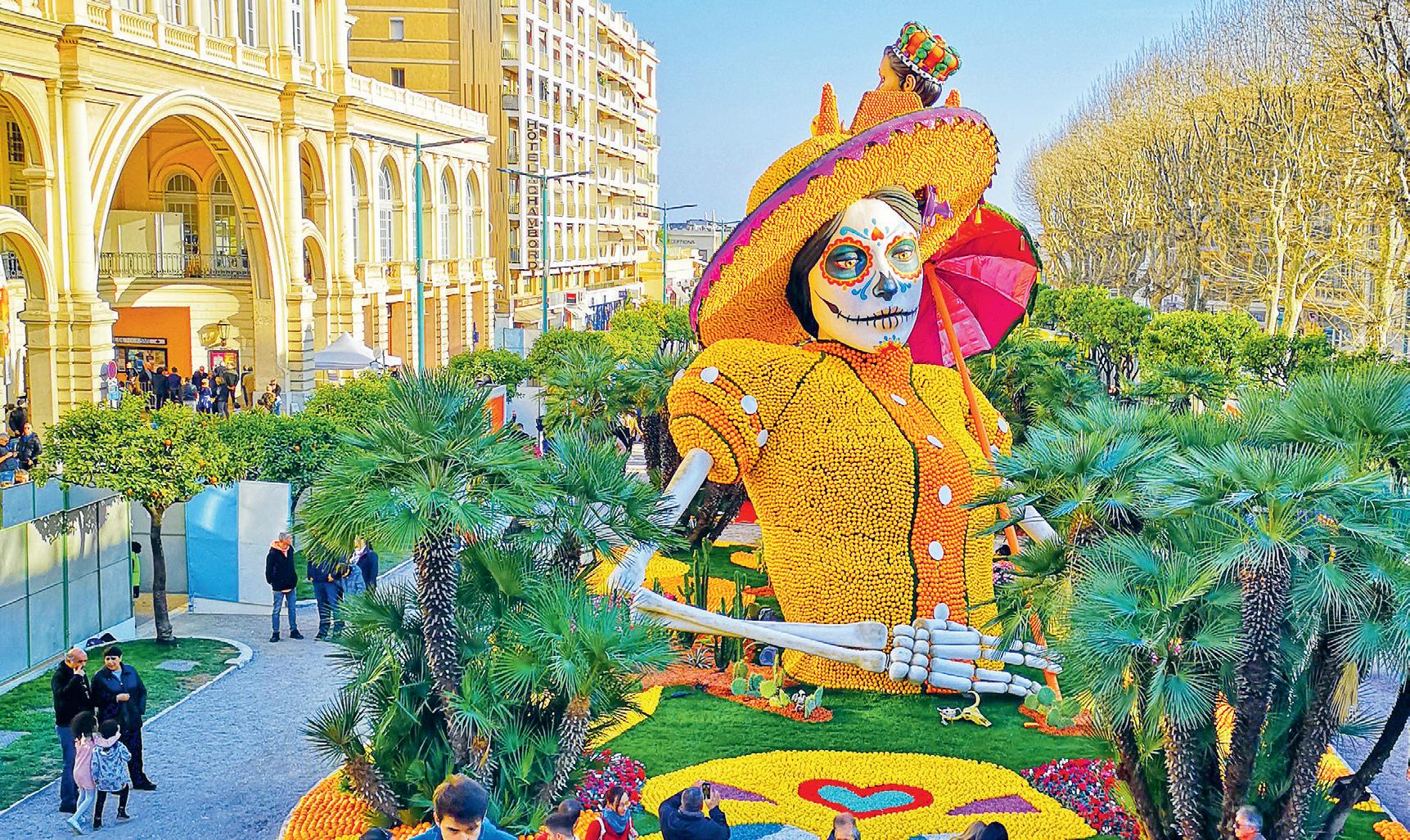
STOP ‘LION’ AROUND!
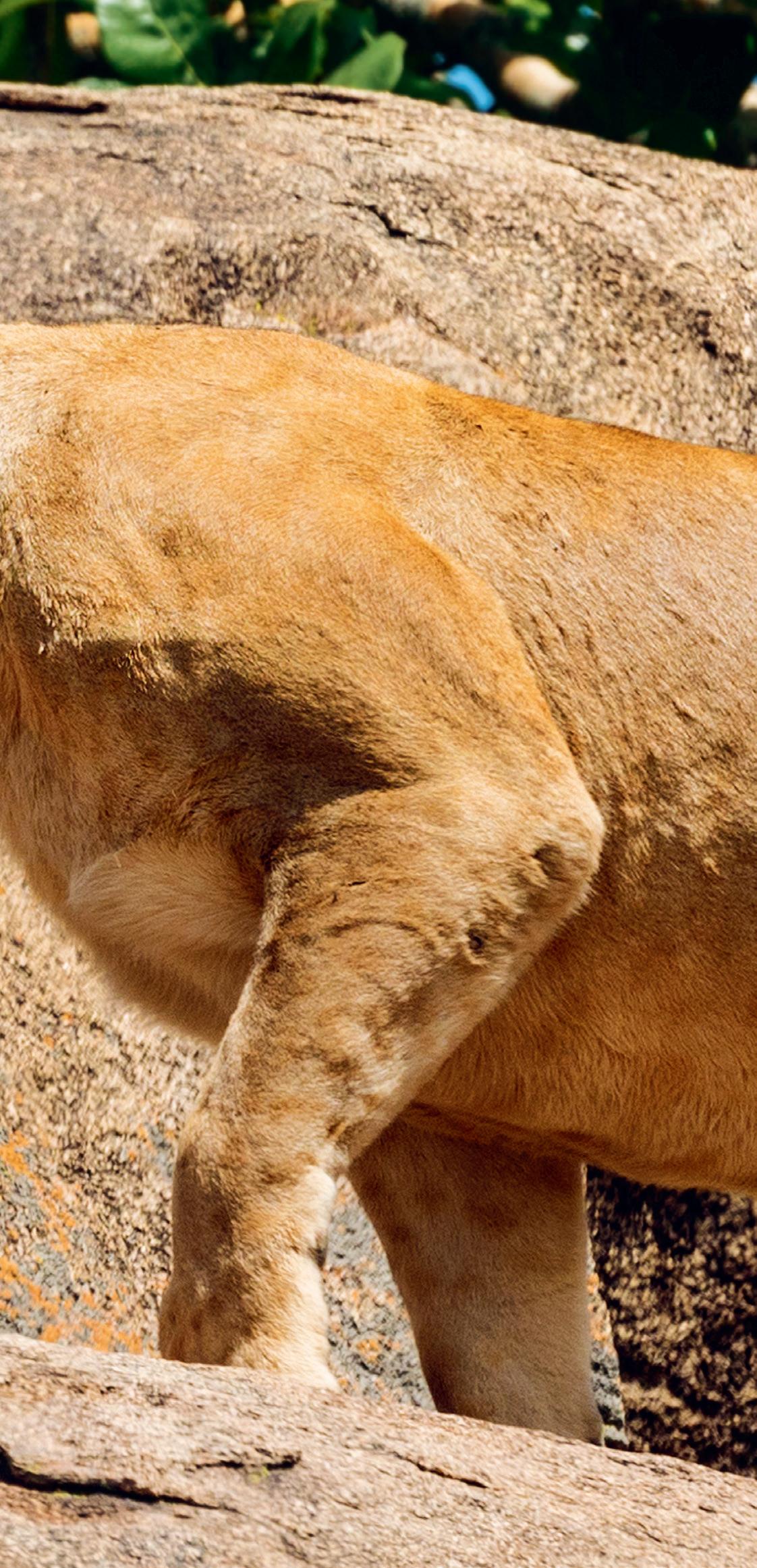



In this hilarious photo, a lioness seems to be yelling into a lion’s ear. The photographer titled his picture ‘Nagging Is a Universal Concept’, as it seems like it could be a scene from a couple’s row! In reality, lions don’t pair up and get married in the way humans do. They live in groups of about 15.
COMEDY WILDLIFE PHOTOGRAPHY AWARDS 2024/SCOTT FRIER
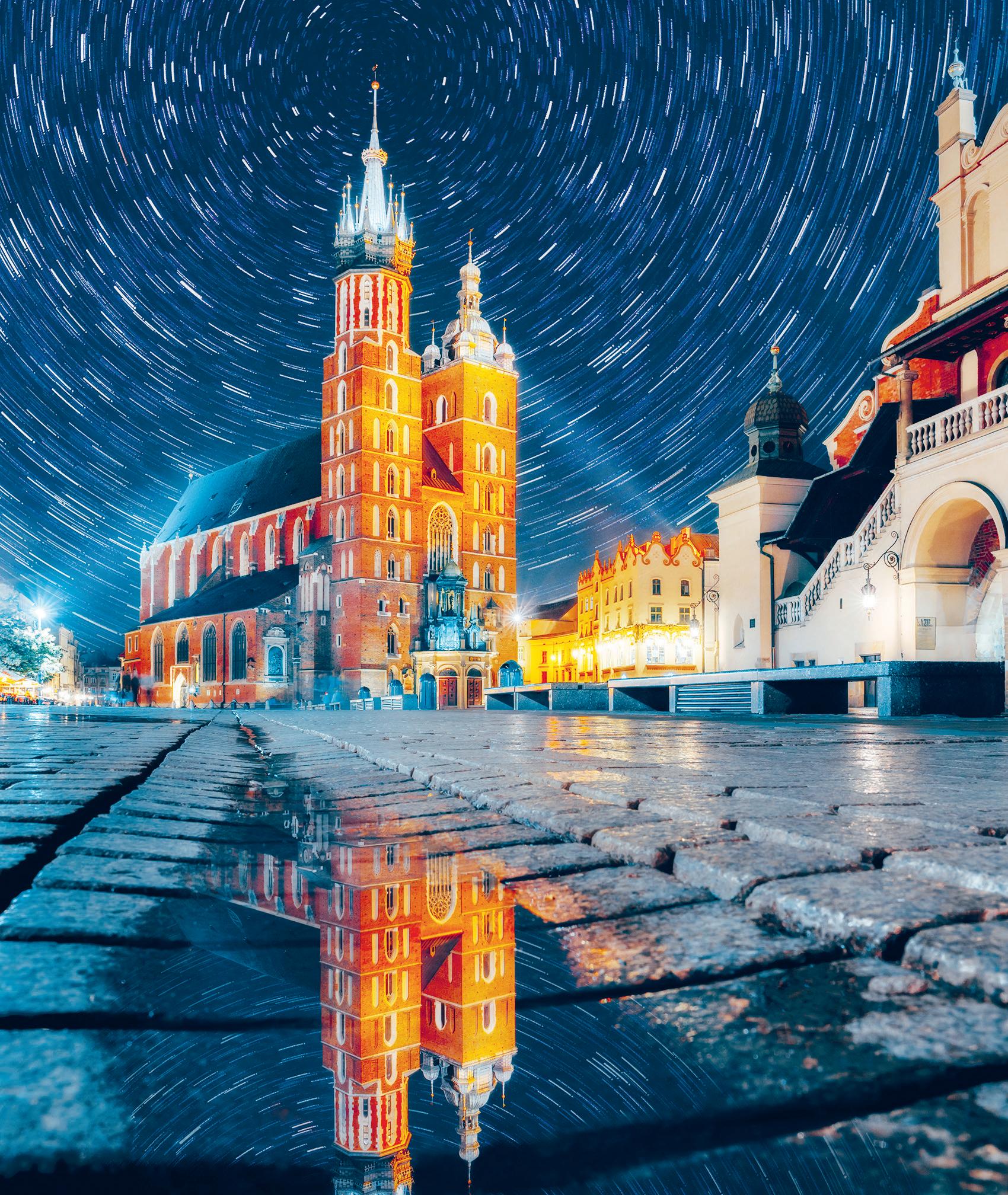
HEAVENS ABOVE
Robert Fülöp took this time-lapse photo of St Mary’s Basilica in Krakow, Poland, to show its timeless beauty. The stars move over time while the church stands still.
EUROPEAN PHOTOGRAPHY AWARD 2024/ROBERT FÜLÖP





This striking image was created using a special method and a microscope. It shows a very zoomed-in view of a human skeletal muscle that has been stained with different colours. The red parts are muscle fibres and the blue parts are connective tissue. The thick blue lines are a type of tissue that groups muscle fibres into bundles.
SCIENCE PHOTO LIBRARY/ JOSE CALVO

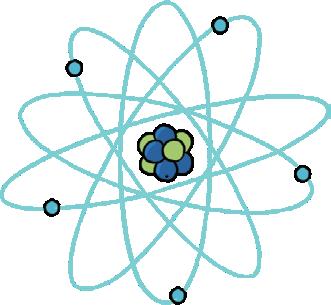
The latest astonishing discoveries, inventions and scientific breakthroughs.
For the very first time, part of a space rocket has been caught in mid-air and returned safely to Earth. The SpaceX Starship blasted off from Texas, USA. The bottom part of the rocket, which usually falls into the ocean, was slowed down and caught by mechanical arms on its return. This test will help to design new reusable rockets.

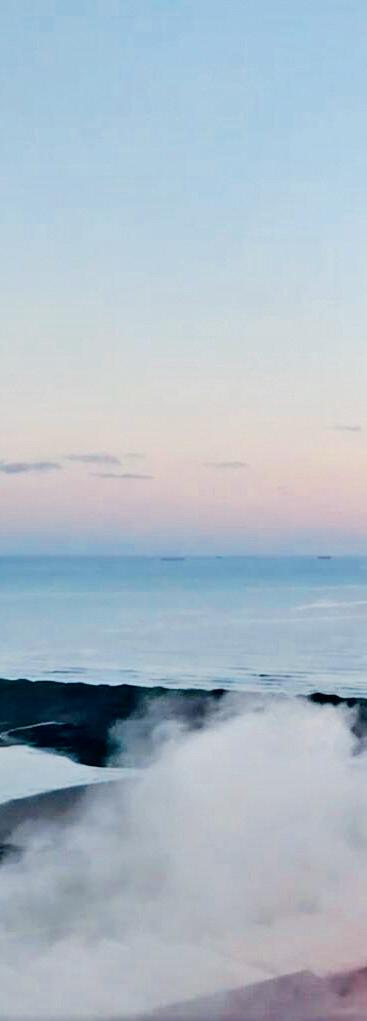
Using AI, scientists have found a single brain cell that responds to the smell of a banana! The same brain cell, or neuron, also fires when a person sees a picture of a banana or even just hears the word ‘banana’. This type of research helps us to understand how the brain stores information.

Do axolotls have their own do
super powers? super powers?
Research shows that axolotls, a type of salamander, seem to be able to slow down their ageing. After a certain point when axolotls are about four years old, these amazing
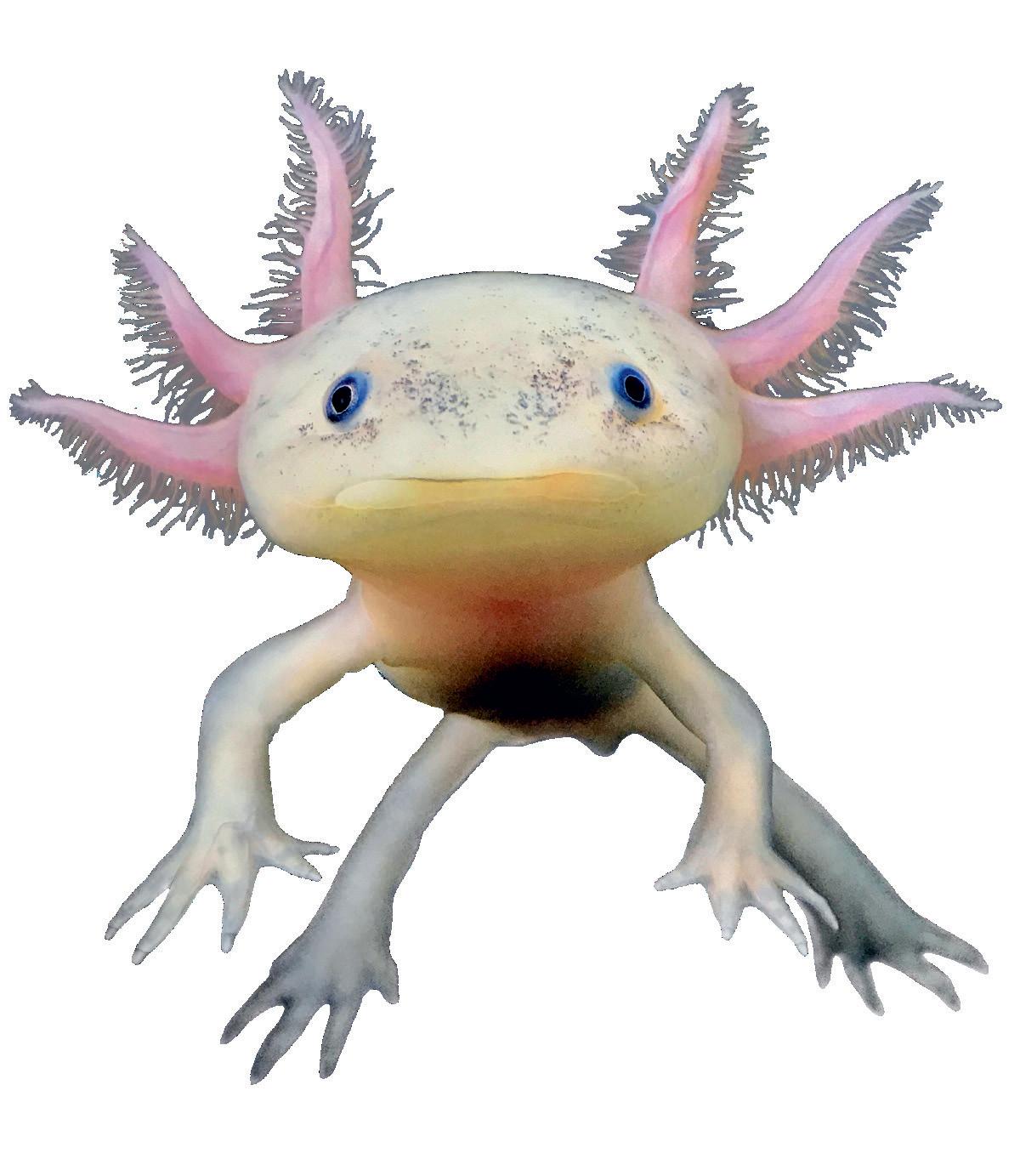
animals age very little. In fact, no one is quite sure what axolotls die of. And, as if that wasn’t enough, axolotls also have the awesome ability to regenerate lost limbs!



The James Webb Space Telescope has spotted a pair of galaxies which NASA has nicknamed ‘The Penguin and the Egg’. The intertwined galaxies’ official name is Arp 142. Although from our perspective the galaxies are close together, they are actually 100,000 light years apart. They have nearly the same mass, which means their gravitational pull on each other is equal, so they don’t merge.
Would you like to egg-splore my galaxy?
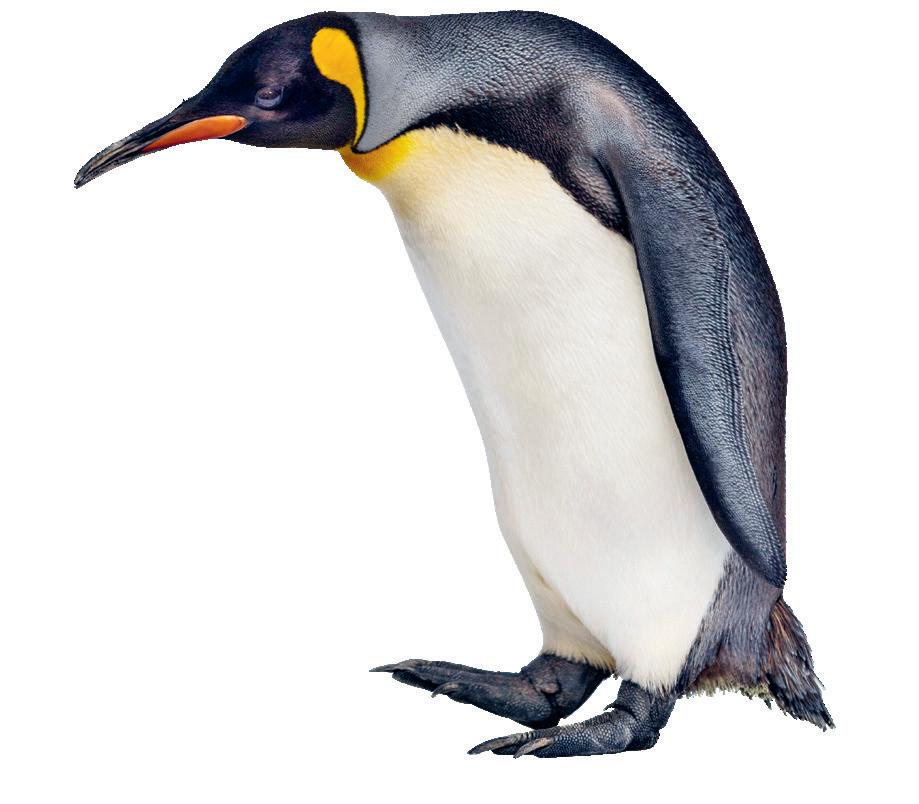

The ‘penguin’ galaxy is shown above, with the oval glow of its ‘egg’ below.

By Dr Nick Crumpton Illustration by Adrienne Barman


Meerkats are incredibly social. While basking in the sun in the Kalahari desert in Africa, meerkats take turns to speak. They have different warnings for different predators and can even let others know how close the danger is.
W H U P - W H U P - W H UP
(Uuuh. I think that’s a jackal in the distance…)
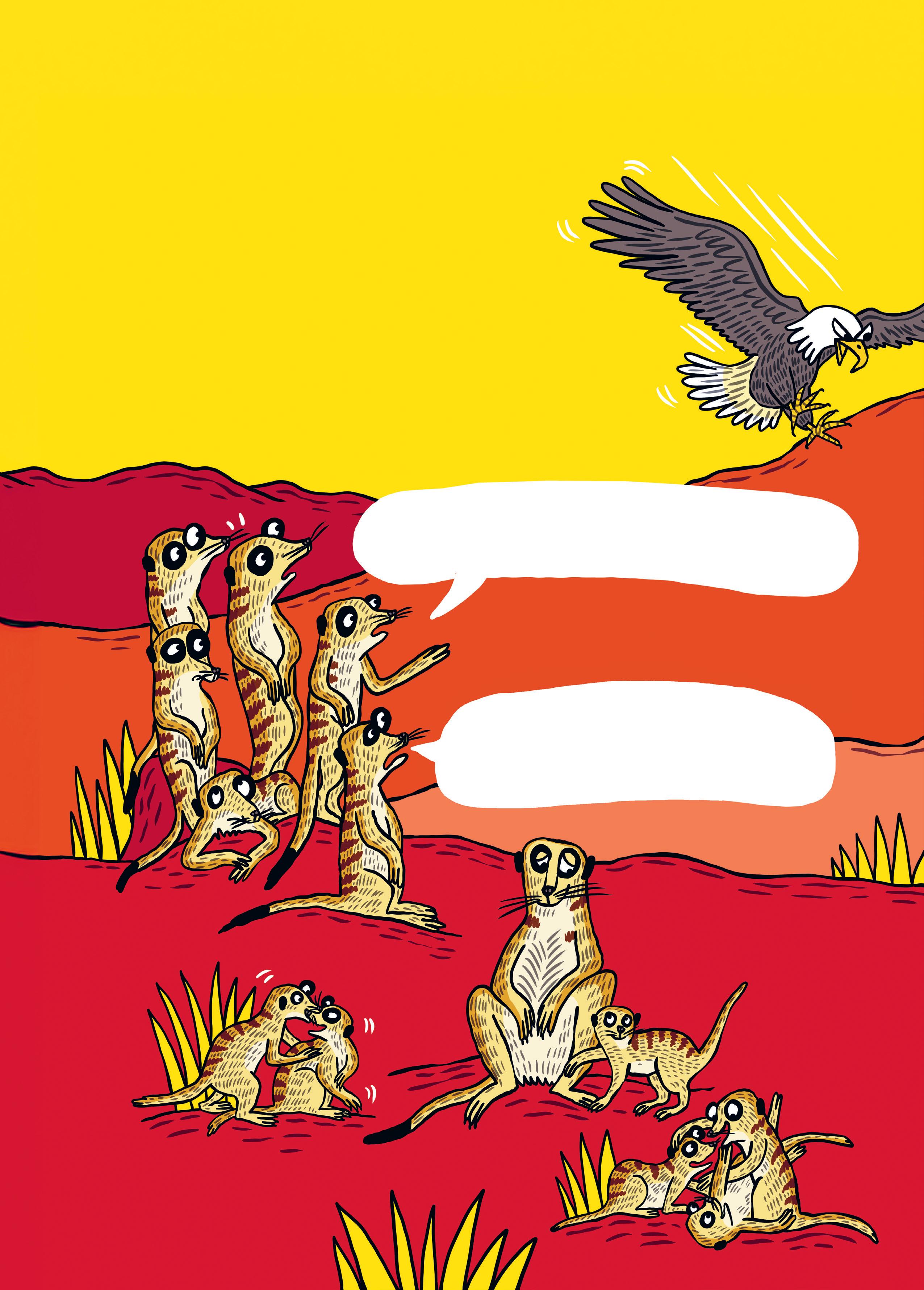
WH U U G H - W H U U GH
(Argh! Yes! It’s definitely a jackal!)
WHUU R G H W U H -WUH.
WHUU R G H W U H -WUH.
(Eep! It’s a bird of prey!)
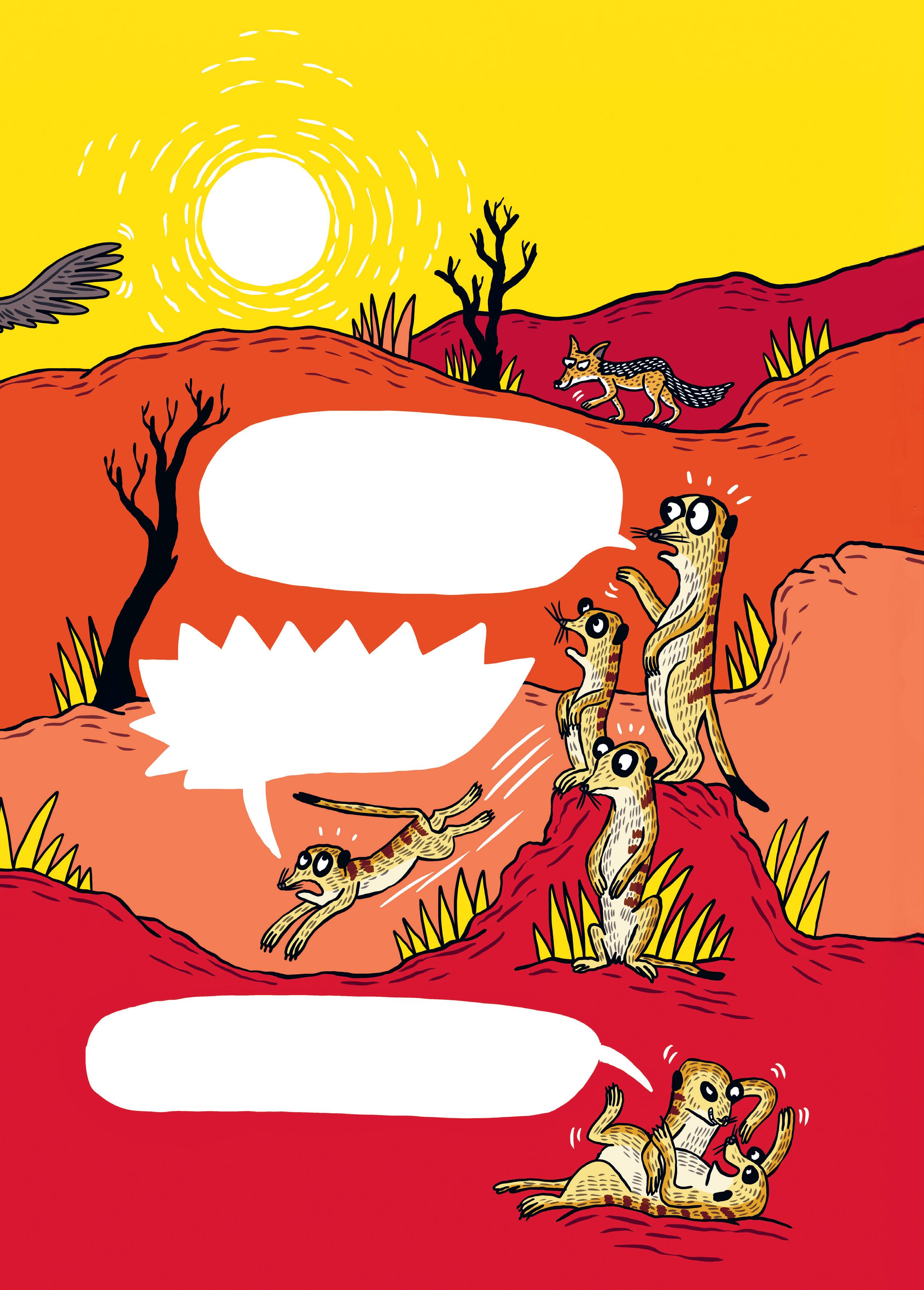
RYAP! RYA P ! R Y A P!
(Let’s get out of here!)
CHP CHUPUP, C H P, C H UPUPUP
(We’re having too much fun!)
Send It In!
We want to hear your best meerkat impressions! Record yourself making the noises listed here and email the file toletters@whatonearth.co.uk
The best meerkat will win a copy of the new book HowtoChatChicken!

LOST LETTERS: Meet the letters that have disappeared from our alphabet.
By Alison Eldridge
Illustrations by Susanna Hickling
English speakers learn in primary school that there are 26 letters in the alphabet. These 26 letters, alone and combined with each other, make up all the sounds and words in the English language. It seems like it must have been that way from the beginning! But actually the number of letters and symbols used in English (and in other languages) has changed over time. Here are some symbols that were once used in English but have since disappeared.
English is more than 1,500 years old, and it has changed a lot over time!
THORN AND ETH: Both of these symbols were used for a soft ‘th’ sound, as in the word ‘maths’. Both of them were used for quite a long time, but eth stopped being used in the 1200s and thorn stopped being used in the 1400s.
THAT: This came from the thorn (above) with a stroke added at the top. The symbol was used as an abbreviation for the word ‘that’. It stopped being used in the 1300s.
AMPERSAND: Some people do still use this symbol to mean ‘and’, although you might be surprised to know that it used to be taught as a 27th letter of the alphabet! It comes from Latin, in which the letters for ‘et’, meaning 'and', were combined.
LONG S: This was used for S at the beginning or in the middle of words, or as the first of two Ss in words such as ‘passing’.
WYNN: This was a rune for the 'w' sound. It became the W we know today because of the influence of French.
ASH AND ETHEL: These joined-up letters used to be a single symbol, but now we usually separate them, in words such as ‘encyclopaedia’and ‘oesophagus’.
ENG: This symbol was meant to stand for the ‘ng’ sound in words such as ‘sing’. If you’ve been reading Word Up! for a while, you might recognise this symbol from the International Phonetic Alphabet!


1958
The year in which the very first video game, Tennis for Two, was invented.
520 million
The number of copies of Tetris that have been sold, making it the world’s bestselling video game.

135 NintendoThenumberofyears hasbeenmaking games.Whenthecompany itwasfoundedin1889, madeplayingcards.
$3 million*
The largest prize awarded to an individual esports player, won in 2019 by Kyle Giersdorf at the first Fortnite World Cup.
2.6 billion
The number of gamers worldwide.
90
The age in years of Hamako Mori (who goes by the name ‘Gamer Grandma’) when she was recognised by Guinness World Records as the world’s oldest YouTube gamer and esports player.
1,025
The number of Pokémon that appear in the Pokémon series of games.
200+
The number of games in the Super Mario franchise, making it the series with the most games.
366
The length in centimetres of the world’s largest video game controller. It requires at least two gamers to press (or jump on) the buttons!
*This is equivalent to almost £2.5 million!
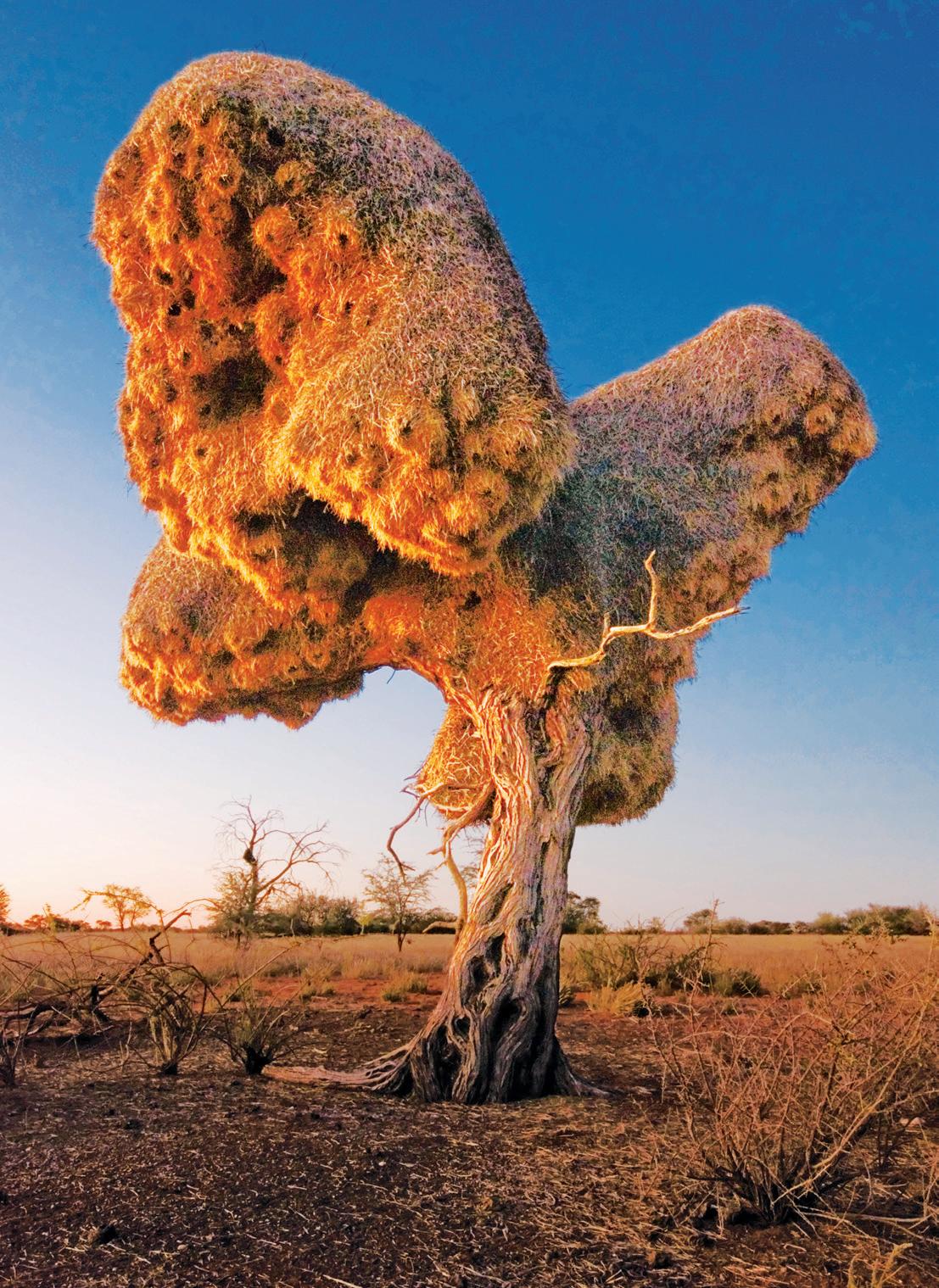
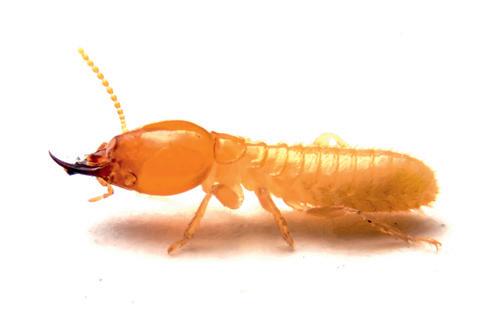
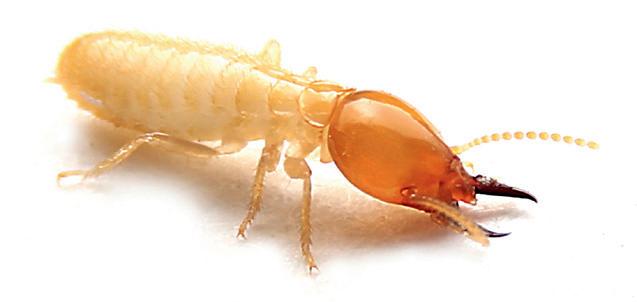

These enormous birds’ nests – the biggest on Earth – can be more than six metres wide! Four hundred birds can live in a nest at one time. They place spiky straws at the entrance tunnels to ward off predators.
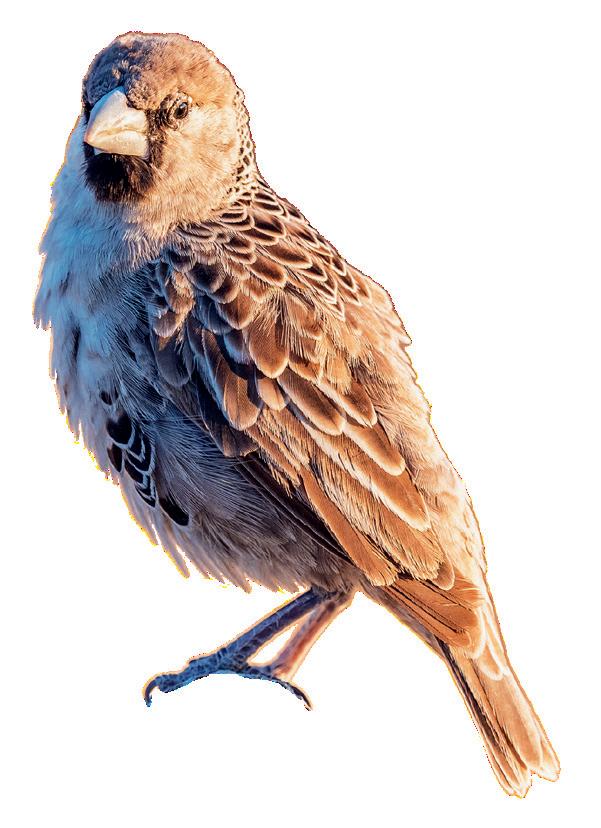
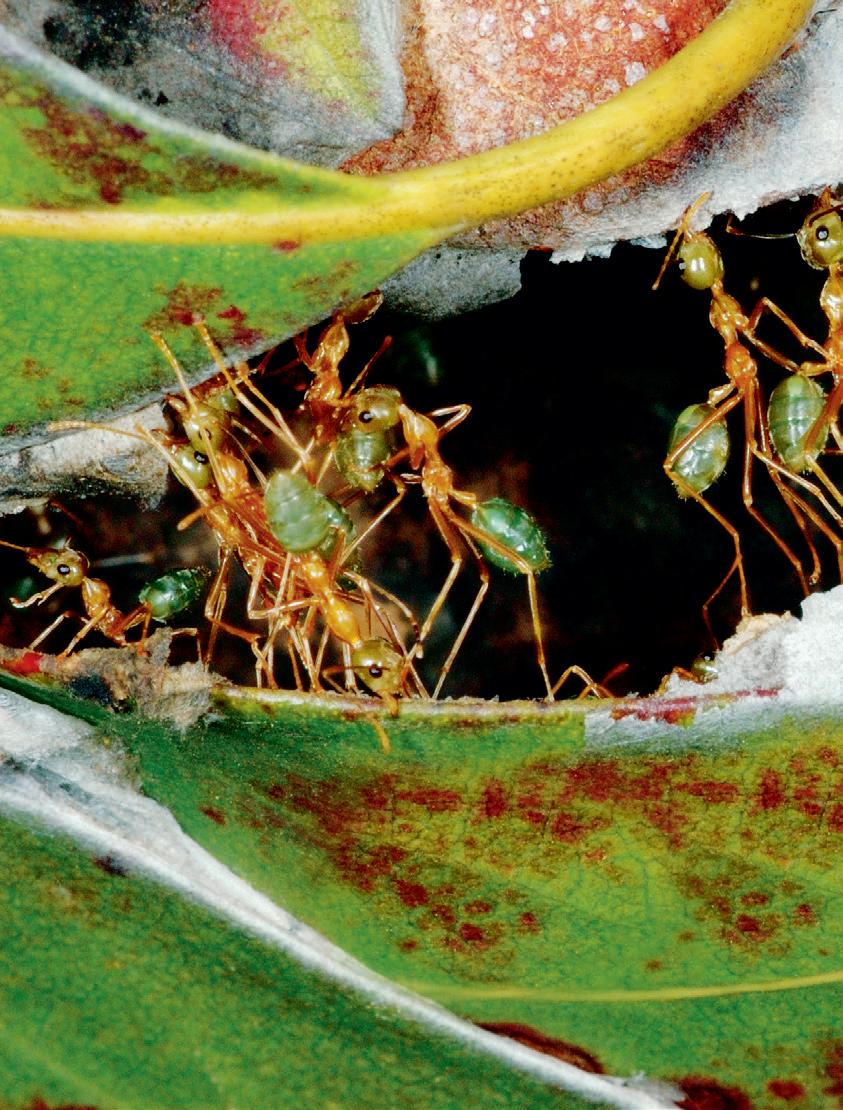
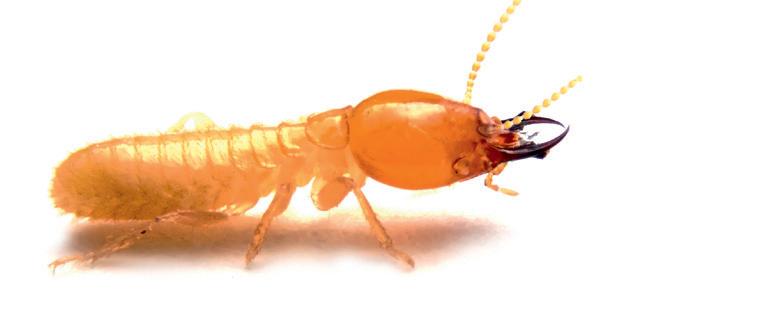
Termite mounds can stretch up to seven metres high, which is taller than a giraffe! They are made from mud, chewed wood, saliva and termite poo. They have airconditioning systems that move hot and cold air around inside.
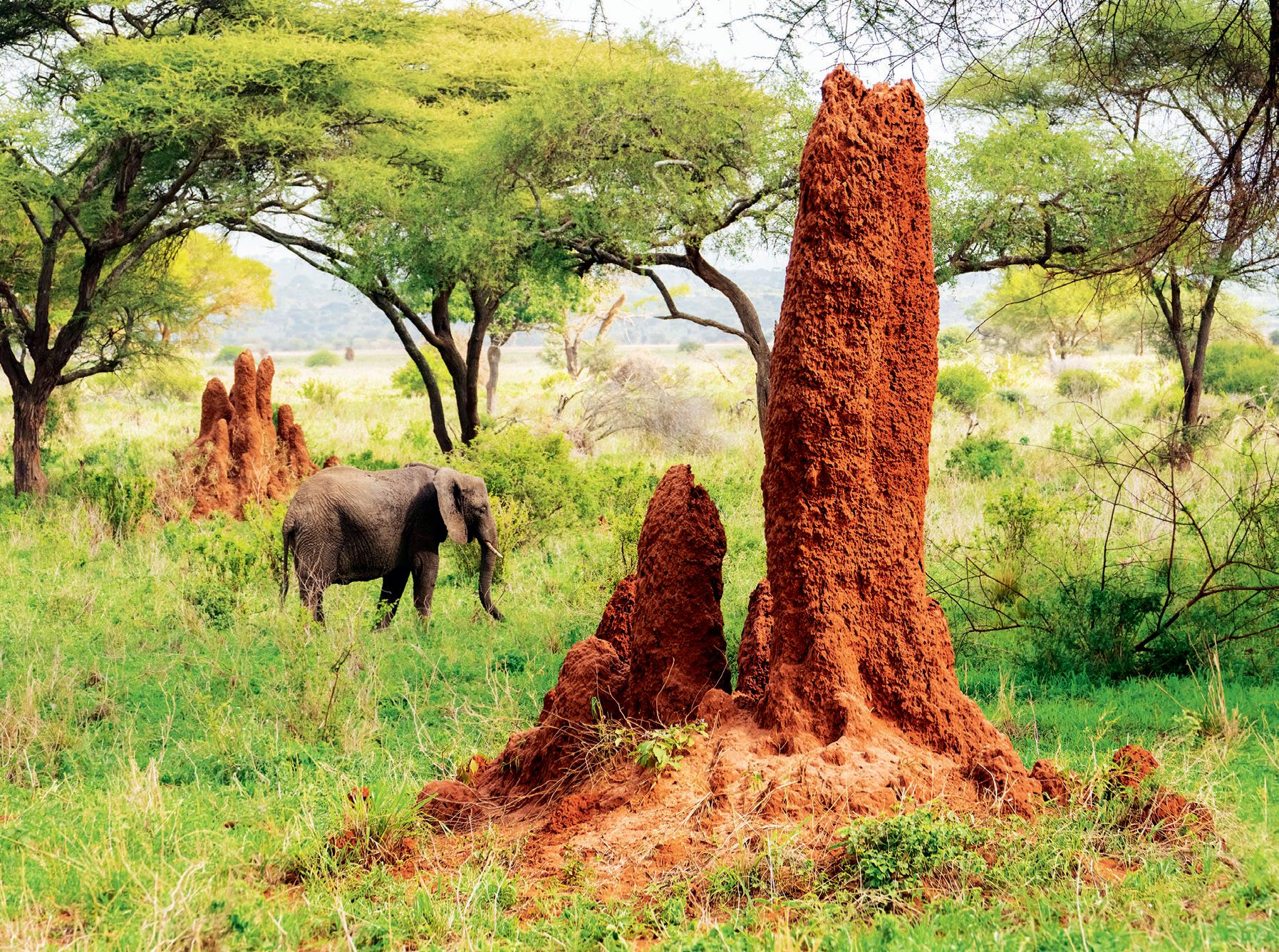
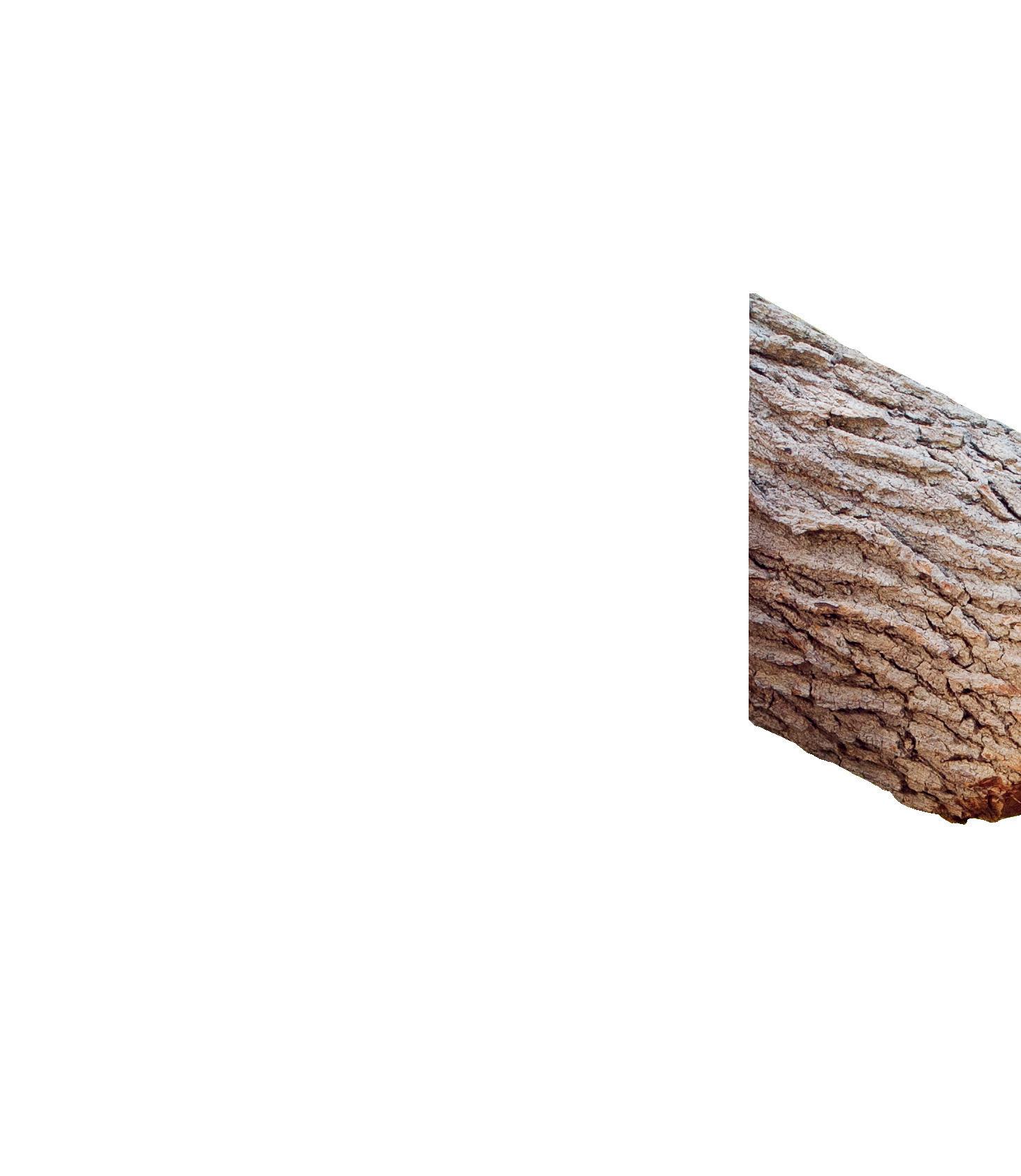
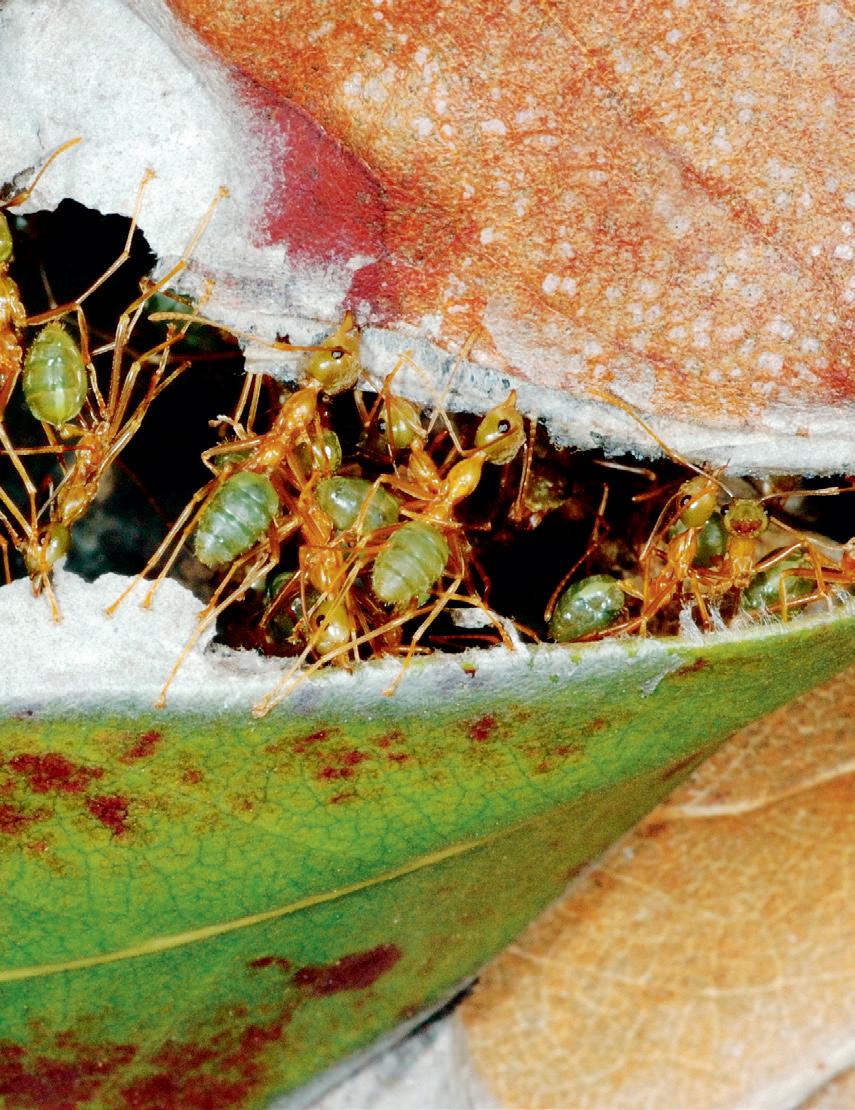
Weaver ants live in trees and create their unique nests by sewing leaves together using silk produced by the ants’ larvae. Their nests can stretch between trees for hundreds of metres!
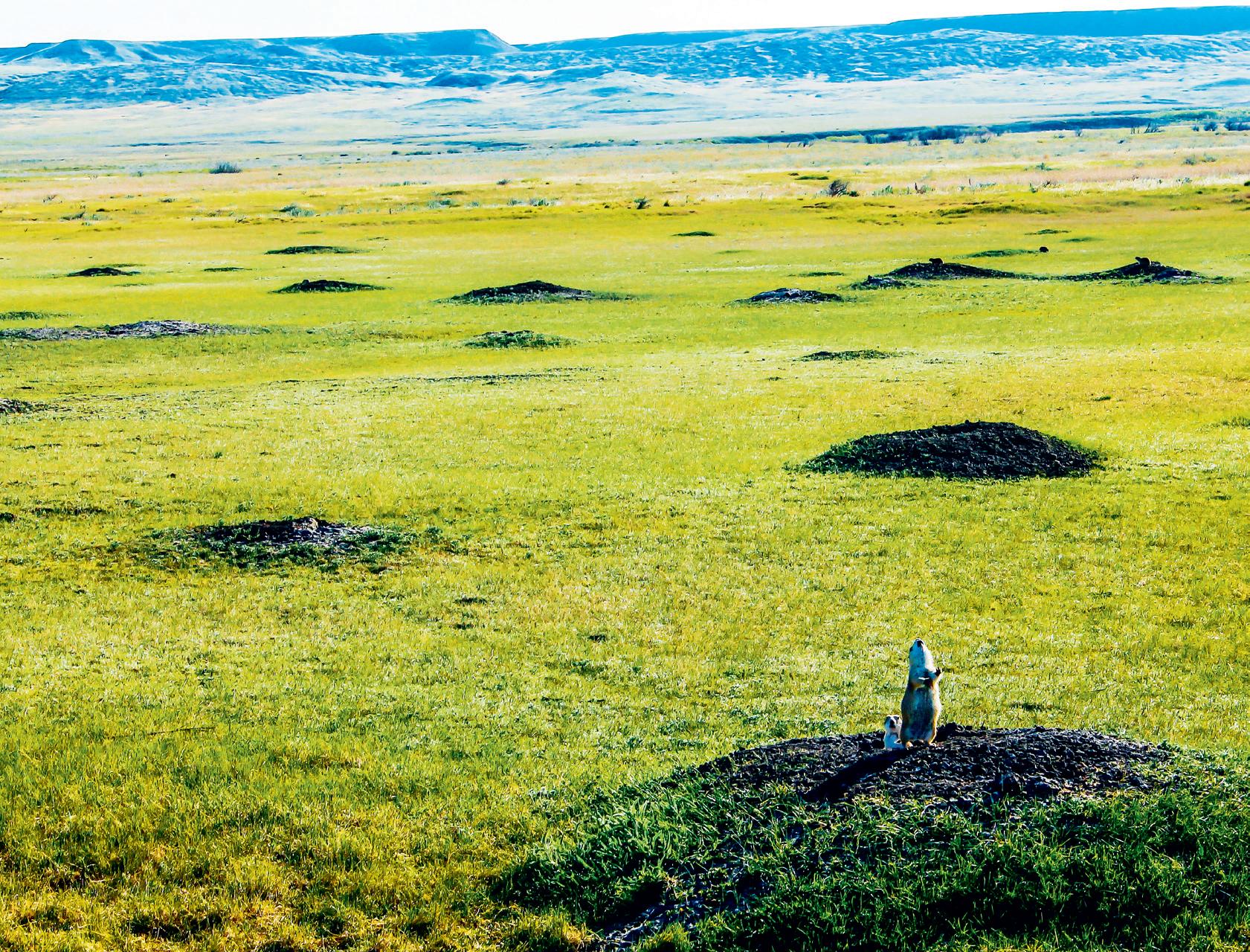
Texas, USA, was home to an estimated 400 millionprairie Take
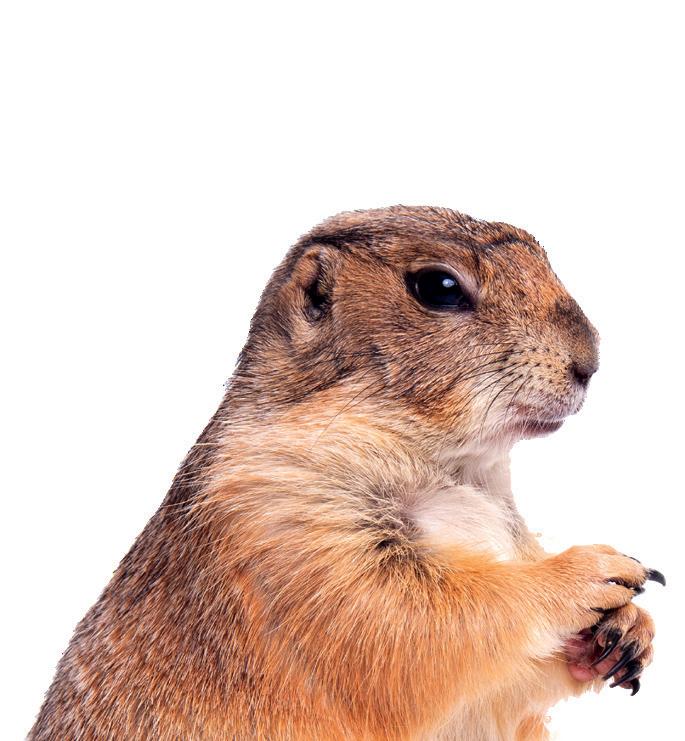
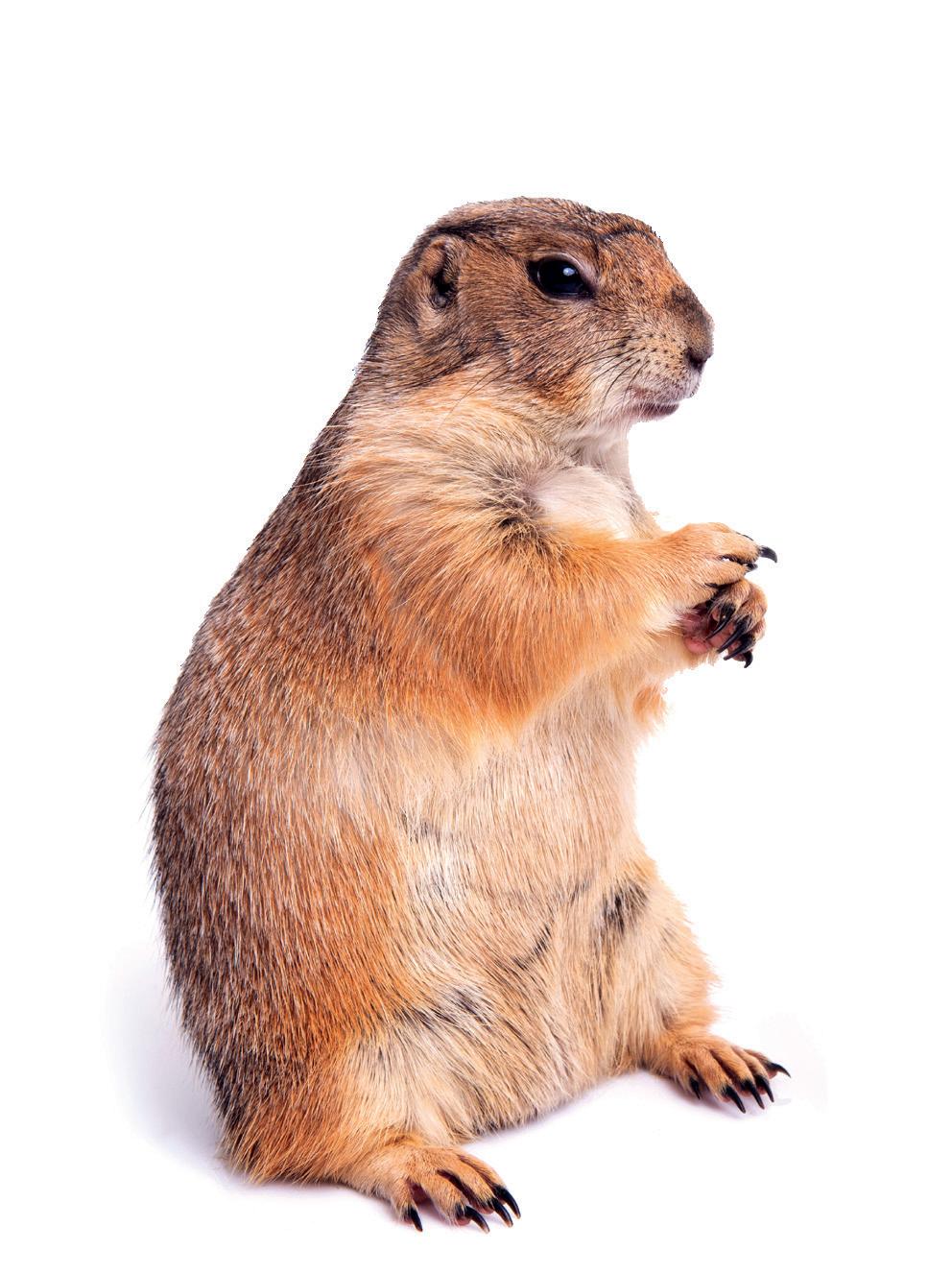
Prairie dogs are rodents related to squirrels that live in networks of underground tunnels that can stretch for kilometres. They include storerooms for food and ‘nurseries’ for baby prairie dogs.
Beavers build dams to create deep pools of water that protect them from predators. They then build lodges in the pools from branches and mud. The lodges are dry inside but have sneaky underwater entrances!
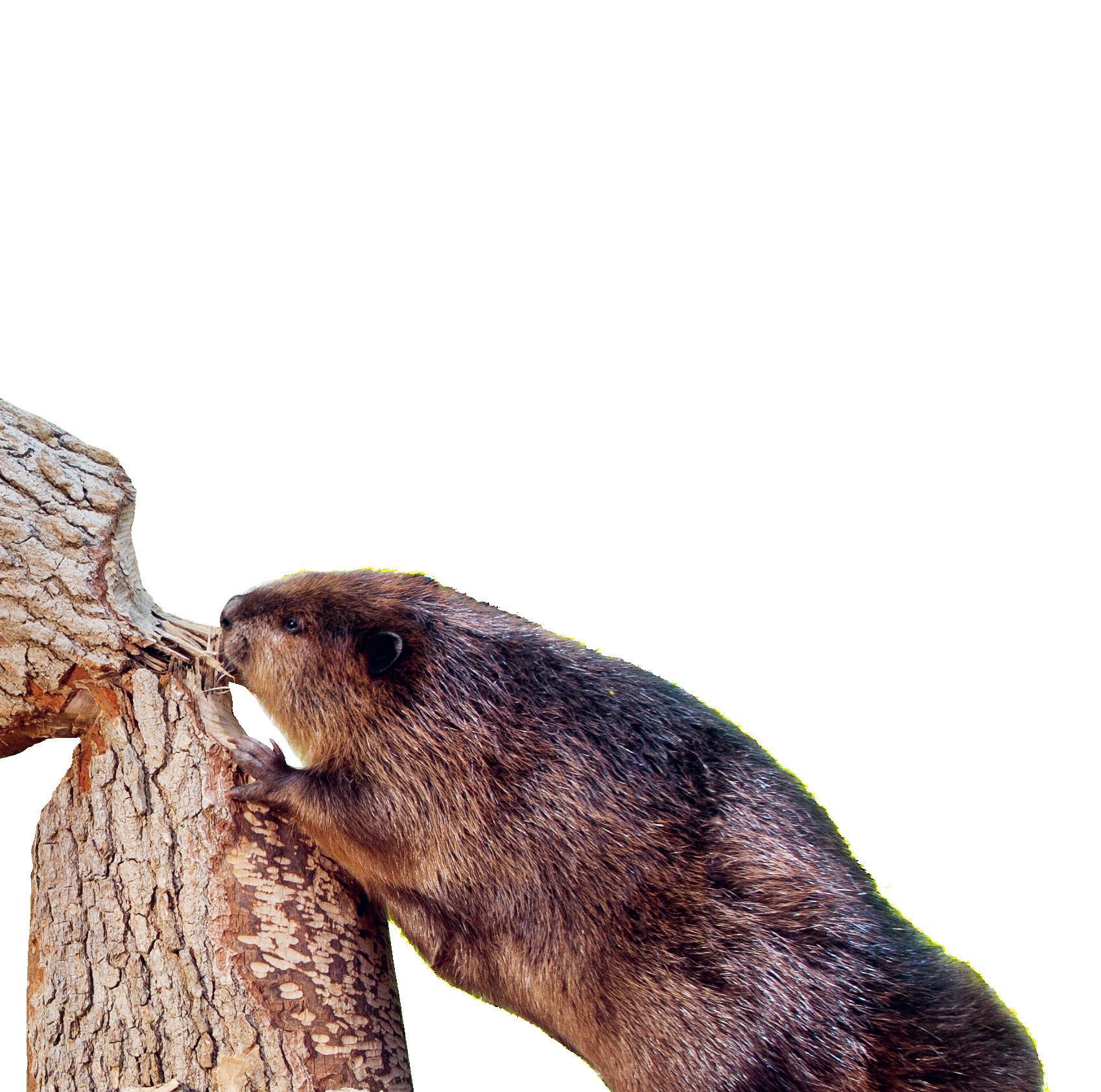
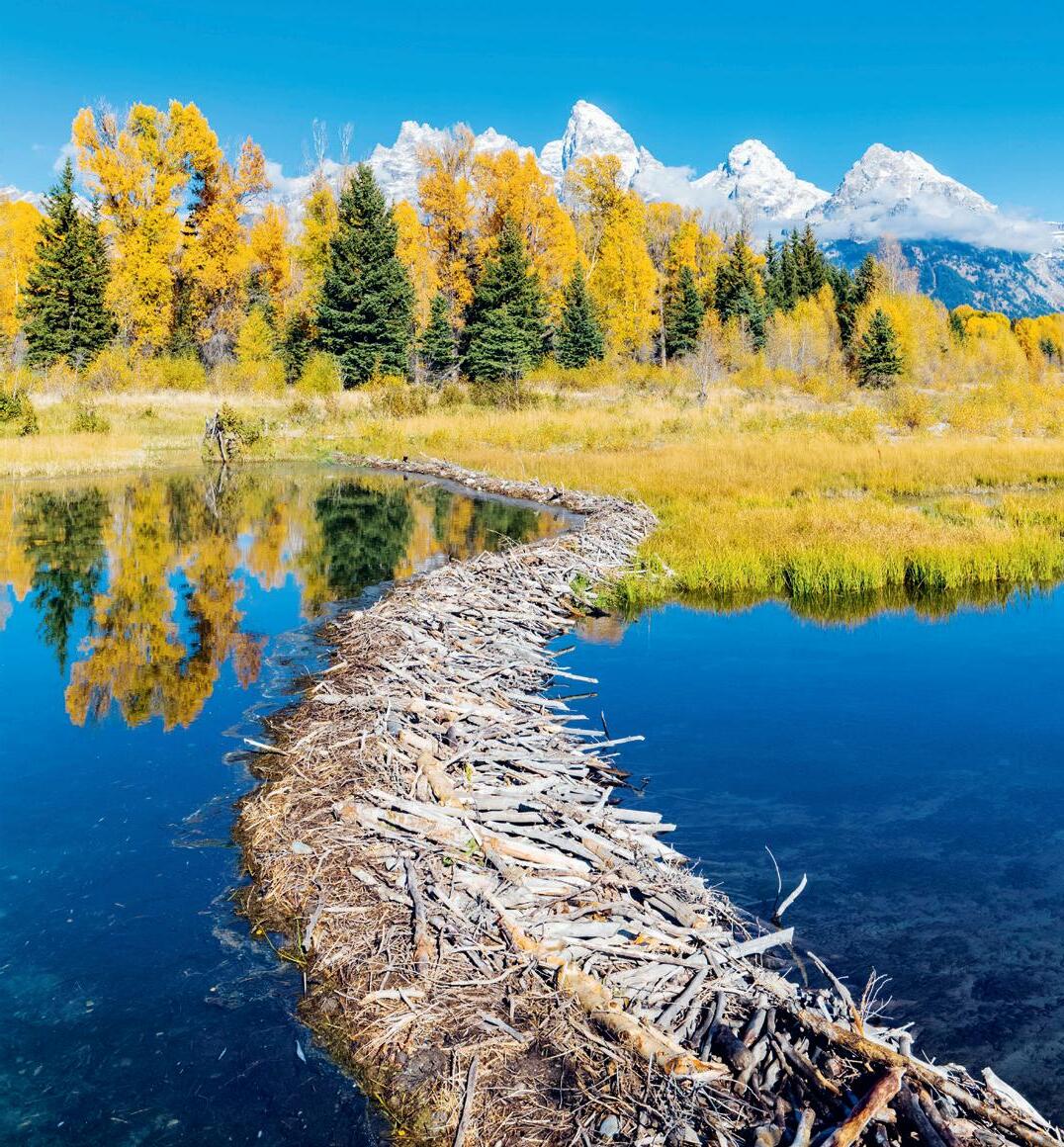
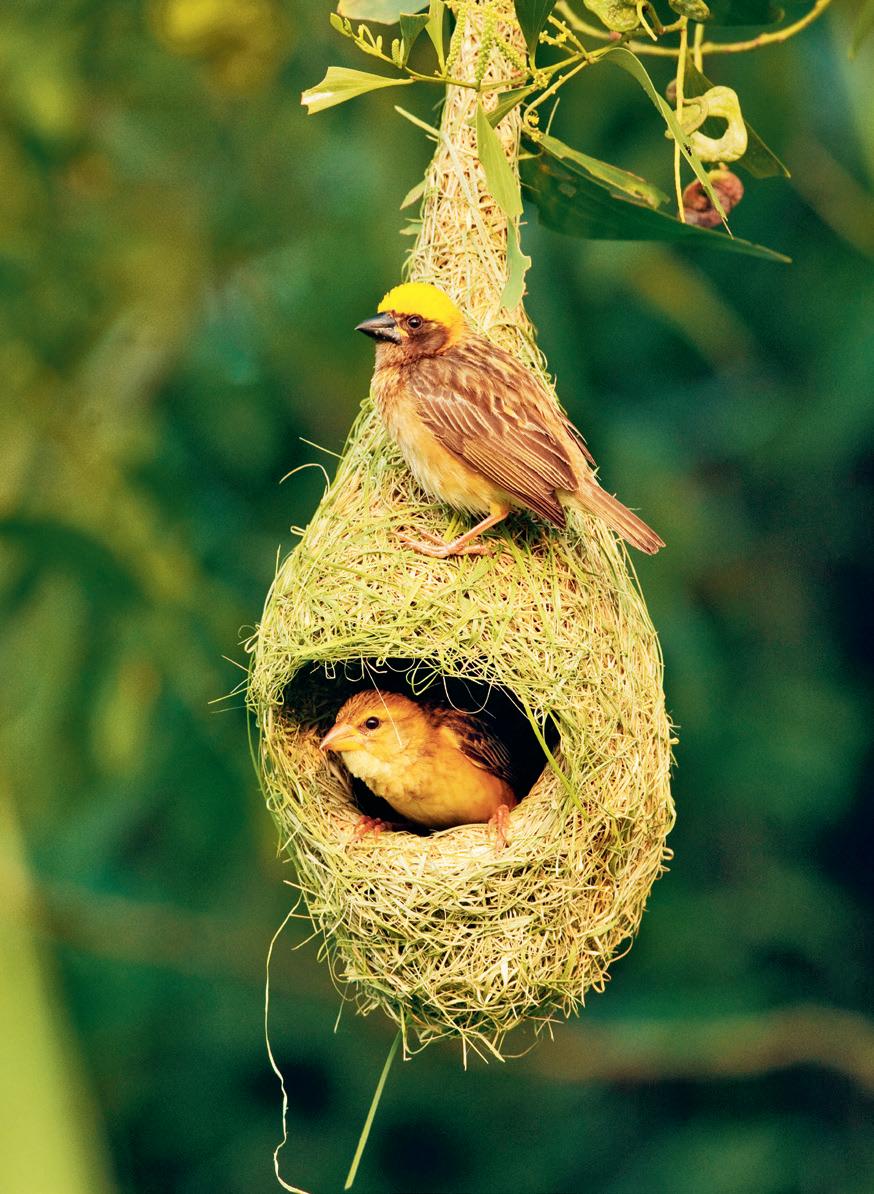
BAYA WEAVER NESTS
The male baya weaver bird builds its nest by weaving together grasses and plant fibres using its beak and feet. It can take more than 500 trips for the bird to collect all the building materials and up to 18 days to finish a nest!
Experience the wonder of pyramids as we find out the answers to all your questions, including who built these amazing structures, how they they did it, where you can find them – and more!
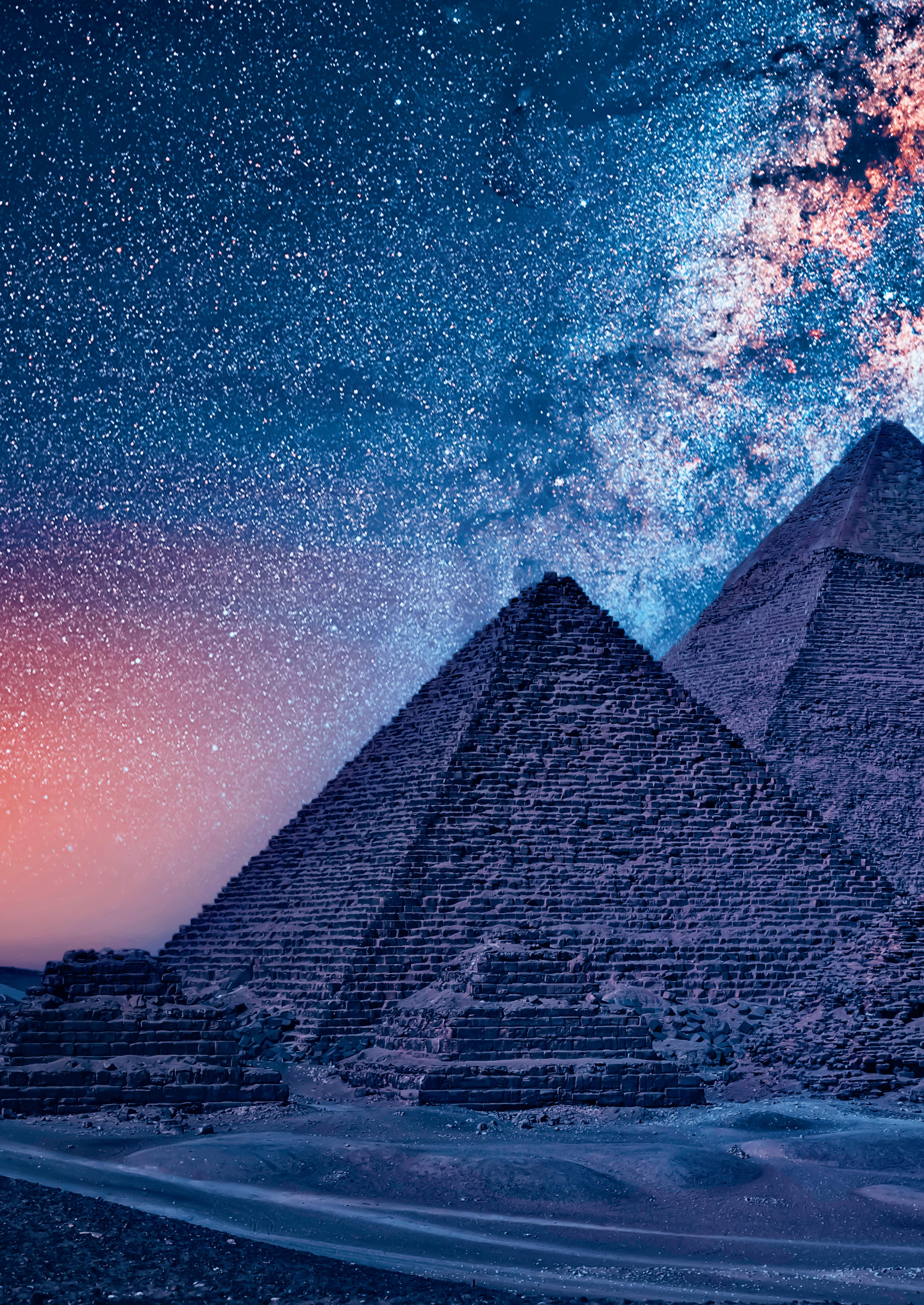
You have probably heard of the pyramids in Egypt, which are shown here under a spectacular starry sky. They are some of the oldest pyramids in the world, built long before modern construction techniques. The people who made them had to work very hard to cut and carry the stones and think up ingenious ways to stack
the stones to create these enormous structures, which are still standing today, more than 4,000 years later!
The pyramids of Egypt are some of the most famous
pyramids in the world. But did you know that cultures in other countries have been building pyramids for centuries, too? In fact, people are still building them today!
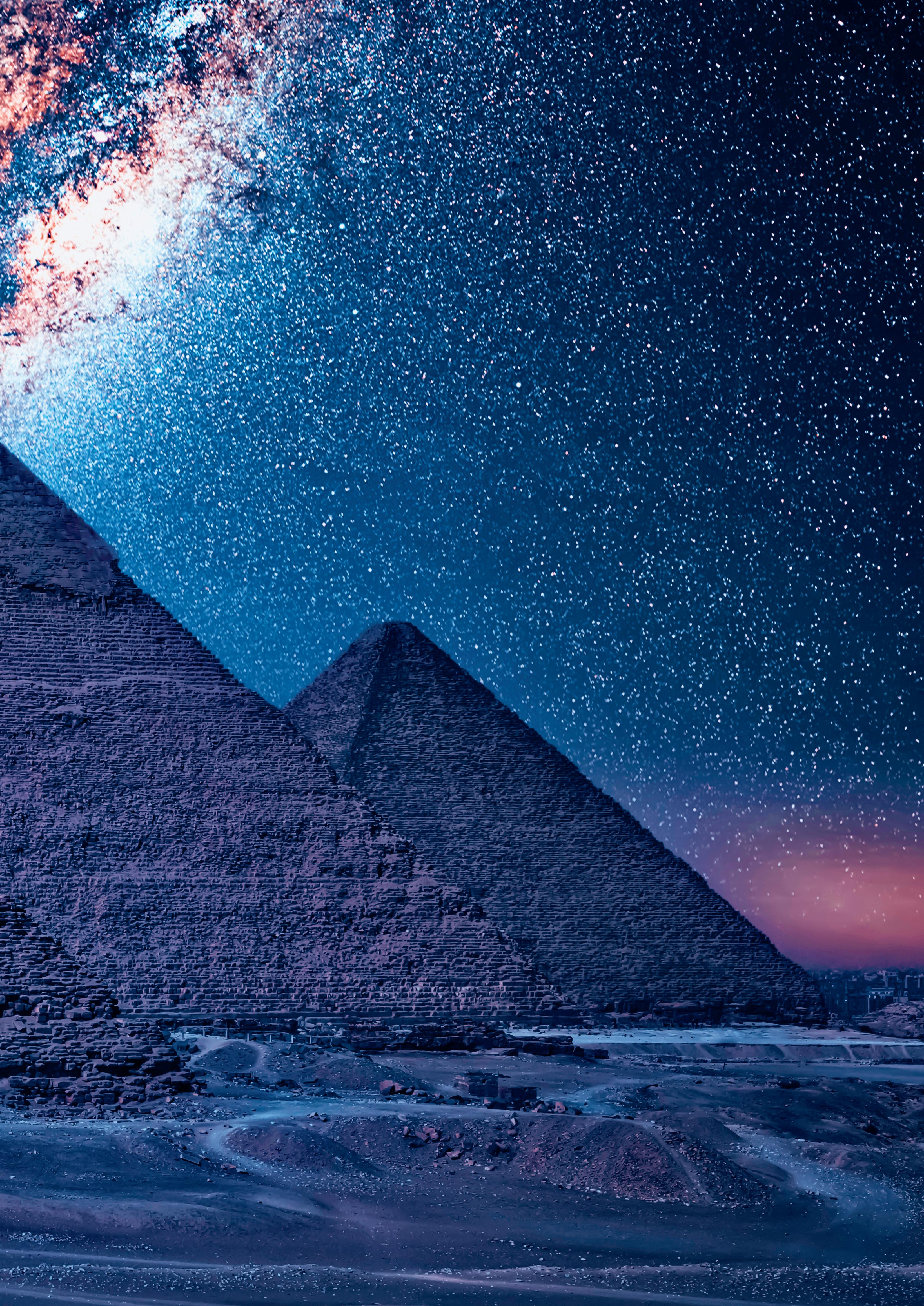
the
Pyramid are popular for lots of reasons. They are grand in size and very sturdy. And can be used as religious places or as monuments to remember people who have died. So, let’s
explore pyramids all around the world, meet the people who built them and find out how they did it. As you are about to discover, pyramidbuilding is an amazing feat!

Pyramids are large structures with a base and sloping sides called faces. The base of a pyramid can be a triangle, a square, a rectangle or another shape with even more sides. The faces of a pyramid are triangles which meet at a point at the top called the apex.
People all over the world have built pyramids. The most famous pyramids are in Egypt, but there are also spectacular ancient pyramids in Sudan, Greece, Italy, India, China, Mexico, the Pacific Islands and many other countries around the world! It is thought that thousands of people were needed to build the pyramids of Egypt. It was once thought that these people were enslaved, but recent evidence suggests that the pyramids were built by free Egyptian people.
Why is the pyramid shape so common?
Cultures all over the world have built pyramid-shaped structures. The pyramid is a very sturdy shape, with a strong base. Because a pyramid tapers, or narrows, as it goes up, this allows its weight to be distributed evenly across its base. This means that pyramids can be built very tall without using modern engineering methods and materials, such as concrete and steel. Pyramids’ sloping sides also make them more resistant to the weather. This is because wind, rain and desert
Above: the pyramids of Meroe in Sudan. Right: the pyramids of Güímar on the Spanish island of Tenerife.
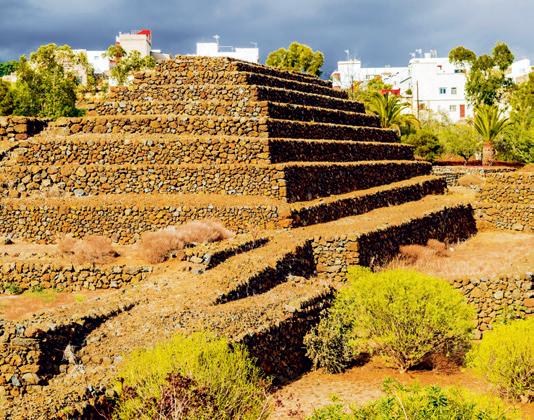
sandstorms can flow over a pyramid’s faces, causing less erosion than they would when striking a flat, perpendicular wall. This is one of the reasons there are more than a thousand ancient pyramids still standing around the world today!

The oldest pyramid in the world is thought to be the Pyramid of Djoser, built in Egypt in the 2600s BCE. Some experts think the prehistoric site of Gunung Padang in Indonesia (above) could maybe claim its title. There is a pyramid-like structure there, but it is unclear whether it was built by humans or not. If it was, it would be the oldest, as it could be as much as 27,000 years old!
What are pyramids made of?
The Egyptian pyramids are made of huge stone blocks as well as baked mud bricks. But that’s not the only way to build a pyramid… The pyramids of Güímar in Tenerife, for example, are made of lava stones. A huge pyramid in Syria was made largely of dirt! Modern pyramids are built in a similar way to other 21st-century buildings, using materials such as concrete, steel and strengthened glass.
How long do pyramids take to build?
The pyramids of Egypt are estimated to have taken between 15 and 30 years each to complete. Not all pyramids take this long to build, however. The Pyramids of Meroe in Sudan are much smaller, and the largest of these may have only taken about a year to build.
Why did so many different ancient peoples build pyramids?
In ancient times, building a large pyramid required enormous resources of raw materials, labour and engineering skill. This made building pyramids a way for ancient societies

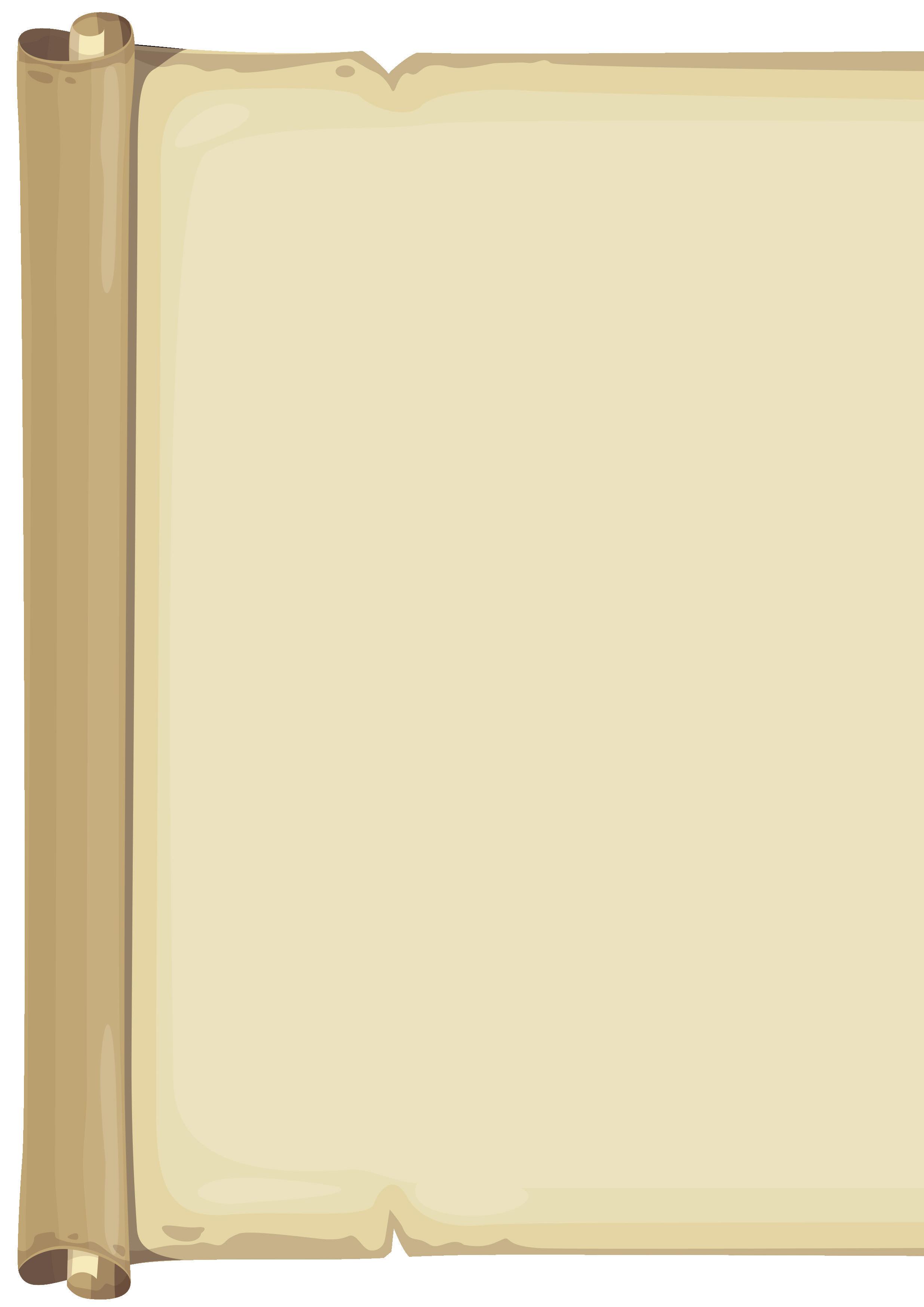
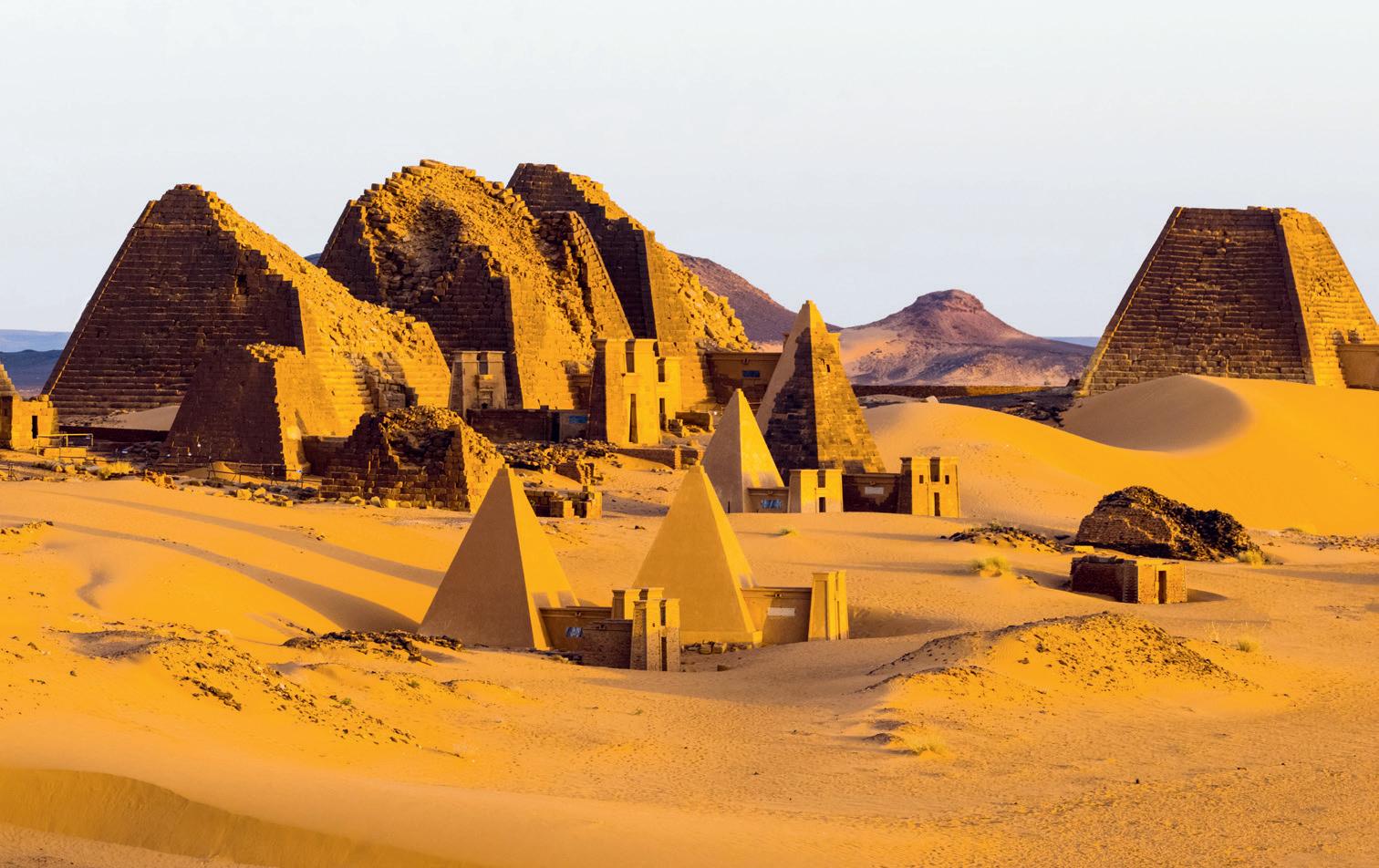
Ancient pyramids are a true marvel of engineering. The huge stone blocks that make up Egypt’s pyramids, for example, can weigh up to 90 tonnes each, which is more than 10 African elephants!
Without modern construction equipment, it was a staggering feat to stack up these massive slabs of stone to form a pyramid. Scientists still aren’t entirely sure how it was done. Some theories involve teams of people

pulling the giant stones on huge sledges or rolling them along on wooden rollers. Recent studies have shown that in order to construct the Pyramid of Djoser, the ancient Egyptians might have used the
power of water! It is possible that they constructed a hydraulic lift, which is a mechanical device that uses water pressure and a pulley system to raise and lower a platform carrying the massive stones.
to demonstrate their power, wealth and mastery of technology. It is thought that pyramids also had important symbolic value. Some may have been attempts by human architects to mimic the scale and majesty of the mountains, volcanoes and giant sand dunes which they saw in the natural world around them. Many pyramids were built as tombs, to house the bodies of kings and queens and other important people. Others were religious places.
There are thought to be more pyramids in North and South America than in the rest of the world combined!
DID YOU KNOW?

4
The flooded chamber would then be used to float the stones upwards to be placed on each tier.
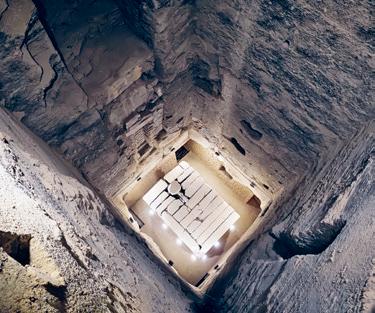
Stones weighing 100 tonnes would be rolled onto wooden rafts in the centre of the chamber.
Because pyramids come to a point, or apex, at the top, it is thought that some cultures liked pyramids because they pointed to the sky, at the stars or even towards heaven. The Great Ziggurat of Ur in ancient Mesopotamia (now in Iraq) was built with a temple at the top where the gods were said to live. El Castillo in Mexico was built to align with the spring and autumn equinoxes. At the equinoxes, the angle of the Sun creates a shadow of the pyramid’s edge that makes it look as if the mythical serpent Kukulcan is slithering down the pyramid’s steps!


Built more than 4,500 years ago by the Egyptian King Khufu, the Great Pyramid is a true wonder of the ancient world. Here we look inside to reveal some of its hidden secrets…
The Great Pyramid of Giza (which is also called the Great Pyramid of Khufu, after the Egyptian king who ordered its construction) is among the oldest and most awe-inspiring monuments on Earth. In fact, it is the only
The Pyramids of Giza were built between around 2575 and 2465 BCE.
one of the Seven Wonders of the Ancient World that is still standing today.
The details of the Pyramid’s construction are staggering. It was built from an estimated 2.3 million blocks of stone, each weighing 2.25 tonnes.
The final structure took around 20,000 workers two decades to complete. Initially standing at 147 metres tall, the Pyramid remained the tallest building on Earth for 3,800 years, until it was surpassed by Lincoln Cathedral in England in 1311.
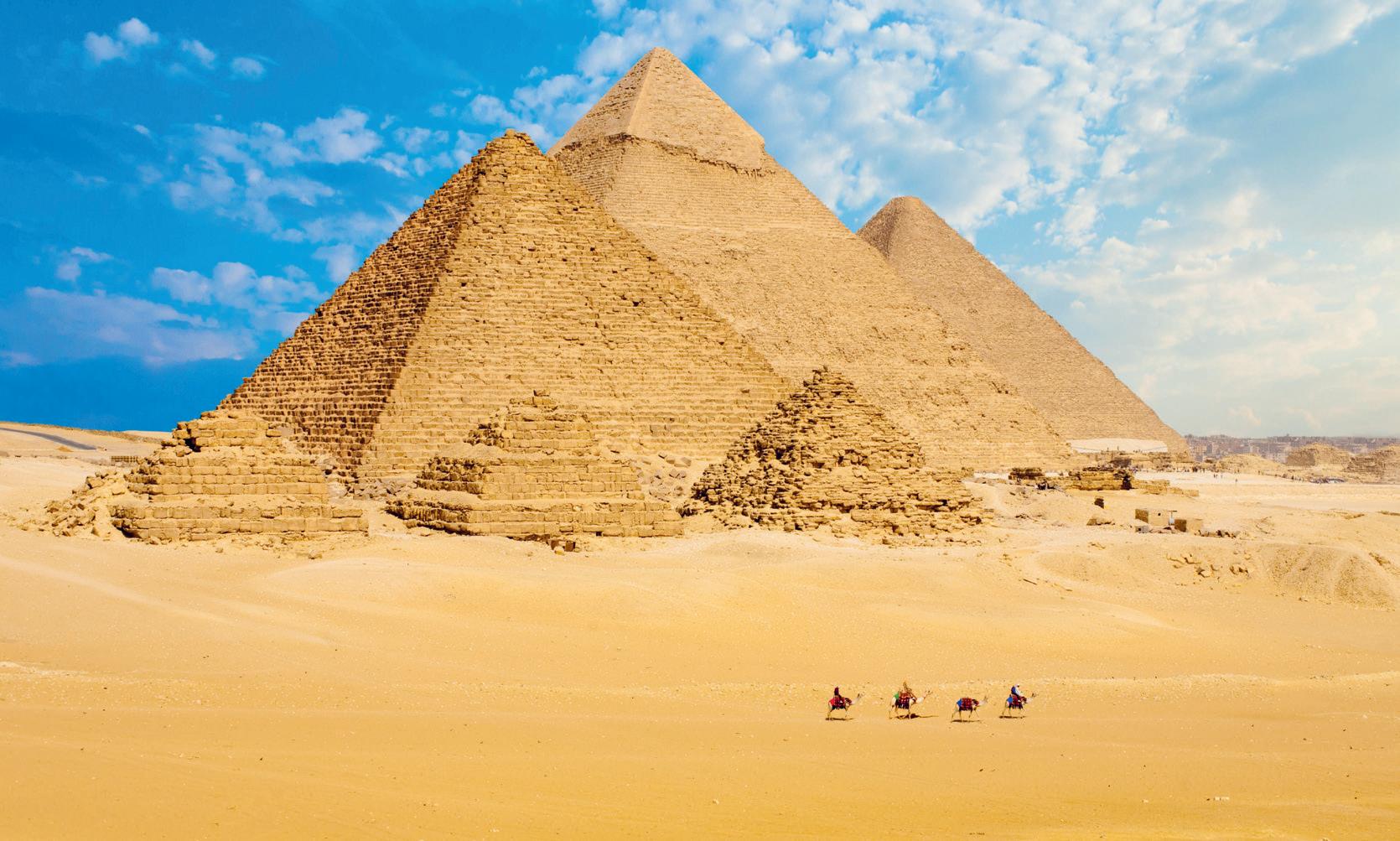
You might think that the ancient Egyptian pyramids are found in the middle of a vast desert. In fact, they are just 15 km from the centre of Egypt’s capital city, Cairo, on the west bank of the river Nile.



SHAFTS
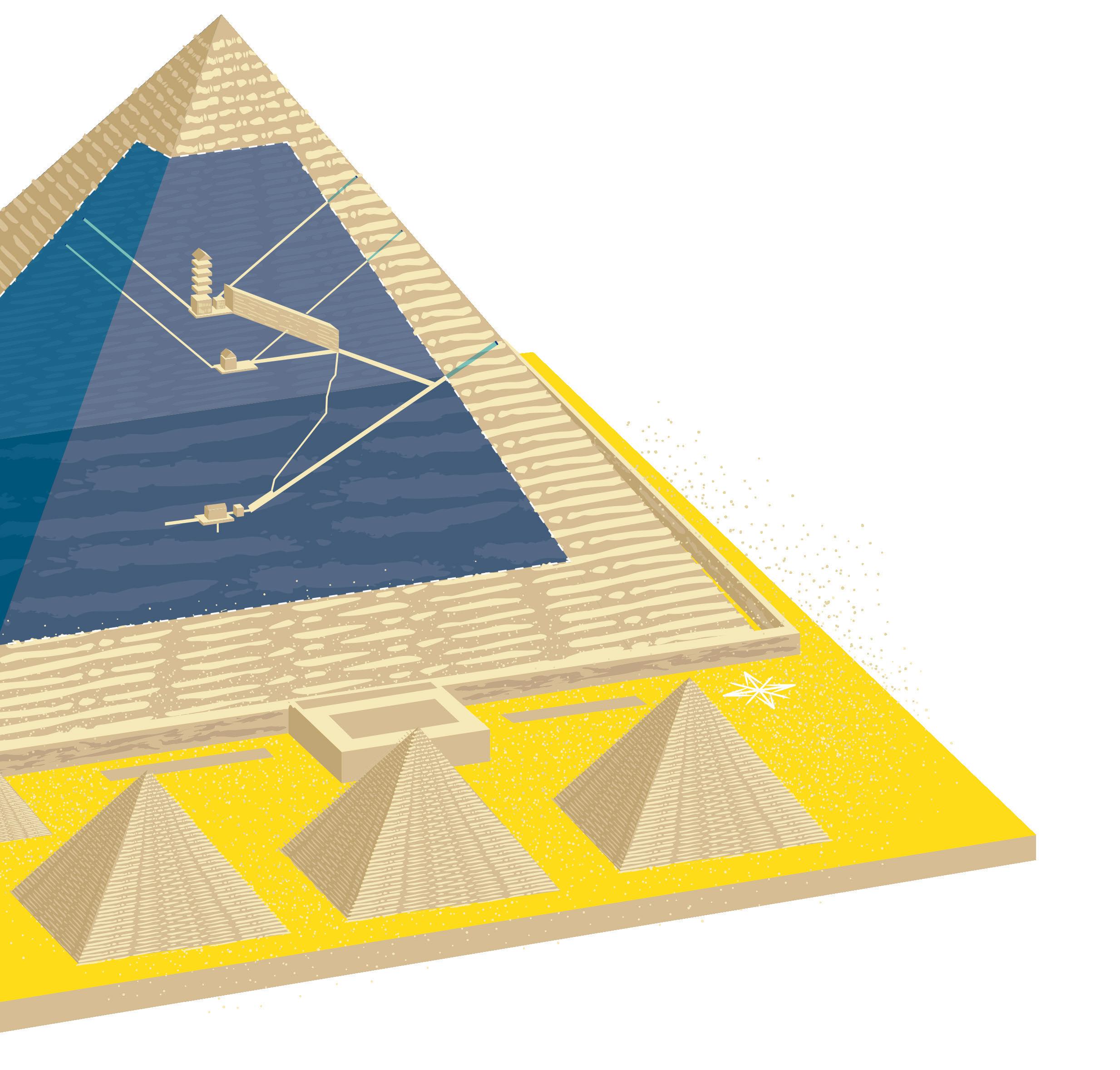
ESCAPE SHAFT
QUEEN’S CHAMBER
UNDERGROUND CHAMBER
SHAFTS
KING’S CHAMBER
The Grand Gallery is a steep 46-metre-long passageway leading up to the King’s Chamber, which contains the sarcophagus, or stone coffin, of King Khufu. Khufu’s full name was Khnum-Khufwy, which means ‘[the god] Khnum protect me’.
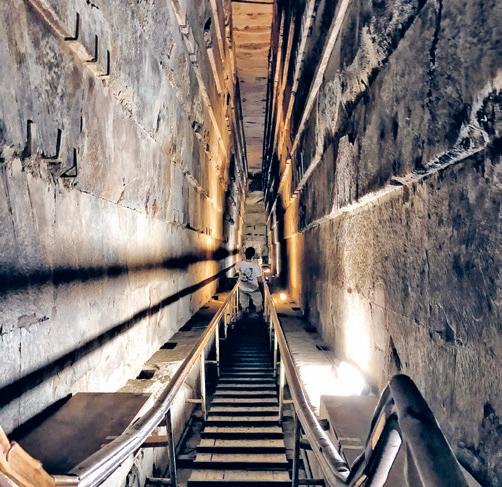
The photo below shows the opening through which people enter the pyramid today. It is known as the Robbers’ Tunnel because some experts think it was added centuries after the original pyramid’s construction as an access or exit route for tomb raiders.
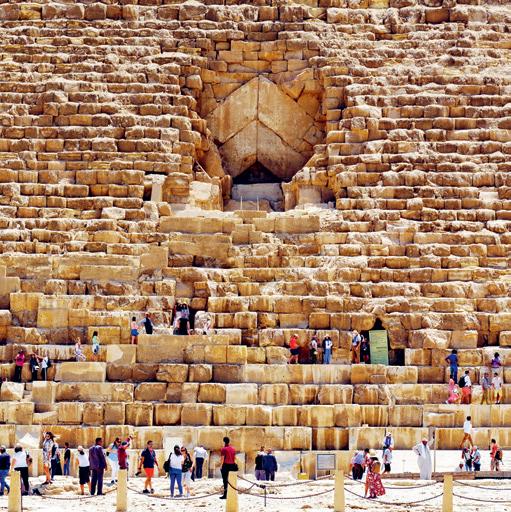
The three largest pyramids at Giza are the burial places of three generations of Egyptian kings: Khufu, his son Khafre and his grandson Menkaure, shown below left.


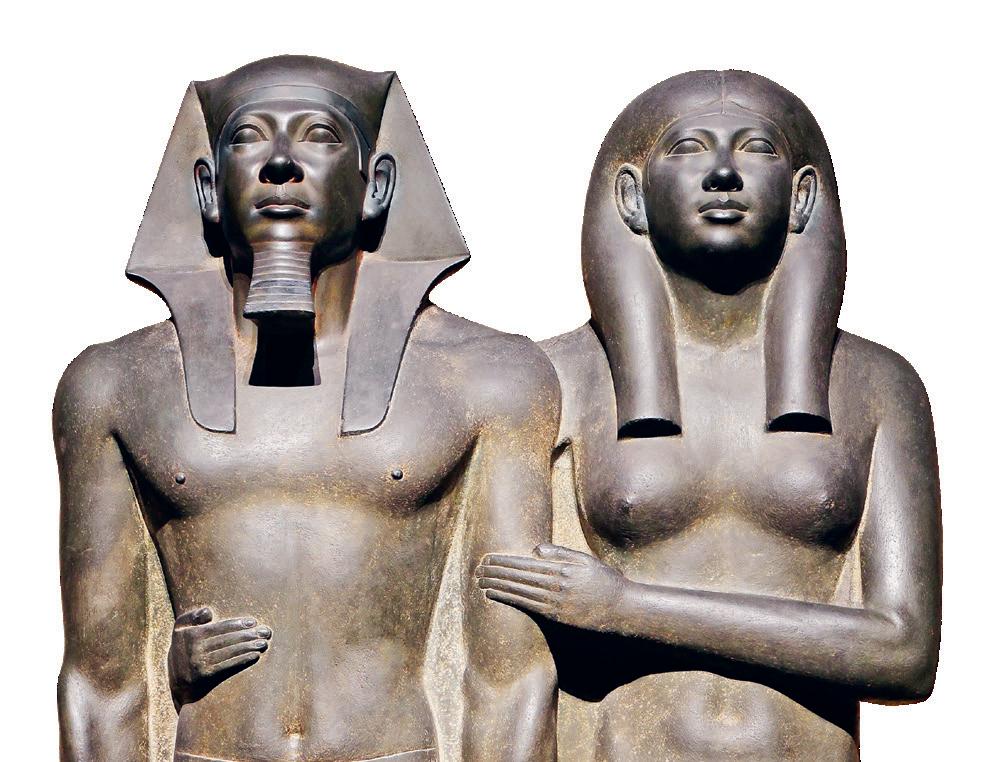
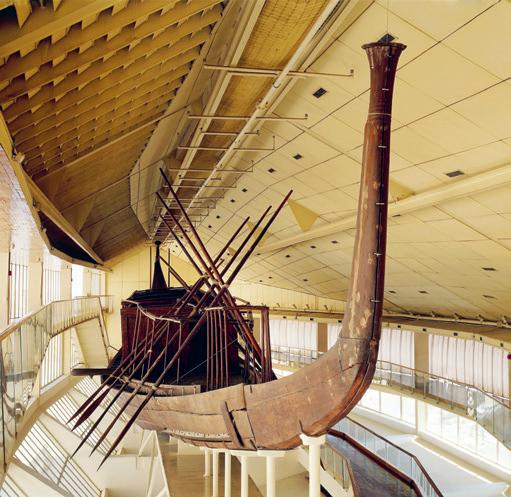
This wooden ship was found in 1954, buried next to the Great Pyramid. It had remained hidden for 4,600 years. Some experts think the ship carried King Khufu’s body on its final journey along the Nile to Giza.
Fabulous golden objects have been found in the tombs of later Egyptian pharaohs, such as Tutankhamun. The Great Pyramids were raided by thieves in the Middle Ages and so no one knows for sure what treasures they once contained.


The pyramid of Cestius was built by the Romans.
Do a LL pyramids have treasure inside?
Historical researchers and Egyptologists helped with the construction of the Luxor hotel.
You might already know that some Egyptian pyramids contained treasure that was intended to be used by the pharaohs and other important people buried in them during the afterlife. Many pyramids were vandalised and robbed a long time ago and so nowadays very few of these treasures remain. This is true of other countries’ pyramids as well. In Sudan, forty pyramids were destroyed and looted by a single man, an Italian treasure hunter called Giuseppe Ferlini. However, some Mesoamerican pyramids, such as El Castillo at Chichen Itza and the Pyramid of the Sun in Teotihuacán, contain a theft-proof type of treasure – they have other pyramids inside! These pyramids were built on top of other, older pyramids.
Can I explore inside a pyramid?
Many modern pyramids, such as the Luxor hotel in Las Vegas, USA (pictured above), or the entrance to the Louvre
museum in Paris are made for people to go inside! Other pyramids, such as the ancient pyramid of Cestius in Rome, are open only for scholars to go inside now. If you would
Although it has never opened for guests, Ryugyong Hotel in North Korea is currently the world’s tallest pyramid-shaped building. The tallest of the ancient pyramids is the Great Pyramid of

Giza. The biggest pyramid by volume is the Great Pyramid of Cholula in Mexico (left). Its construction began in the 3rd century BCE – and it is still the largest monument ever built!
like to experience an ancient pyramid, tourists are can look inside the Pyramids of Giza in Egypt. Other pyramids only allow visitors on the outside – but they are still well worth visiting if you can!
Are there undiscovered pyramids?
Yes, there are almost certainly pyramids that have not yet been discovered! New technology is being developed all the time, and that means new opportunities to look for things that have been lost. Using satellites and radar, researchers have been able to find pyramids that have been buried underground, obscured by jungle or eroded over time.


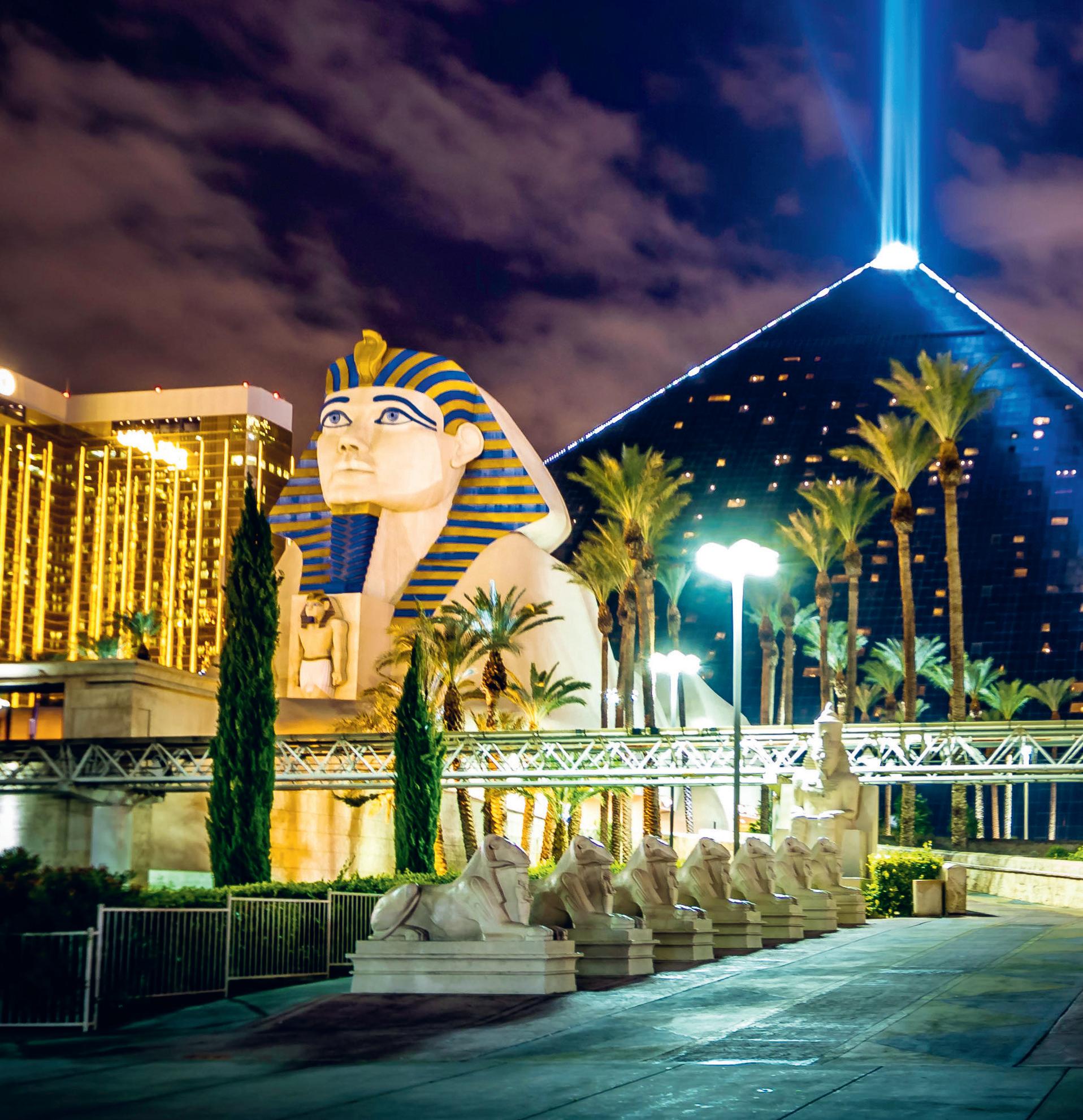
The Luxor hotel in Las Vegas, USA, is a famous modern pyramid. The light at the top is the most powerful human-made light in the world!
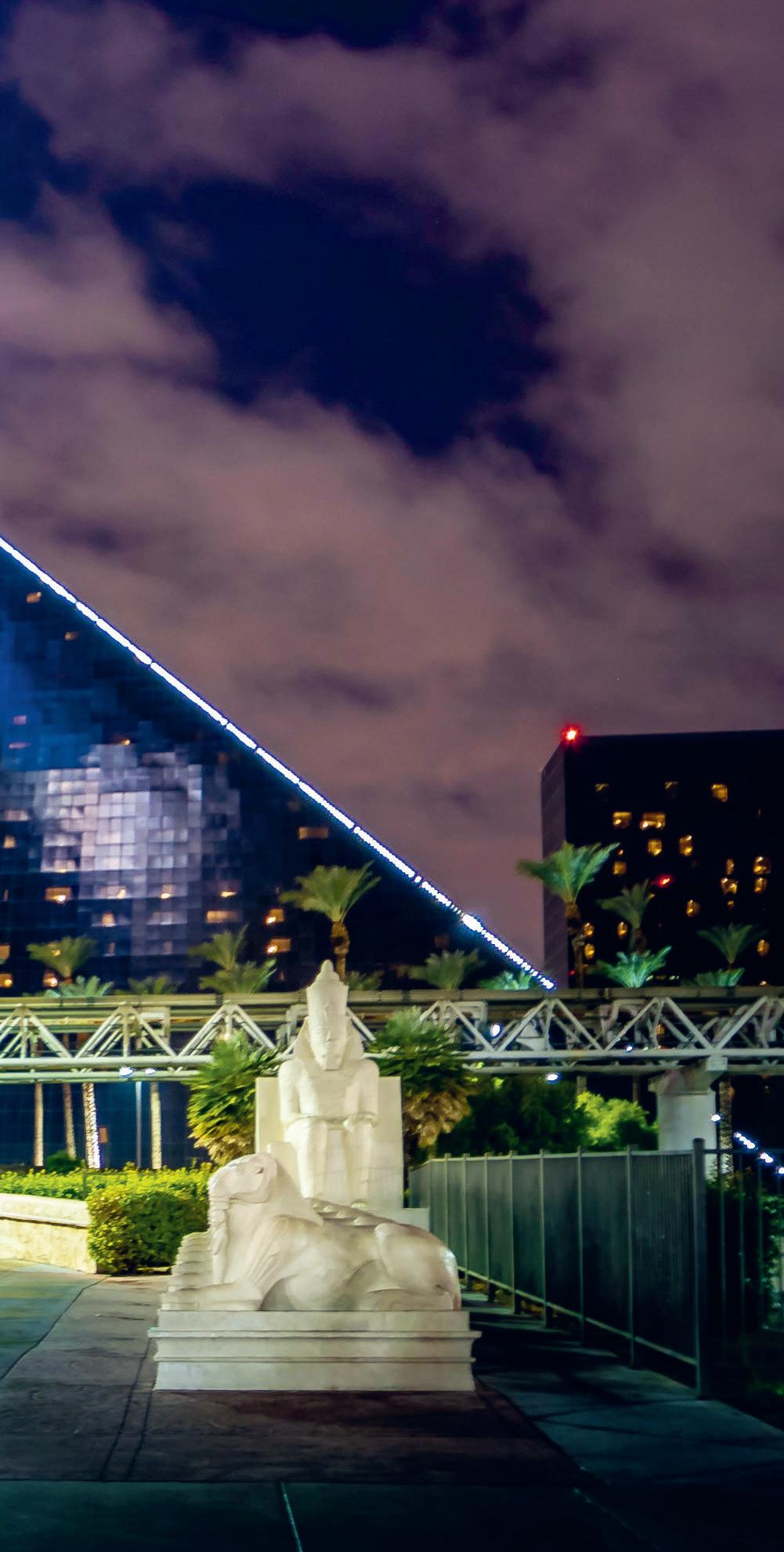
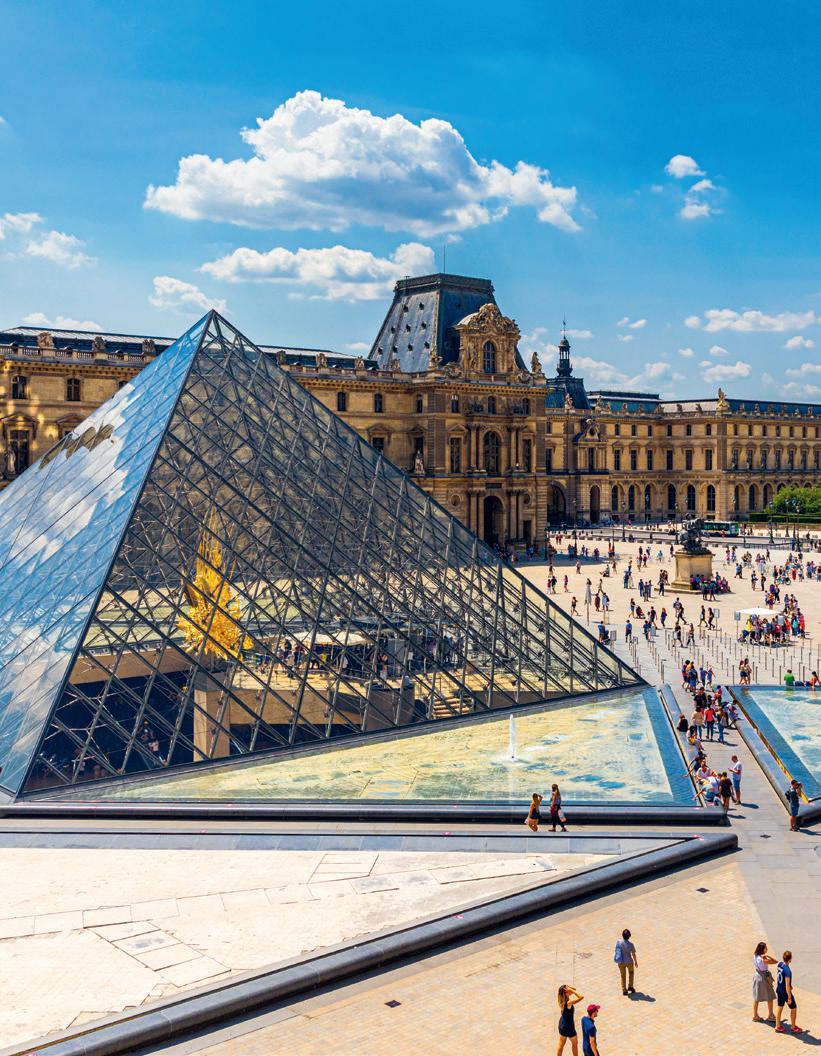
Which pyramid is the newest?
New pyramids are still being built today, for hotels and museums and skyscrapers. One that is currently being built is the Time Pyramid, a work of public
art in Germany. Construction of the Time Pyramid began in 1993. New blocks are added, very slowly, one every ten years. The full pyramid is due to be completed in the year 3183!
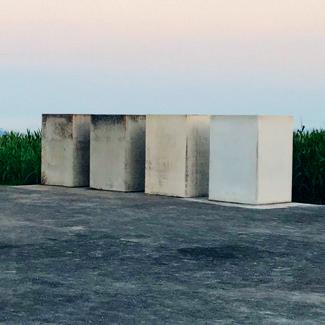
Scale 1993 2003 2013 2023
do archaeologists explore pyramids?
Today, modern archaeologists and other researchers explore pyramids using technology that allows them to see inside a pyramid without always having to go inside themselves.
In old pyramids, passages have sometimes collapsed, which makes it difficult or even dangerous to move around inside. Scientists use special types of scanners and cameras to map out pyramid chambers and look through stone rubble and walls.
In recent years, a robot has been used to explore places inside the Great Pyramid of Giza that human researchers weren’t able to get to!
Are pyramids sti LL built today?
When most people think of pyramids, they think of ancient stone structures built thousands of years ago. But the pyramid is still an interesting and useful architectural shape, and so pyramids are also being built today. These pyramids
are usually made from modern building materials, such as glass and steel. And, just like the ancient pyramids, they are being built on a grand scale. In fact, one of the biggest pyramids in the world is an outdoor goods shop in Tennessee, USA! In North Korea, the Ryugyong Hotel is a pyramid-shaped building that was meant to be the tallest hotel in the world. Work on it has stopped and started several times. And, for a time, it was the tallest unoccupied building in the world.
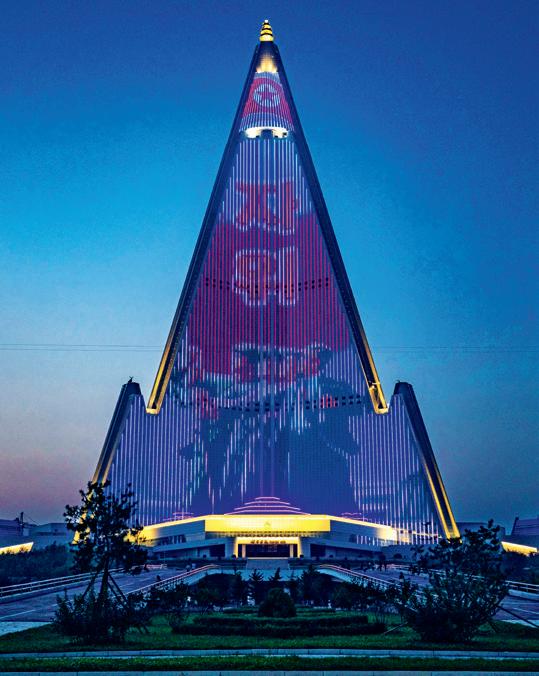
The 330-metre Ryugyong Hotel remains uncompleted.

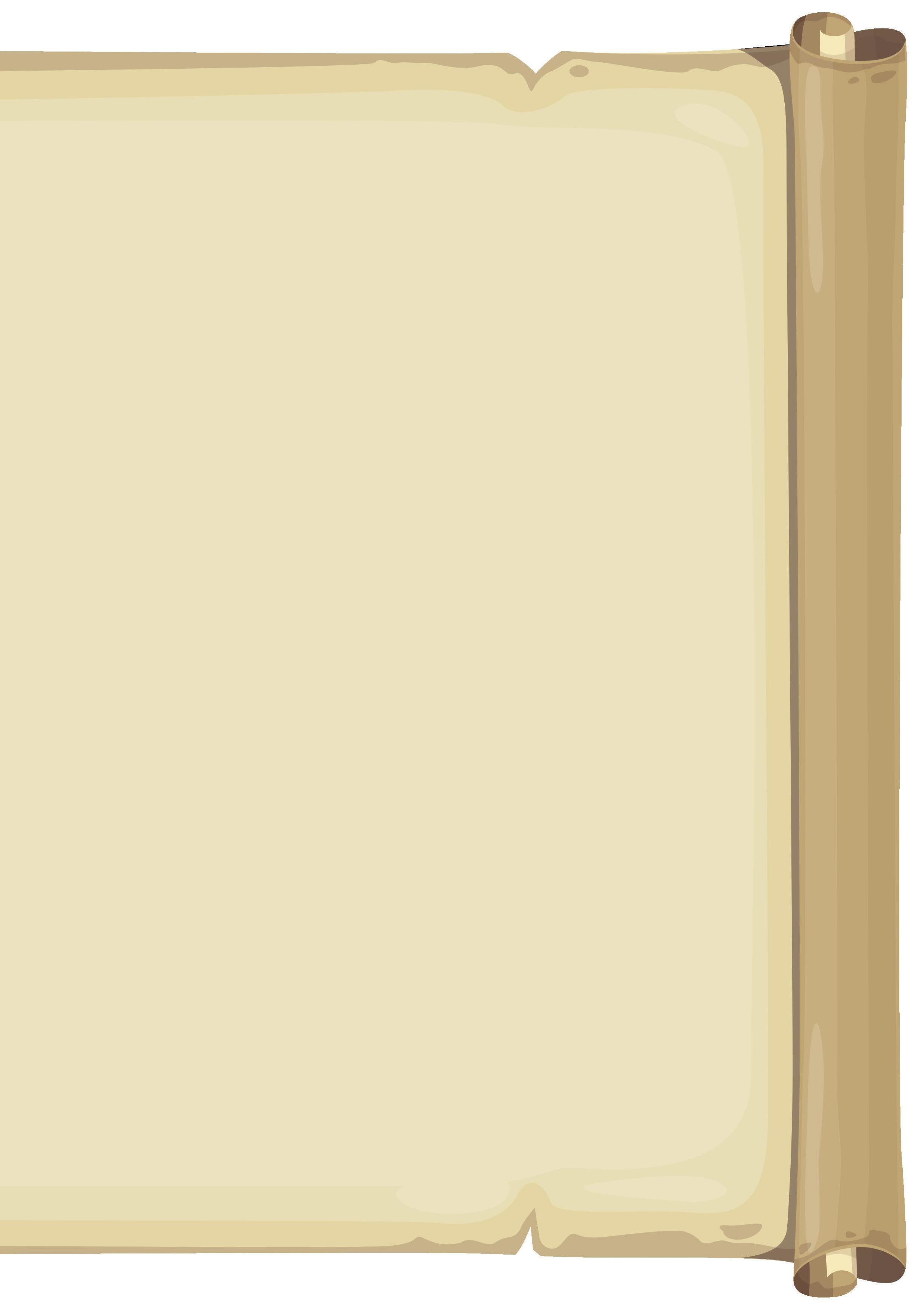
GREAT PYRAMID OF GIZA Giza, Egypt
Height: 138.8 m (was 146.5 m)
Built around 2560 BCE, it was originally covered in limestone and probably had a gold or gold-covered capstone called a pyramidion at the very top.
QIN SHI HUANG MAUSOLEUM
Xi’an, China
Height: 47 m (was 76 m)
This massive mausoleum was built for the first emperor of the Qin dynasty. The famous Terracotta Army of clay soldiers was found near here.
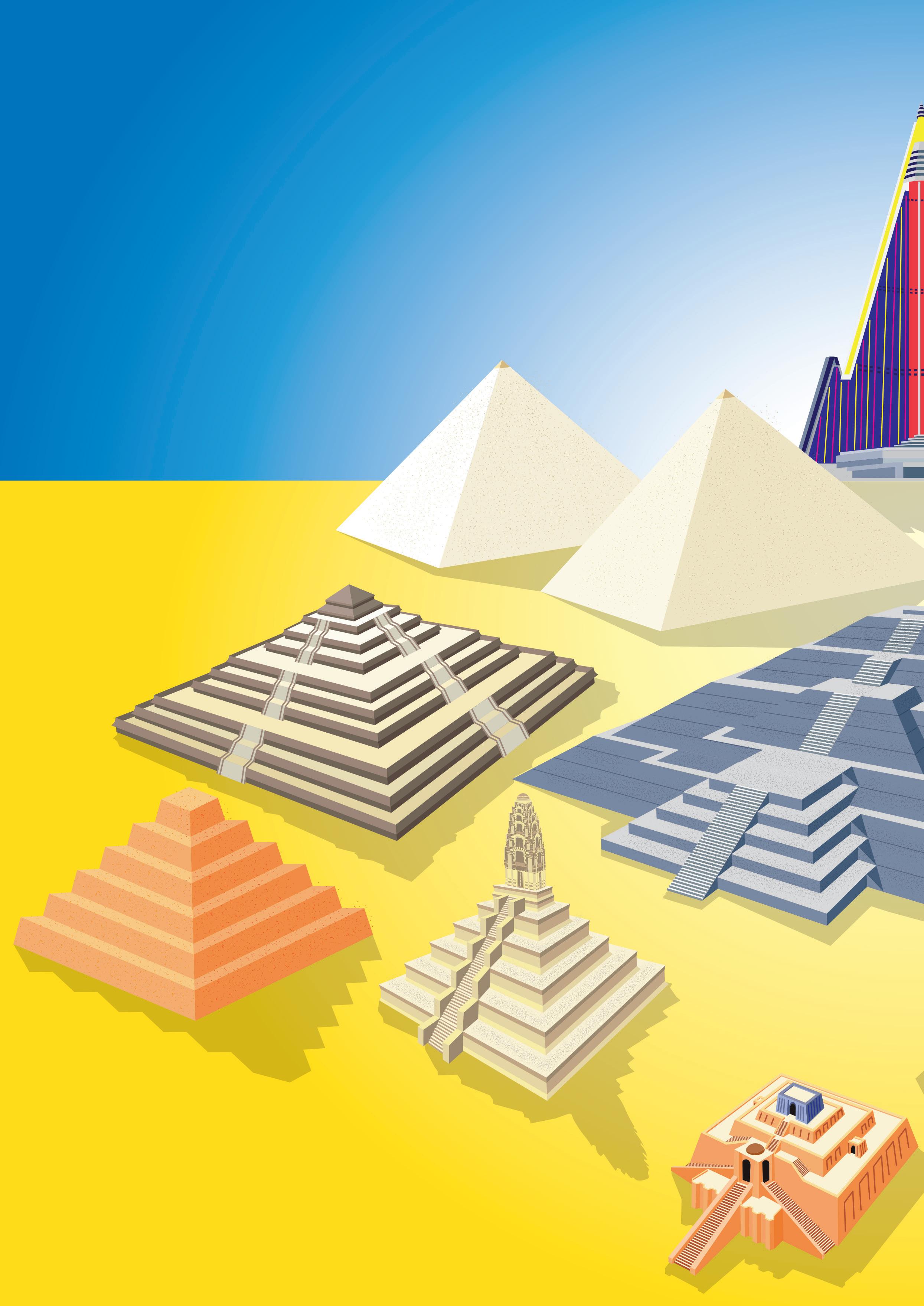
PYRAMID OF DJOSER
Saqqara, Egypt
Height: 62.6 m
The Pyramid of Djoser, which was built around 2610 BCE, is thought to be the world’s oldest pyramid.
RYUGYONG HOTEL
Pyongyang, North Korea
Height: 330 m
This massive modern pyramid is still unfinished today and was for a time the world’s tallest unoccupied building.
PYRAMID OF KHAFRE Giza, Egypt
Height: 136.4 m (was 143.5 m)
Built about 30 years after the Great Pyramid of Giza.
PRANG TEMPLE
Koh Ker, Cambodia
Height: 36 m (was 40+ m)
Construction on this temple began in about 928 CE. It is part of a remote and inaccessible temple complex with many buildings.
PYRAMID OF THE SUN
Teotihuacán, Mexico
Height: 75 m
Built around 100 CE, the Pyramid of the Sun is the largest building in Teotihuacán.
TRANSAMERICA PYRAMID
San Francisco, California, USA
Height: 260 m
This American skyscraper was the tallest building in San Francisco from its completion in 1972 until 2016.
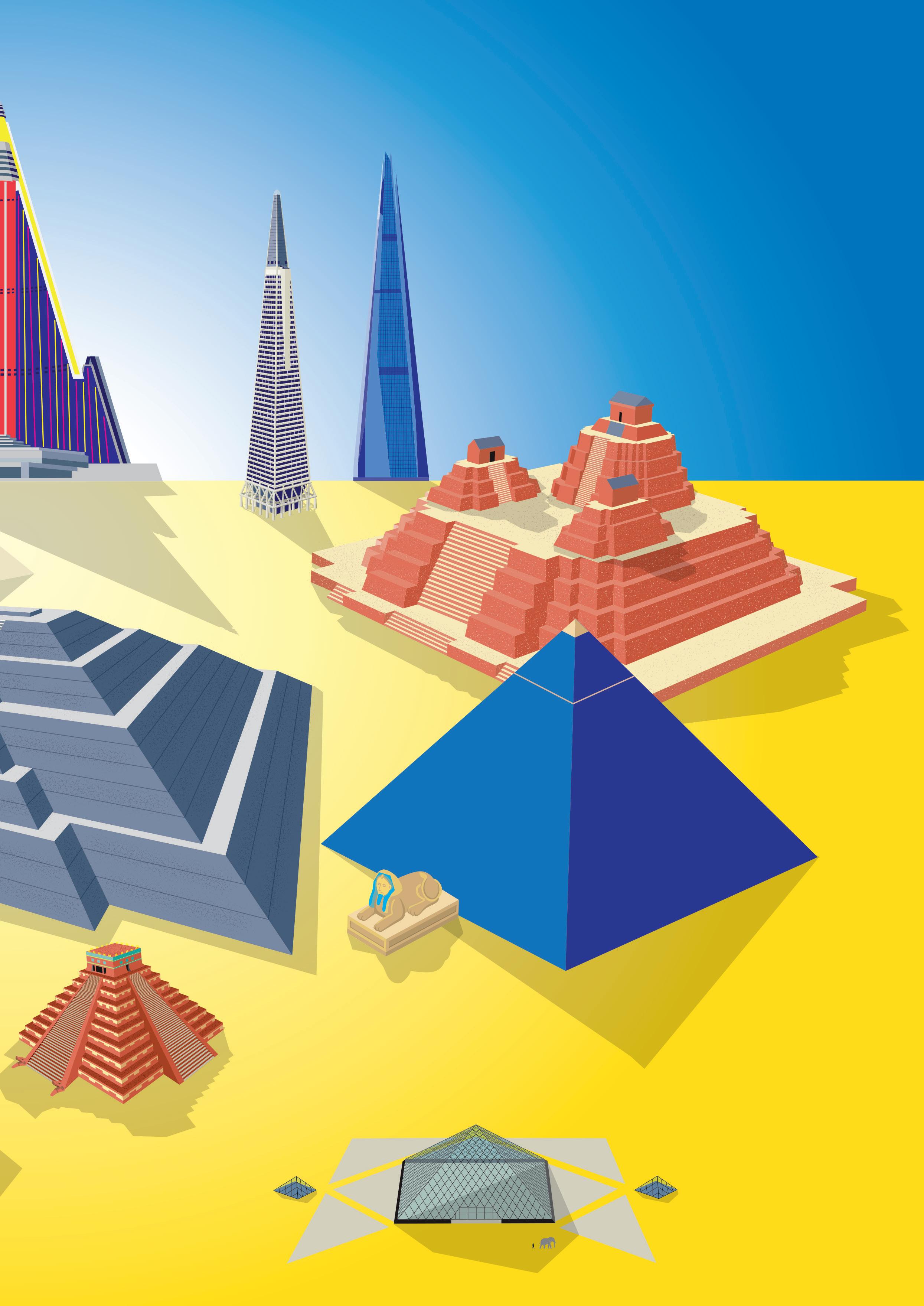
ZIGGURAT OF UR
Ur, Iraq
Height: over 30 m
This great temple, built around 2100 BCE, is the best-preserved ziggurat of Mesopotamia.
London, United Kingdom
Height: 309.6 m
The Shard, finished in 2012, is currently the United Kingdom’s tallest building.
The Great Pyramid of Cholula in Mexico is the largest by volume at 4.45 million metres!cubic
LA DANTA
Petén, Guatemala
Height: 172 m
Built about 1000 BCE, La Danta is estimated to have taken a total of 15 million days’ work to construct.
EL CASTILLO
Chichen Itza, Mexico
Height: 30 m
El Castillo was built about 1000 CE by the ancient Maya people as a temple to the feathered serpent deity Kukulcan.
LUXOR PYRAMID
Paradise, Nevada, USA
Height: 111 m
This pyramid hotel was finished in 1993, and built and decorated with the help of historical researchers and Egyptologists.
LOUVRE PYRAMID
Paris, France
Height: 20.6 m
This massive glass-and-metal pyramid, finished in 1989, is the main entrance to the worldfamous Louvre Museum in Paris.
Thismapshowsthatthe distancefromEarth’scrusttoitscoreisaboutthesame asthedistancefromSwedentothemiddleofAfrica!
DID YOU KNOW?
The hottest part of Earth is in the outer core. It’s called the Bullen discontinuity and it is as hot as the surface of the Sun!
CRUST
The crust is a relatively thin layer of solid rock above the mantle. It’s 30–75 km thick on land and about 6 km thick under the sea.
DID YOU KNOW?
The deepest hole ever dug by humans is the Kola Superdeep Borehole in northern Russia. It is 12,262 metres deep!
MANTLE
The mantle lies below the crust and is up to 2,900 km thick. It’s made of semi-solid rock called magma. The crust ‘floats’ freely on top of it.
OUTER CORE
The core is the centre of Earth and has two parts. The outer core is about 2,200 km thick. It is mostly made of liquid iron and nickel.
The inner core is a hot, solid ball of (mostly) iron with a radius of about 1,271 km. It is solid because of the pressure of all the rock pushing down on it from the surrounding layers.
DID YOU KNOW?
The Earth’s inner core and outer core together form a sphere that is roughly the same size as the planet Mars!
N 1,000 km
Inside this 10-page activity section, you will find quizzes to do, puzzles to solve and fun activities to try. And don’t worry if you get stuck – all the answers are on page 38.
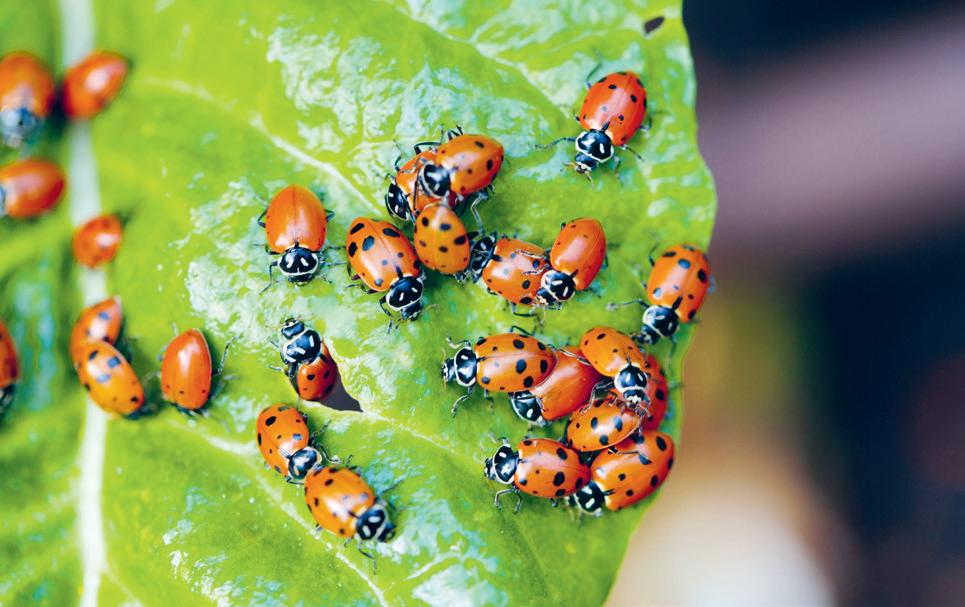
1
What is a collective noun used to describe a group of ladybirds?
a. An army
b. A swarm
c. A flutter
d. A loveliness
2 What is the fastest speed achieved by Bertie, who according to the record books is the world’s fastest tortoise?
a. 2.8 mm per second
b. 2.8 cm per second
c. 28 cm per second
d. 2.8 m per second
3 Which is the only mammal that has four knees?
a. An elephant
b. An aardvark
c. A pig
d. A western lowland gorilla
4 What type of animal is a killer whale, which is also sometimes known as an orca?
a. A shark
b. A dolphin
c. A whale
d. A fish
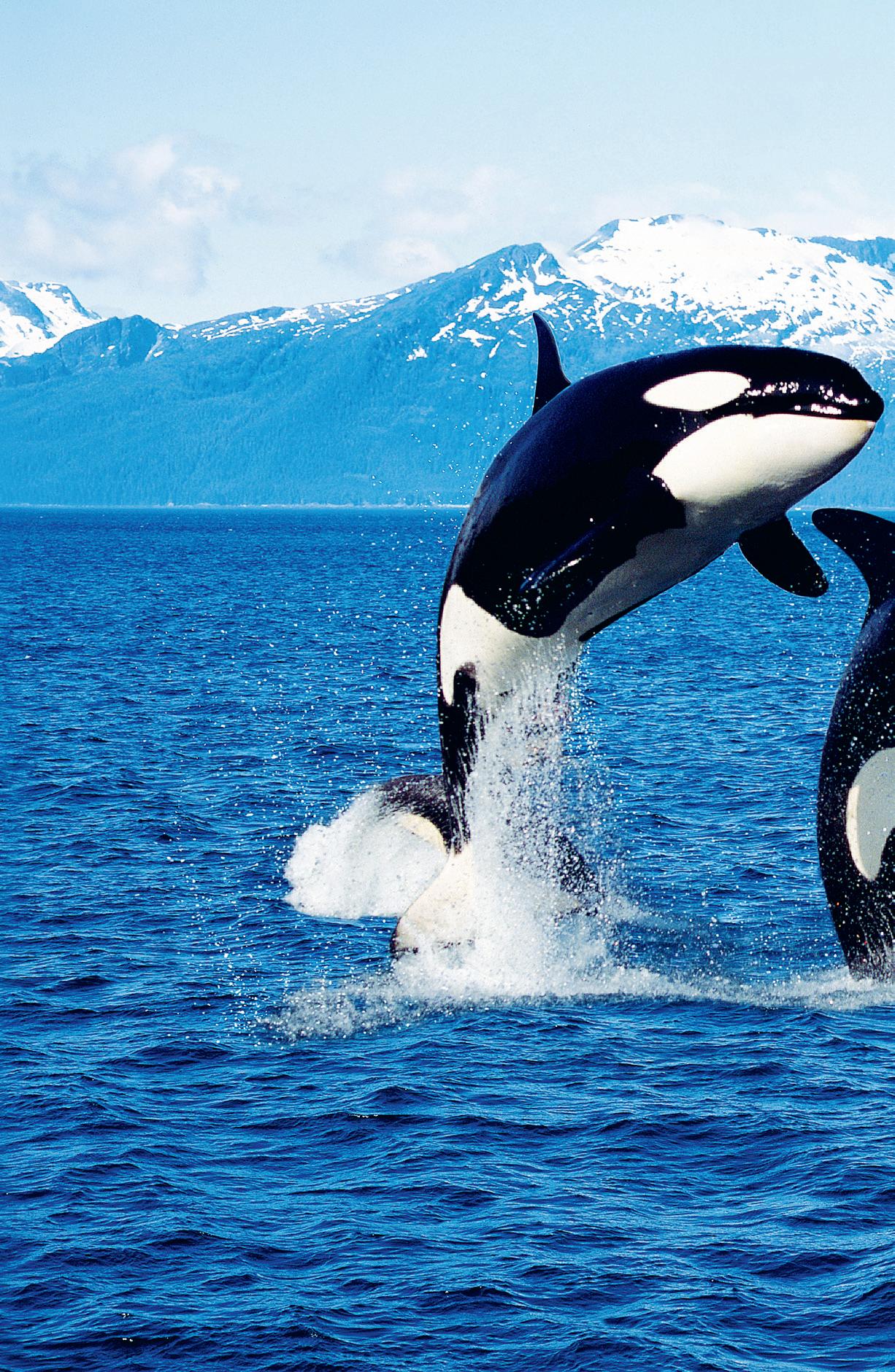
1 How many individual players are there in a rugby union team?
a. 10
b. 11
c. 15
d. 18
2 Who, in 1903, became the first woman ever to win a Nobel Prize?
Clue: she went on to win a second Nobel Prize in 1911.
a. Florence Nightingale

b. Marie Curie
c. Mary Anning
d. Malala Yousafzai
3 James Bond is a famous fictional spy created by the writer Ian Fleming. By what code name is James Bond also known?
a. M
b. Q
c. 007
d. 009
4 What is bathmophobia a phobia, or irrational fear, of?
a. Bats
b. Baths
c. Pyjamas
d. Stairs
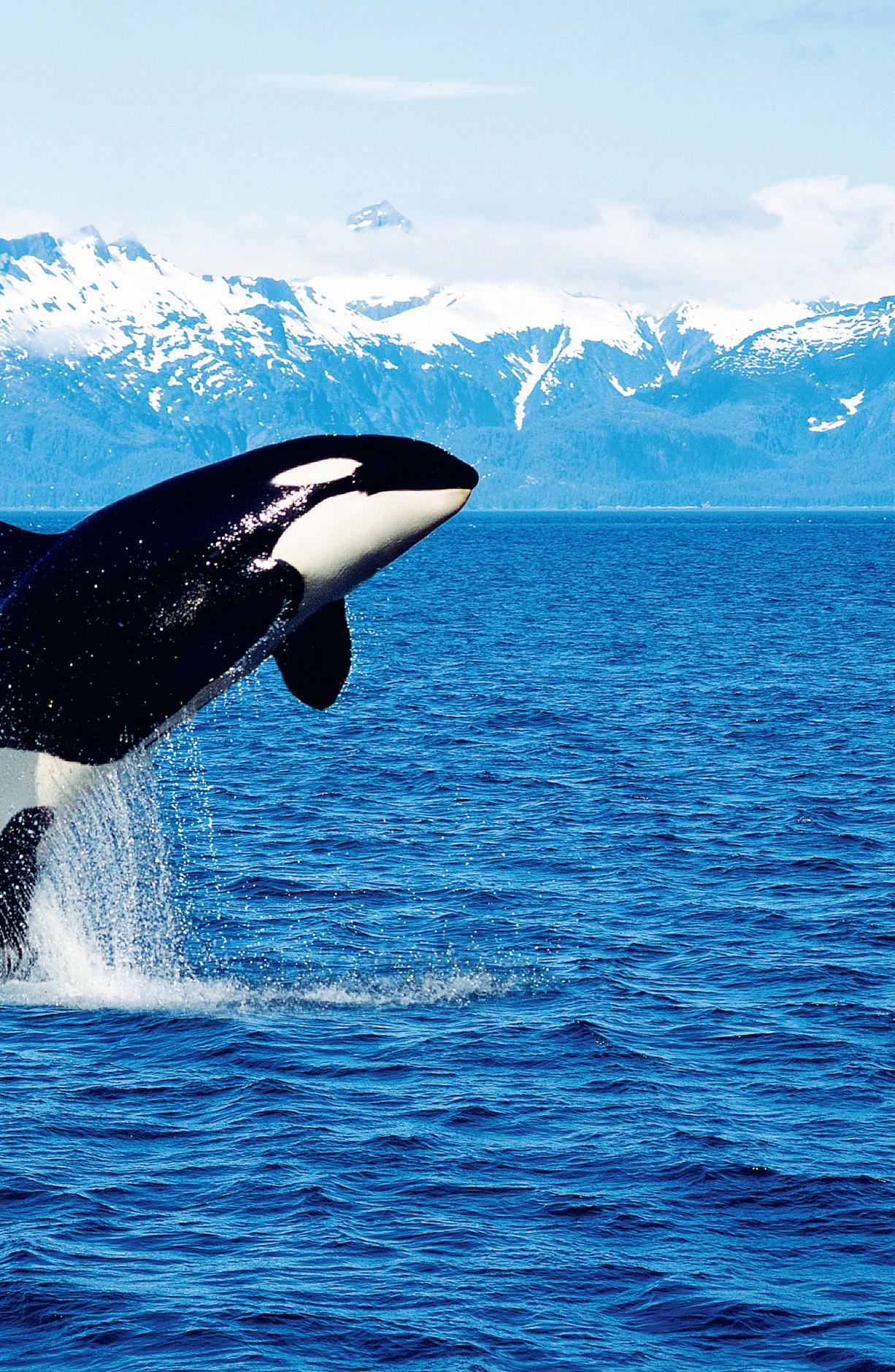
NUMBER TRIANGLES
In the triangles below, the numbers inside the squares are the sum of the two numbers in the connected circles. For example:
Each of the emoji sequences shown on the right somethingrepresents you can eat or drink. Can you work out which food or drink it is in each of the five examples?
Can you work out which number should appear in each of the circles? All the numbers in the circles are between 1 and 10 and a number can only be used once in each triangle.
Can you find your way through our maze of square rooms? Enter through the door marked with the red arrow, then try to find your way to the exit by going through the correct sequence of open doors. Good luck!
Fill all the empty squares so that every row, column and 3x2 box contains each of the numbers 1 to 6.
1
What is the heaviest organ in the body?
a. Brain
b. Heart
c. Stomach
d. Skin
2
If you stretched out an adult human’s digestive tract (which is highlighted in red in the illustration below) to its full length, approximately how long would it be?
a. 3 metres b. 6 metres
Fill in the missing numbers so that every row and column includes the numbers 1, 2, 3 and 4. Use the inequality signs as clues and make sure numbers always obey the inequality sign between them. This means that the arrows between the numbers always point towards the smaller number.
Here is an example:
In the three squares shown above, the number A must be less than 3 and greater than the missing number B. We know all the numbers must be between 1 and 4 , so therefore A must be 2 and B must be 1.
3 Jeanne Calment was born in France in 1875 and went on to become the oldest recorded human being. How old was Jeanne when she died?
a. 108 years old
b. 112 years old
c. 118 years old
d. 122 years old
4 What is typically the sweatiest part of the body?
a. Hands
b. Feet
c. Armpits
d. Head






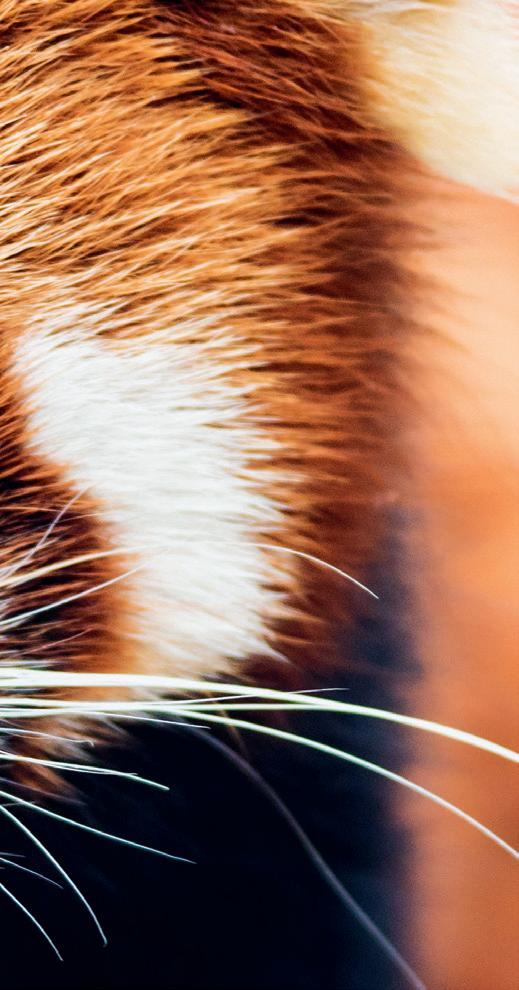

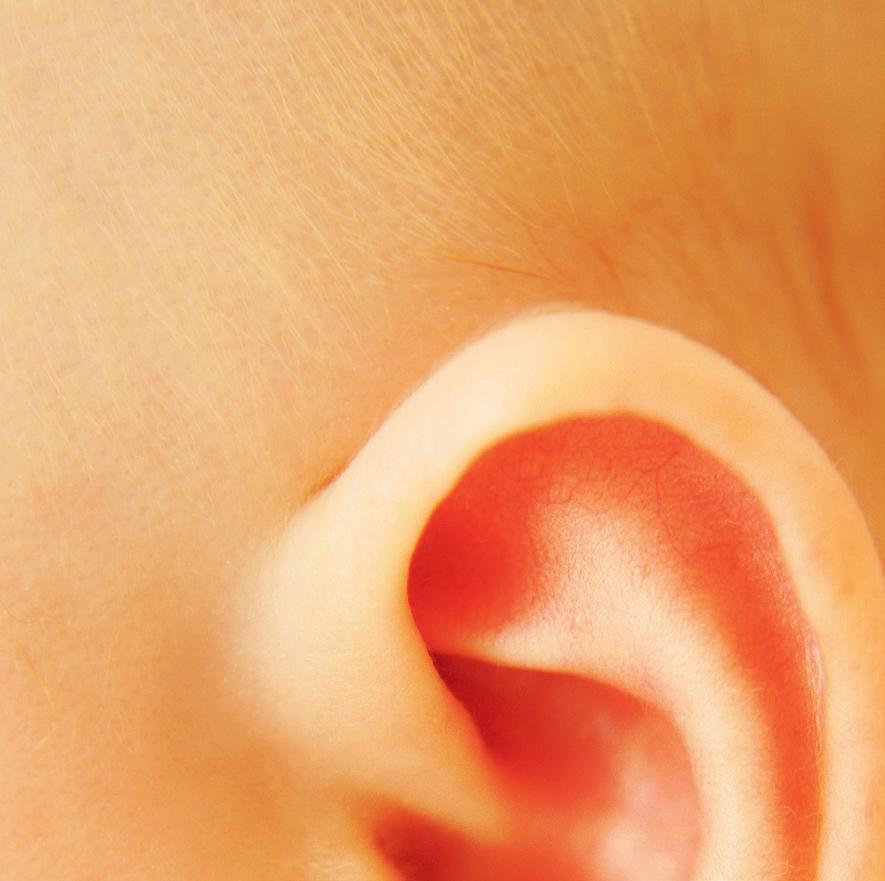

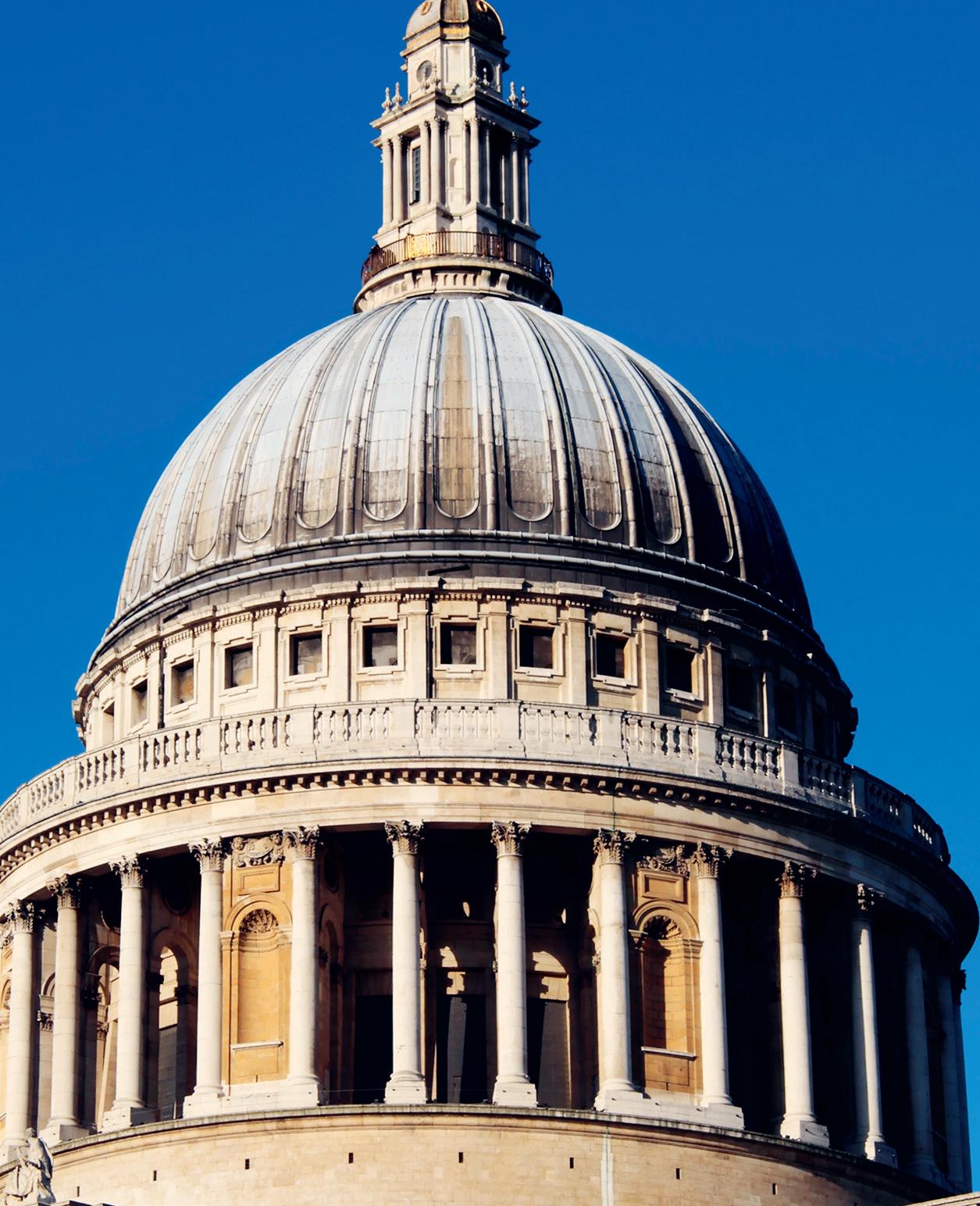

1
Which Italian city, pictured above, is famous for its canals?
a. Venice
b. Milan
c. Florence
d. Rome
2
What is the only US state to be named after an English county?
a. Washington
b. New Jersey
c. New Hampshire
d. Maryland

3 A landlocked country is one that is entirely surrounded by other countries and does not border the ocean. What is the world’s largest landlocked country by surface area?
a. Kazakhstan
b. Ethiopia
c. Mongolia
d. Democratic Republic of Congo
4 On which continent would you find the range of mountains known as the Andes, which are pictured left?
a. North America
b. South America
c. Europe
d. Asia
Four sneaky animals are hiding somewhere in these photos. Can you find them?
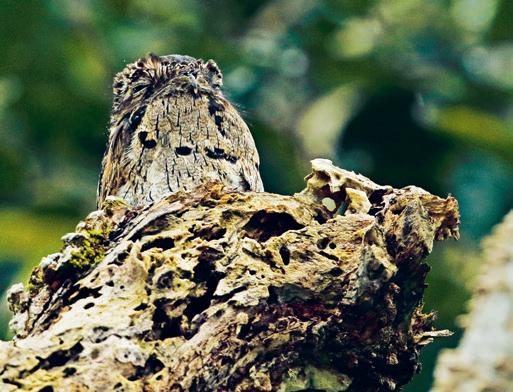

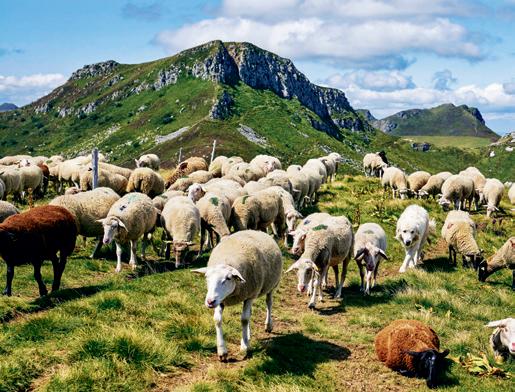

Can you spot the 20 ocean-themed words hidden in our jumbo word search puzzle? Good luck!
Draw a line to connect each pair of planets. You can’t use diagonal lines and the lines can’t cross or touch each other. You must fill the whole grid with lines but only one line is allowed in each square.
A
A link word is a word that can be added to the end of one word and the start of another word to create two new nouns. For example, the word SAND can be added to the end of the word QUICK to create QUICKSAND, and also added to the start of CASTLE to create SANDCASTLE. Can you think of link words that fill the gaps below and create two new nouns in each case?
1
Which of these naturally occurring phenomena reaches the hottest temperature?
a. A meteorite entering Earth’s atmosphere
b. The surface of the Sun, pictured below

c. The molten centre of the Earth
d. A bolt of lightning
2
With a top recorded speed of 635,00 km/h, what is the fastest-moving human-made object ever built?
a. International Space Station
b. Challenger Space Shuttle
c. Parker Solar Probe
d. Voyager 1

3 Which country is known as the ‘astronomy capital of the world’ because it has so many large telescopes?
a. India
b. Chile
c. China
d. Australia
4
How long would it take to walk from Earth to Proxima Centauri, the nearest star to our planet apart from the Sun?
a. 9.5 million years
b. 95 million years
c. 950 million years
d. 95 billion years
Can you spot all 2O differences between these two illustrations of people celebrating Diwali?
CUBE IT!
The six-sided shape on the left can be folded up to form a cube. Only two of the cubes on the right can be made by it. Which are they?
Clue: a human-made object that orbits Earth (9 letters).
Answer:
Clue: the opposite of big (6 letters).
Use the word wheel to help find the answers to the six clues below. All the answers contain the middle letter and each letter can only be used once. S A T L
Answer:
Clue: a popular make of electric car (5 letters)
Answer:
Clue: to take without permission (5 letters).
Answer:
Clue: one of the five main human senses (5 letters).
Answer:
Clue: the direction from which the Sun rises each morning (4 letters).
Answer:


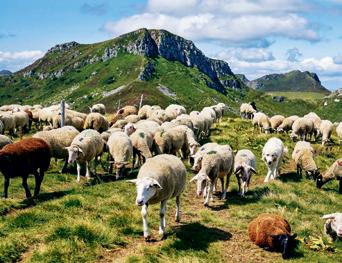
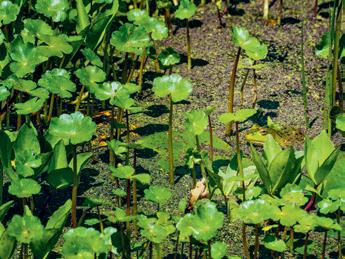


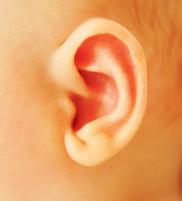


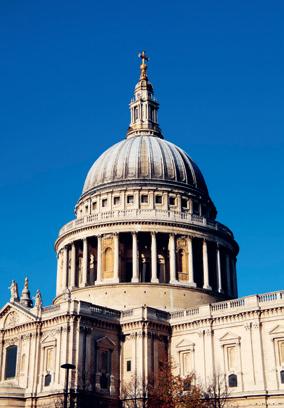
Look at the circular yellow lines in the pattern above. What shape do they form? It looks as if the yellow lines form a spiral that gets smaller and smaller as it approaches the centre. Now place your finger on one of the yellow lines and
follow the shape of its curve around the page. Each yellow line forms a concentric circle. There is no spiral at all! This mind-bending illusion is created by combining the yellow circles with the other, triangular shapes on the pattern.
Home to an incredible diversity of life, rainforests are among our planet’s most important habitats. In fact, more than half of all plant and animal species live in rainforests, even though rainforests cover just six per cent of Earth’s land surface. Let’s explore this amazing habitat and the animals that live there…

EMERGENT LAYER CANOPY UNDERSTOREY
FOREST FLOOR
Scientists often divide rainforests into four layers: the emergent layer, the canopy, the understorey, and the forest floor. Each layer is different because of the differing amounts of light and water found there. Here are some of the animals you might find living in a rainforest.
Didyouknowthatthe
Amazonrainforestcontains around 10% of all known species–includingme, theboaconstrictor?
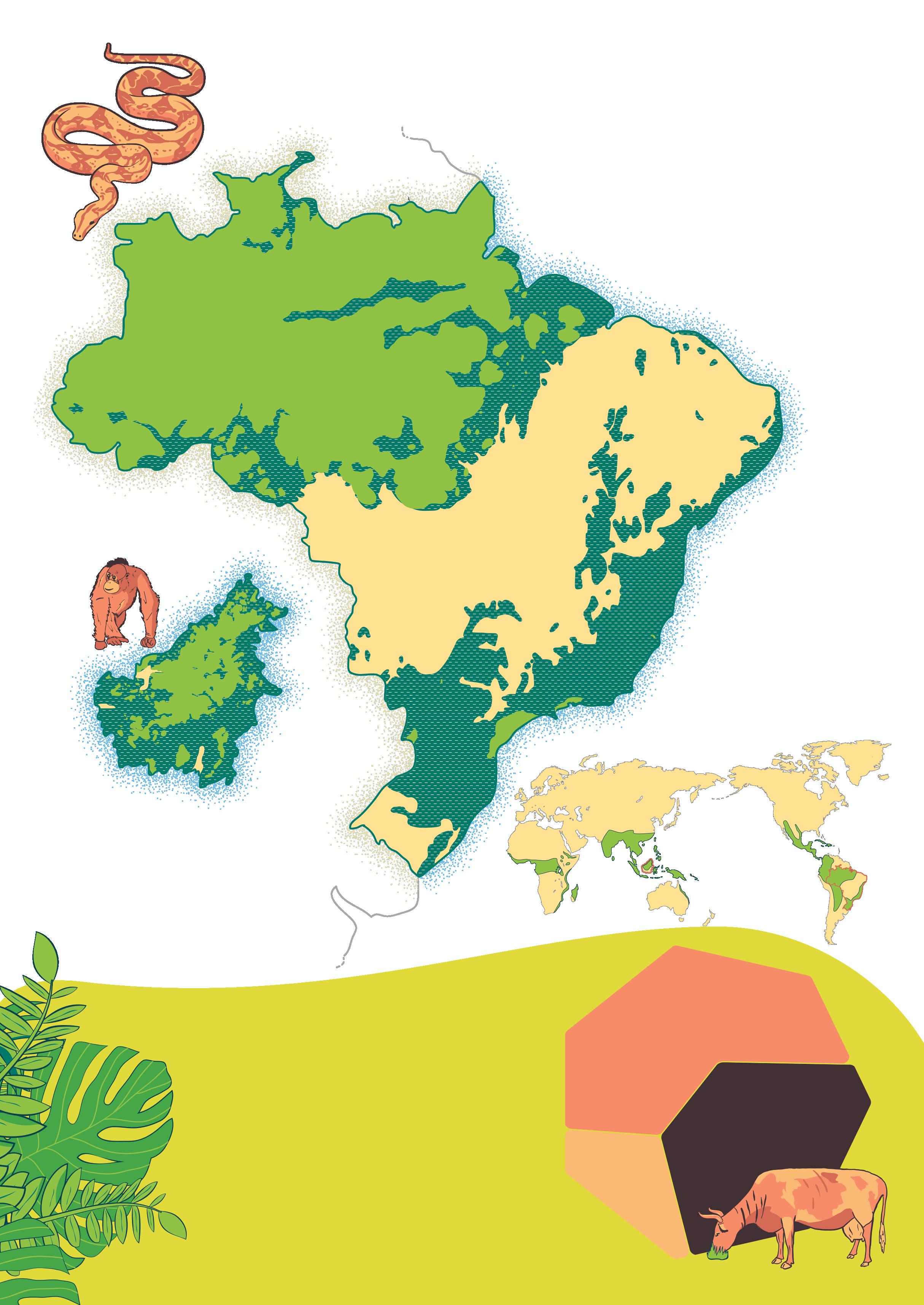
Borneo Forest
Indonesia and Malaysia
HOW TO READ IT
Rainforest cut down by humans
Rainforest that still exists today
SCALE 100 kilometres
Deforestation, the clearing or cutting down of forests by humans, is causing terrible damage around the world. The chart on the right shows the three main reasons for deforestation, and the proportion (as a percentage) of forest lost for each reason.
The cutting down of forests is especially damaging to our planet because of the diversity of life they contain, and because plants help to combat climate change by absorbing harmful carbon dioxide from the atmosphere through photosynthesis.
The maps below show two of the world’s largest rainforests. The light green area on Map 1 shows the rainforest on the island of Borneo in Asia. The light green area on Map 2 shows the Brazilian Amazon rainforest in South America. The patterned dark green areas on both maps show areas of deforestation, where the forest has already been cut down and cleared by humans.

In 2021, 3.8 million hectares of the world’s rainforest were lost. That’s equivalent to an area the size of 10 football pitches being cut down every minute!
THE WORLD’S RAINFORESTS
46% to create farmland for crops
41% to create farmland for grazing animals
13% to use the wood as fuel or as a building material or to make paper
Do you have a hunger for food facts? Then sink your teeth into these deliciously interesting things to know about pizza.
1
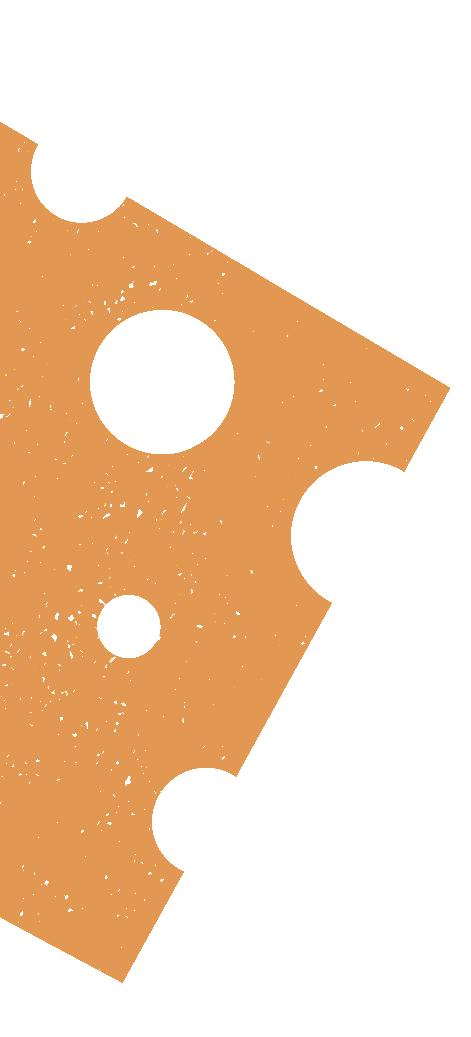
Hawaiian pizza, a style with ham and pineapple, doesn’t actually come from Hawaii! It was invented in Canada by a Greek-born Canadian named Sam Panopoulos. He named the pizza after the particular brand of tinned pineapple he used for it.
2 It is thought that the first thing ever purchased online could have been a pizza, from Pizza Hut’s PizzaNet website in 1994. Users filled out a form with their pizza choice and delivery address.
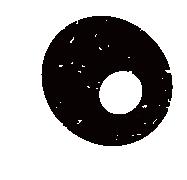

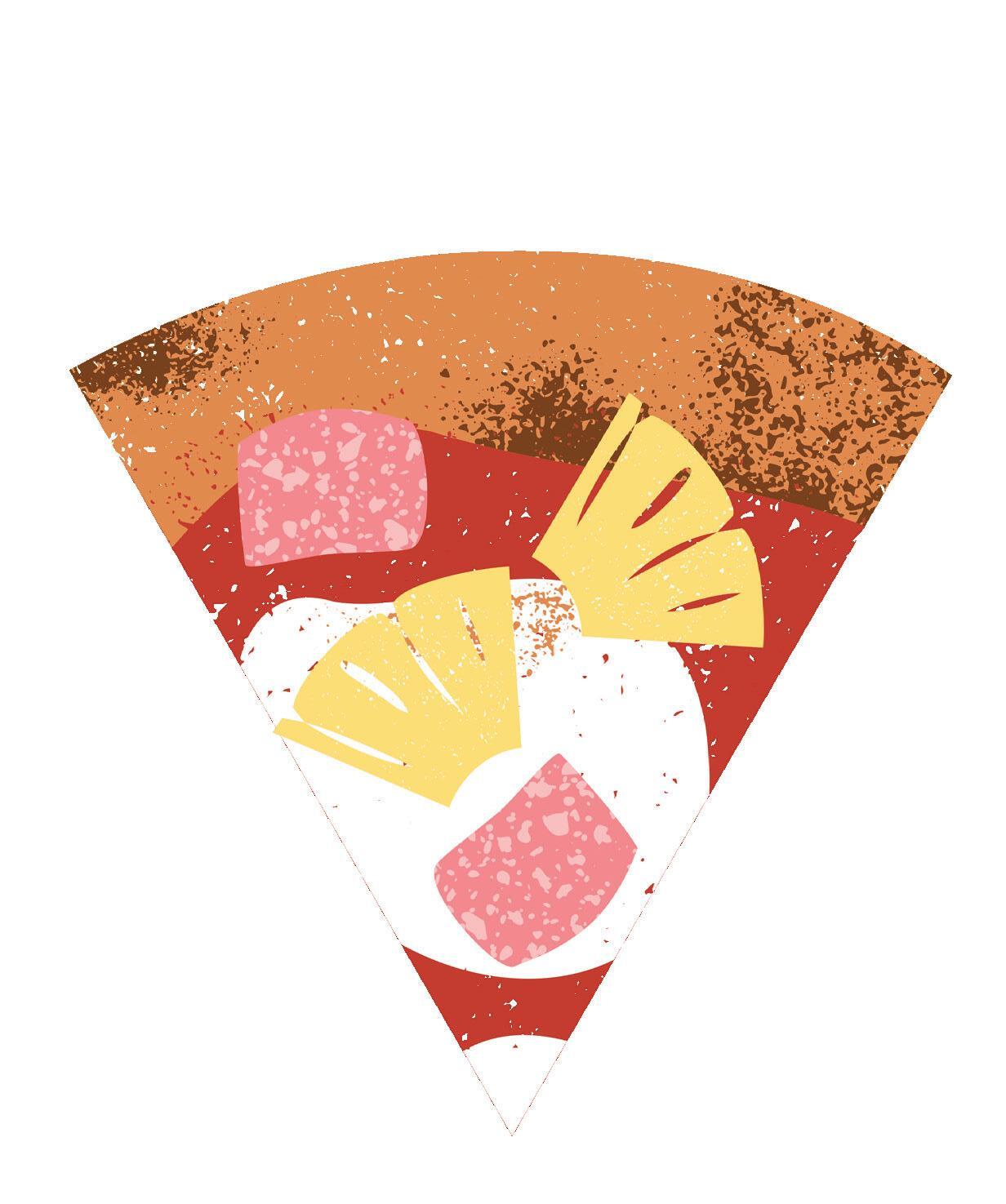
PizzaNet was one of the first few thousand websites on the internet!
www.pizzahut.com

3 The world’s biggest pizza was made by Pizza Hut in 2023. The gigantic pizza was nearly 1,300 square metres and contained 68,000 slices. It was made using approximately 6,200 kg of dough, 2,200 kg of marinara sauce, 4,000 kg of cheese, and 630,496 slices of pepperoni!
4 The most expensive pizza is thought to be the Louis XIII in Salerno, Italy, which is topped with lobster and caviar and comes with a fancy champagne to drink alongside. It costs about £9,000!
5 Pepperoni, mushrooms, and ham and pineapple are all popular pizza toppings in the UK. In Finland reindeer meat is a popular topping, and in Iceland pizza-eaters enjoy banana as a topping! In India pickled ginger is a favourite choice.
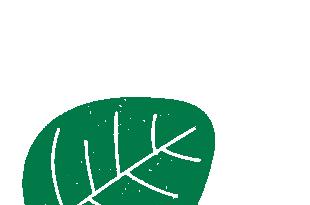
6 Pizza has a very long history. Flatbreads with toppings have been eaten for thousands of years, including by the ancient Egyptians, Romans and Greeks.
But the modern pizza was invented in southwest Italy, in the Campania region, which is home to the port of Naples.
7 Early pizzas – which were flatbreads with toppings, such as tomatoes, cheese, oil, anchovies and garlic – became popular in Naples in the 1800s because they were cheap, quick and easy to eat. But pizzas only started to become popular outside Naples – first in Italy and then in the United States and the rest of the world – during the 1940s.

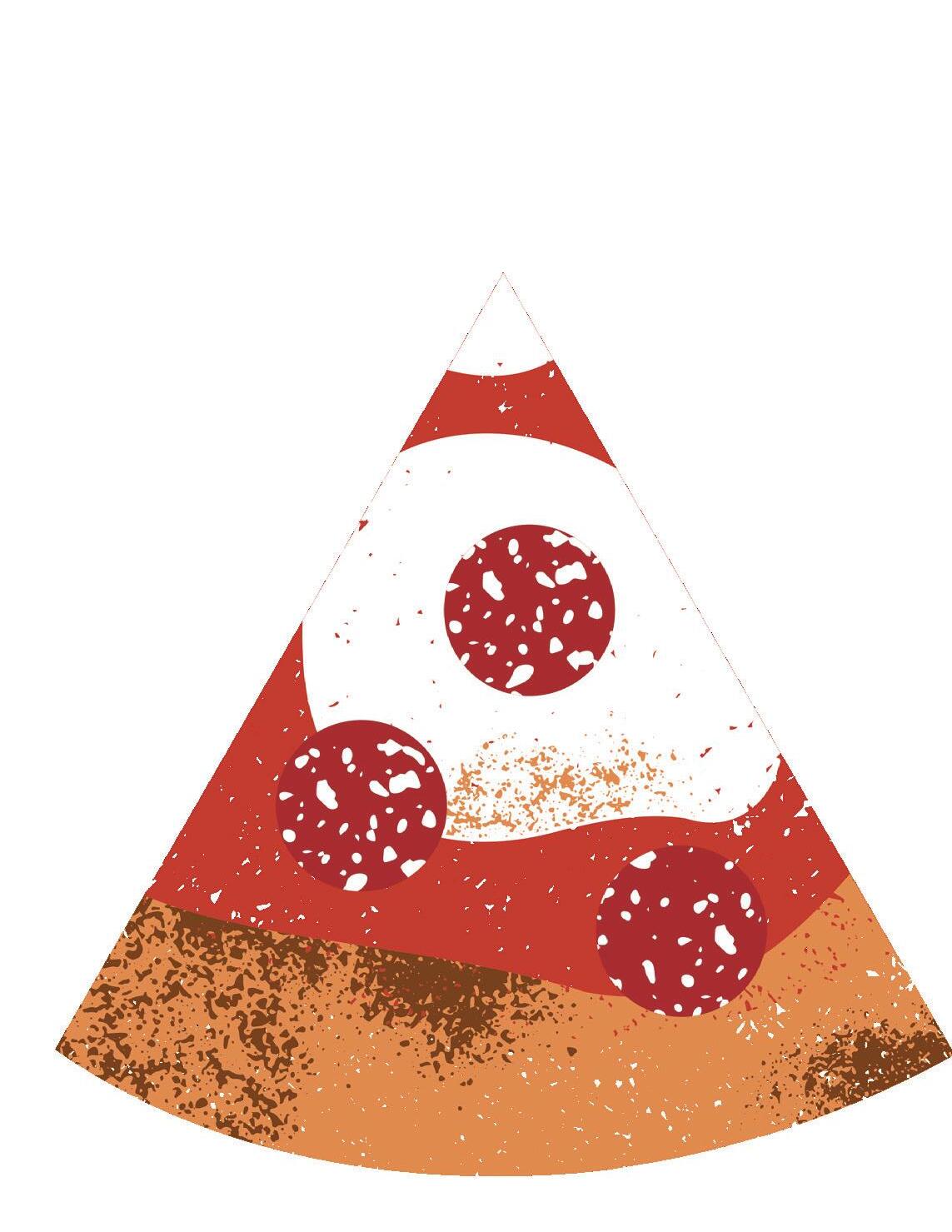

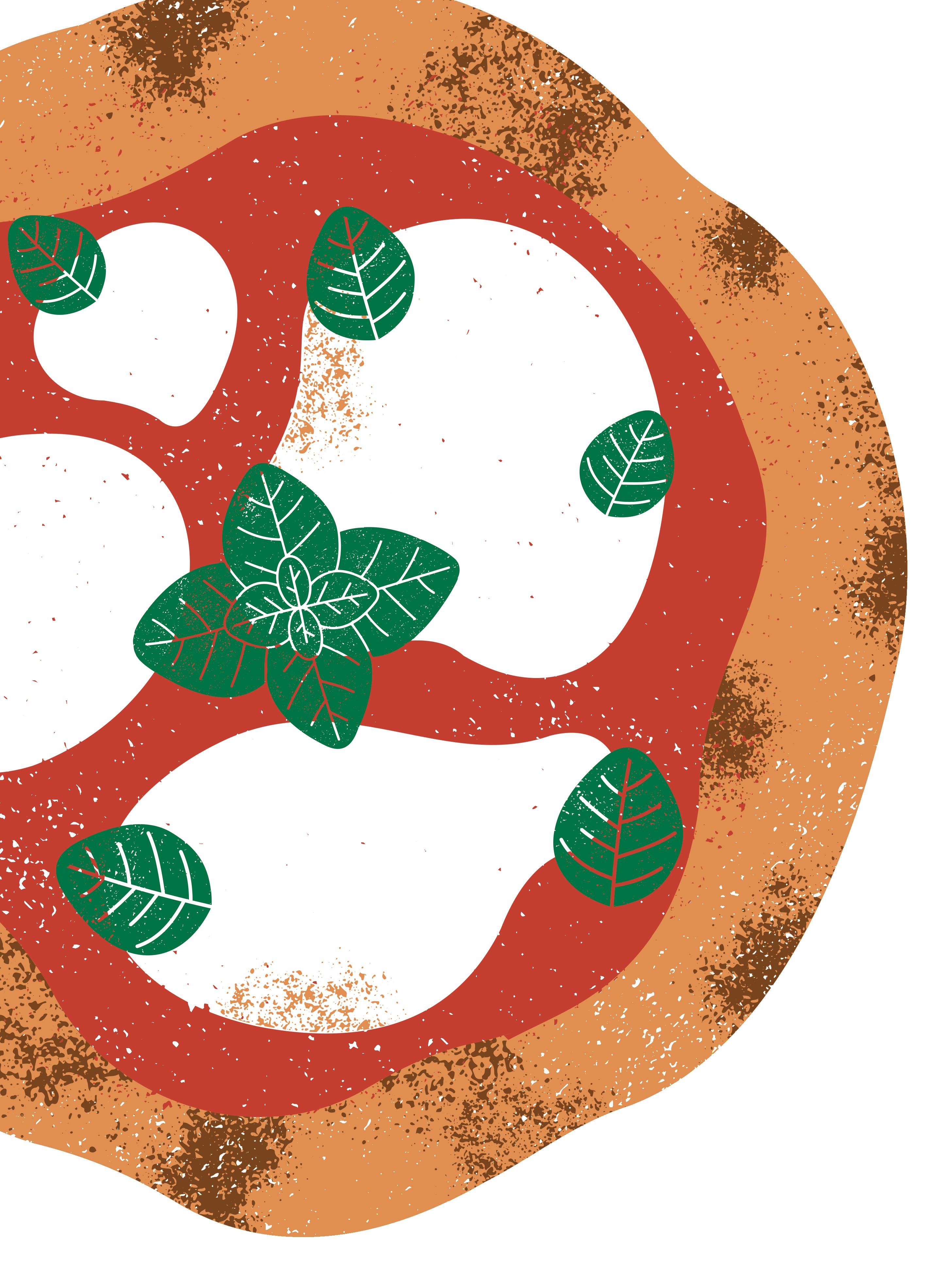
8 In 2001, the Russian Space Agency was paid more than a million dollars to deliver a six-inch pizza to the International Space Station. Russian cosmonaut Yuri Usachov received the pioneering pizza, which was topped with salami. The pizza was a bit different from those we eat on Earth. It contained extra spices because astronauts’ taste buds are dulled in space.

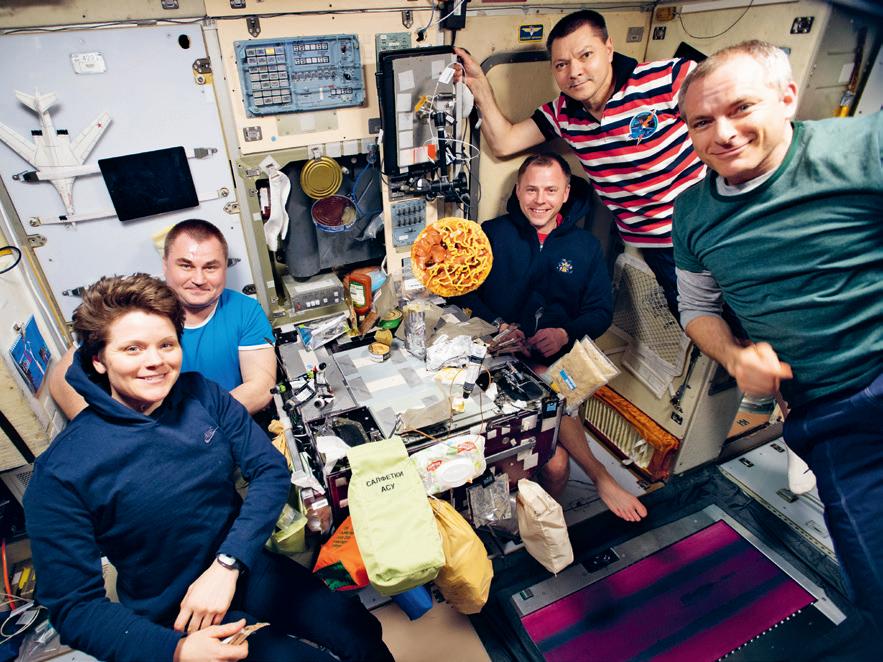
9 It is unclear where exactly the word ‘pizza’ comes from, but at some point it might have been used to refer to any kind of cake, tart or pie.

Crewmembers aboard the ISS enjoy floating pizza in 2019.

Queen Margherita of Italy is said to have inspired a popular type of pizza.

10
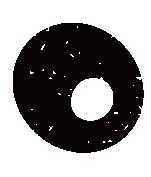
One of the simplest and most traditional pizzas is the Margherita. It is topped with tomatoes or tomato sauce, mozzarella cheese (often buffalo mozzarella), basil leaves and a drizzle of olive oil as a finishing touch. According to popular legend, this type of pizza was named after Italy’s Queen Margherita, wife of King Umberto I, in 1889. She reportedly liked the pizza for its mild fresh flavour and noted that its topping colours – red, white and green – were the same as those of the Italian flag!

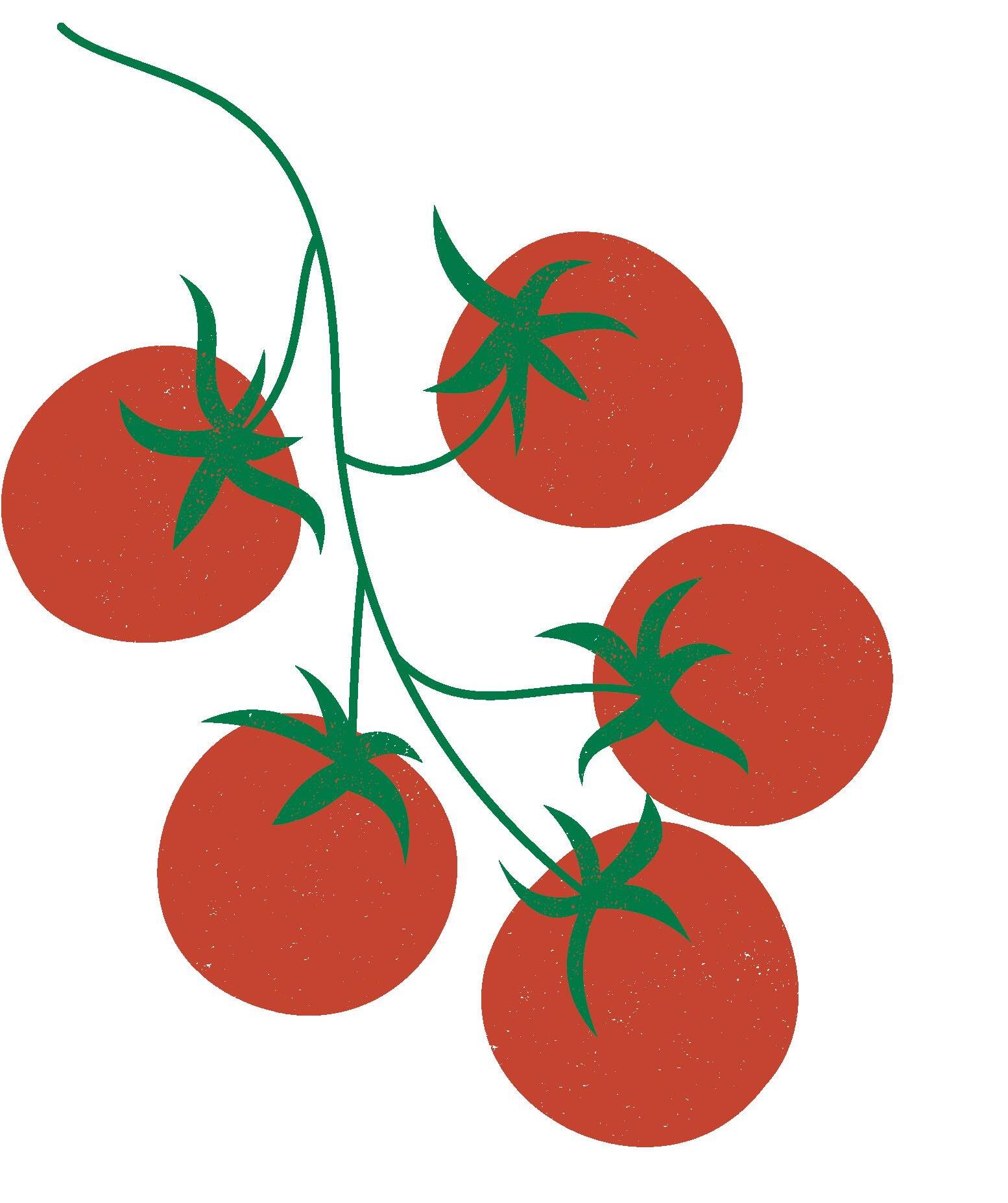
This ship, called MayflowerII, was built during the 1950s to be a replica, or exact copy, of the original Mayflower that sailed to America in 1620.

Each month we feature an amazing story from world history taken from the bestselling book by Christopher Lloyd, with illustrations by Andy Forshaw. This month: Protestantism and the Pilgrim Fathers
During the 1500s, many European people who left their home countries to explore and colonise ‘new’ lands were trying to get rich quick. But in northern Europe, a massive shift in the way people thought about themselves and their God was about to change that. It is called the Protestant Reformation. You see, while rulers and merchants were making fortunes by exploiting the people and places they had ‘discovered’ in other parts of the world, everyday people

were no better off than before. And the Church wasn’t helping. Imagine going to church on a Sunday morning only to be told by the priest that you are so sinful that what awaits you in the next life is eternal damnation in the fires of hell. Understandably, you’d feel terrified.
‘Luckily,’ says the priest, ‘there is a solution. Confess your sins to me and they will be forgiven by God!’ Sometimes you would have to do a good deed to achieve forgiveness. But sometimes there was
a catch. If your priest was corrupt, he might demand money in exchange for forgiveness. As a result, priests and the Church became fabulously rich, while ordinary people still struggled to put food on their tables.
There was plenty of grumbling about the problem of corrupt priests, but the big moment came when a German monk called Martin Luther decided that selling forgiveness was completely wrong. In fact, he went one step further. Luther argued that the only way to be forgiven for your sins was to have complete faith in Jesus Christ.
In 1517, Luther wrote a list of ninety-five complaints against the Catholic Church, known as ‘The Ninety-five Theses’, and sent them to two bishops of the Church. He also encouraged everyone to read the Bible instead of just letting priests tell them what it said. Of course not everyone could read. But an easy-to-use printing press had been invented by Johannes Gutenberg in 1440. That made the Bible in Latin, and later in other languages, available to anyone who could read it. And there’s nowhere in the Bible where it says you have to pay money to have your sins forgiven. You can see why many people felt abused and angry.
Luther’s protest gave its name to a new form of Christianity, called Protestantism, which grew throughout Europe in the years that followed. It wasn’t just ordinary people who welcomed Luther’s message. Rulers keen to break free of the Catholic Church also leaped on to the protesters’ bandwagon, not necessarily for religious reasons. When the Pope refused to allow Henry VIII of England to divorce his Spanish wife Catherine of Aragon, Henry declared that he, not the Pope, was head of the Church of England. Protestantism spread elsewhere, too. Bitter enemies
In the autumn of 1620, a group of just over one hundred English people set off on a dangerous voyage on board one of the most famous ships in history: the Mayflower.
of Catholic Spain, such as the Netherlands, Denmark and Sweden, became Protestant. Others, like France and Britain, went back and forth between the old and new faiths. In these countries, whatever religion you followed, you were in danger if the other side was in power. Neither Catholics nor Protestants were safe for long. And Protestantism itself splintered into many branches, or denominations, which
frequently fought one another. What would you have done if you had lived in Europe at that time? Would you have chosen a side and joined in the fighting? Or would you have tried to mind your own business, hoping to be left alone? Both seem rather risky.
Of course, there was one option aside from fighting: escape. Some people who got fed up with all the wars and arguments and danger did exactly that. In the autumn of 1620, a group of just over one hundred English people (adults and children) set off on a dangerous one-way voyage on board one of the most famous ships in history.
Continued on next page
The printing press is a machine that uses ink to transfer words and images onto paper, to create books and other written works.
A German goldsmith, Johannes Gutenberg, below, built the first mechanical printing press in

around 1440. It could produce 3,600 pages per day and allowed people to make books quickly, cheaply and in large numbers.
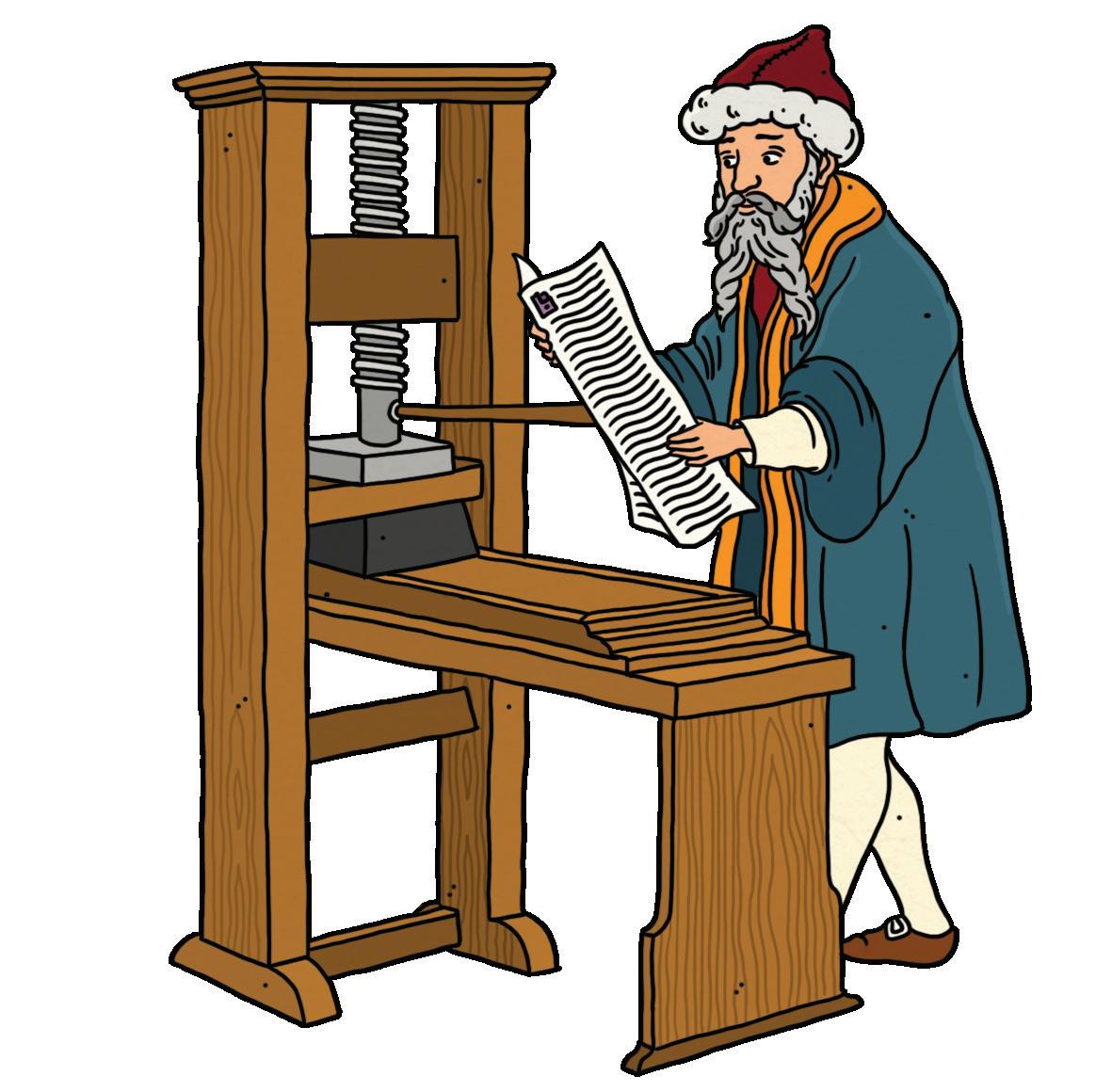
Continued from previous page
It was called the Mayflower The leaders of the expedition were a group of about thirty-five Protestants known as Puritans or Separatists. They were looking for a place where they could practise their religion and preserve their culture. The rest were servants or farmers hoping to find a better life than they could have back home. They arrived in December of 1620 and established a colony called Plymouth, in what is now Massachusetts, USA. This motley crew was later known as the Pilgrims.
The Plymouth colonists had what they thought was very good luck. Early on, they found corn in graves and storage areas of the local Indigenous people, the Wampanoag. They stole it, hoping it would sustain them through the winter and give them seeds to plant. They found an area of cleared land ready to build and plant on. They thought God had left it for them, so they began building houses.

Metacom, left, was the sachem, or leader, of a group of Native Nations in New England, including the Wampanoag. In 1675, he led his people in a war to reclaim the rights the British had taken from them. After a year of fighting, the colonists won and executed Metacom. His head was displayed on a stake in Plymouth for twenty-five years.
The settlers found out later that Plymouth was on the site of an Indigenous village called Patuxet that had been abandoned because the local people had died in an outbreak of disease. The English called the disease ‘Indian fever’. But it was probably smallpox brought over by European explorers and colonisers.
Soon after the Pilgrims arrived, visitors began to appear. First came an Abenaki man named Samoset, who spoke a little English. Then came a Patuxet man named Tisquantum. He had been kidnapped and enslaved by earlier English explorers, had

Above: a painting of the first Thanksgiving celebration, at Plymouth Colony in 1621.
JULY 15, 1620
Mayflower sets sail from the port of London.
JULY 19 She lands at Southampton to take on supplies.
JULY 22 Another ship, the Speedwell, sets sail from Delfshaven in the Netherlands carrying a large group of Pilgrims.
JULY 25 Speedwell lands at Southampton but needs to be repaired.
AUGUST 5 Both ships set sail from Southampton. However, the Speedwell starts leaking again.
AUGUST 12 Both ships dock at Dartmouth, where Speedwell is repaired a second time.
AUGUST 23 Both ships depart from Dartmouth.
AUGUST 26 Both ships turn back again because Speedwell is still leaking.
AUGUST 28 Both ships dock at Plymouth, where it is decided that Speedwell is not fit to sail.
SEPTEMBER 16 Mayflower, now crowded with all of the travelling Pilgrims,
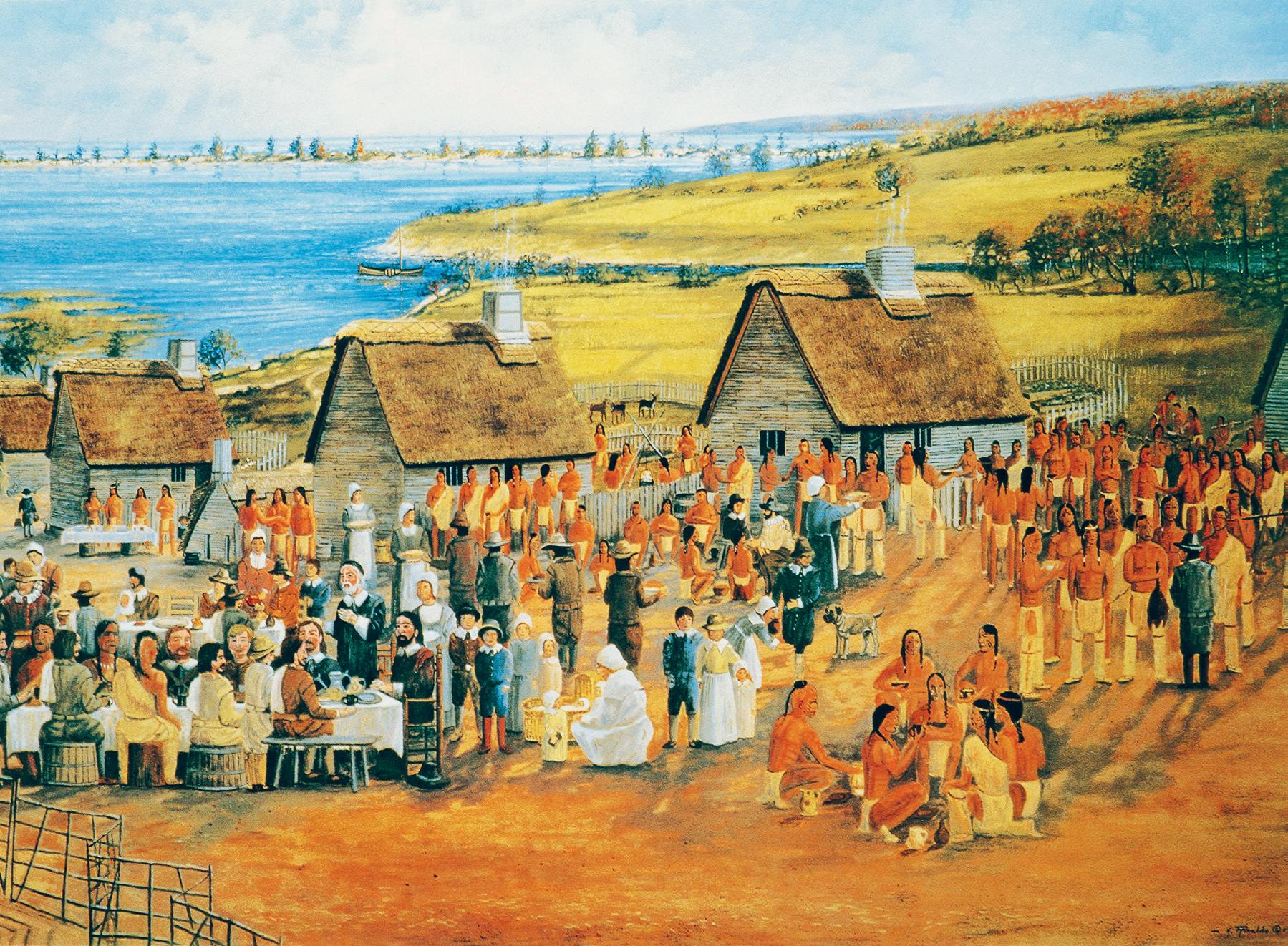
lived in England and spoke the language. Despite this miserable experience, he offered to help the new settlers get to know the local people and learn to live off the land. However, the Pilgrims had arrived too late in the year to grow food, and it was a
horrible winter. More than half of the original group died of either starvation or disease. But by September 1621, those who survived had grown enough food for the next winter and had a peaceful relationship with their neighbours, the Wampanoag.
The two groups celebrated the harvest together. Much later, the US holiday of Thanksgiving was created to commemorate that moment.
Indigenous Americans mark that same day with mourning for the people killed by Europeans and their diseases
departs for America without the Speedwell
NOVEMBER 19 Mayflower sights land at Cape Cod, turns south along the coast, sails into tricky waters and so turns back.
NOVEMBER 21 Mayflower drops anchors at Cape Cod harbour.
DECEMBER 25 Mayflower attempts to sail across Cape Cod bay to Plymouth but the wind is too strong.
DECEMBER 26 Mayflower sails across the bay and the Pilgrims land at Plymouth harbour.
and for the loss of their lands and freedom. Because, of course, the peace didn’t last. It couldn’t. Tens of thousands of colonisers flooded into the Americas. The Europeans continued to believe that anything they found was theirs to take. But, as you can imagine, the Indigenous people, whose ancestors had been in the Americas for over 30,000 years, didn’t like that idea one bit. The next 250 years were a time of continual war and misery for the native people of the Americas. Almost everywhere they lost the power to govern themselves. In some places they were forced to move from their traditional lands to smaller areas called reservations. Often, they were not considered citizens of the countries that had been taken from them.
Even today, Indigenous people, from the Inuit of the Arctic to the Tehuelche of Patagonia on the southern tip of Argentina, are treated as second-class citizens throughout the continents that were once all theirs. These peoples continue to fight for the rights and recognition they deserve. :
It was wonderful to meet so many What on Earth! readers at the recent New Scientist Live show in London. They included the super-talented Isaac, one of the winners of our robot drawing competition, who visited the What on Earth! stand to say hello. Hello Isaac!



Roll up for our readers’ rib-tickling
Last month, we invited budding comedians everywhere to send us their favourite jokes. We received hundreds of hilarious entries and here are five of our favourites. So, if you have a joke or riddle you’d like to share, email it now to letters@ whatonearth.co.uk
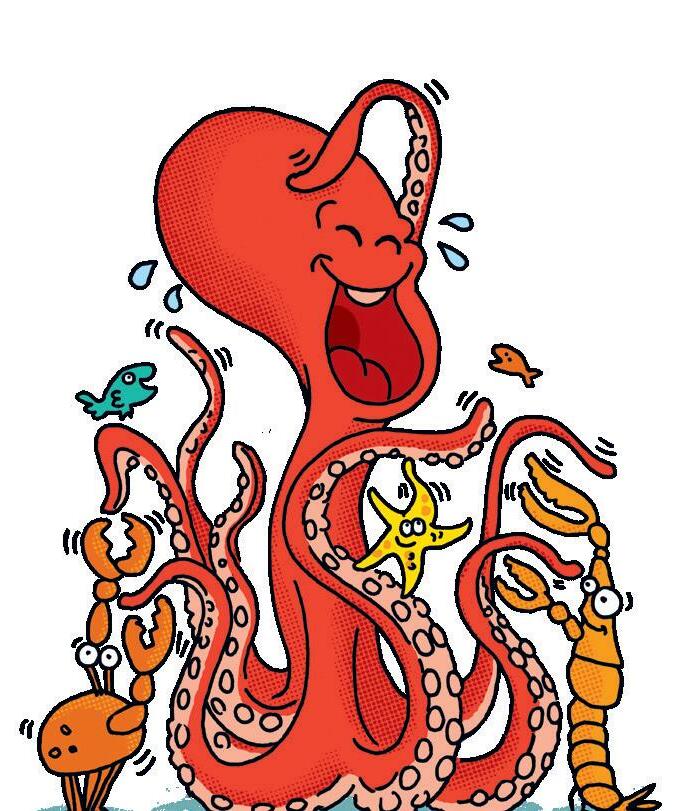


his ingenious
Regular What on Earth!
Magazine readers will remember that our May Issue cover feature about robots included an article about how cutting-edge technology is revolutionising the world of medicine. Unfortunately, in the section describing Continuous Glucose Monitors, we made a mistake by writing that the hormone insulin raises blood
sugar levels, instead of saying that insulin lowers blood sugar levels. Thankfully, we have lots of clever readers like Aydin, who kindly wrote in to point out the mistake. Aydin also sent us this fab photo of him wearing his own Glucose Monitor so we could all see one in action. Thank you Aydin!
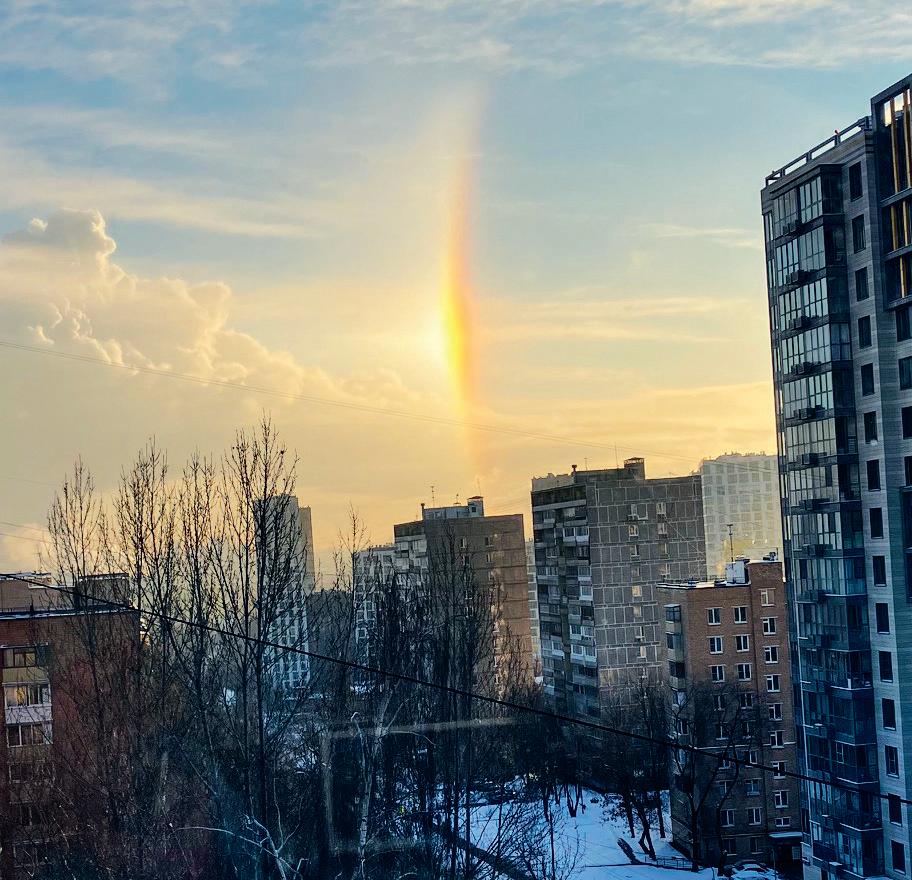


you ever seen a sundog
Inspired by our list of rainbows, Tony sent in this intriguing photo of a sundog in Moscow. Although they look similar, a sundog is not in fact a rainbow, but rather a patch of coloured light caused by the refraction, or bending, of sunlight through ice crystals in the atmosphere. Well spotted Tony!
Published by What on Earth Magazines Ltd, The Black Barn, Wickhurst Farm, Leigh, Tonbridge, Kent, TN11 8PS
Editor-in-Chief
Andrew Pettie
Editor
Alison Eldridge
Art & Design Director
Mark Hickling
Senior Designer & Illustrator
Susanna Hickling
Production
Sarah Epton
Contributors
Andy Forshaw, Andy Smith, Paige Towler, Julie Beer, Valentina D’Efilippo, Kate Hale, Conrad Quilty-Harper, May, Dr Nick Crumpton, Adrienne Barman, Dan Knight
With thanks to Andy Forshaw, Natalie Bellos, Helen Thewlis and the whole team at What on Earth Publishing
Editorial Consultant
Nancy Feresten
Marketing Director
Luise Mulholland
Business Development
David Falzani
CEO, What on Earth Magazines
Christopher Lloyd For Encyclopaedia Britannica
Mary McCudden, Director, Middle School and Elementary Products
Printing and distribution
Warners Midlands PLC, The Maltings, Manor Lane, Bourne, Lincolnshire, PE10 9PH
Editorial enquiries
editor@whatonearth.co.uk

Subscriptions 01778 392479 whatonearth.co.uk
Picture credits
Library images from: Getty Images; Shutterstock; Alamy; iStock; Science Photo Library, NASA. Snap It: Epson Pano Awards/Francisco Negroni, Comedy Wildlife Awards/ Scott Frier, EPA/Robert Fülöp
Copyright 2024 What on Earth Magazines Ltd.
All rights reserved. No part of this magazine may be reproduced or transmitted in any form, including photocopying, without permission in writing from the publishers.



































































WhatQuestion: wears a coat inwinterandpants in the summer?
Answer: Adog!
Question: What question can you never answer ‘yes’ to?
Answer: ‘Are you asleep yet?’
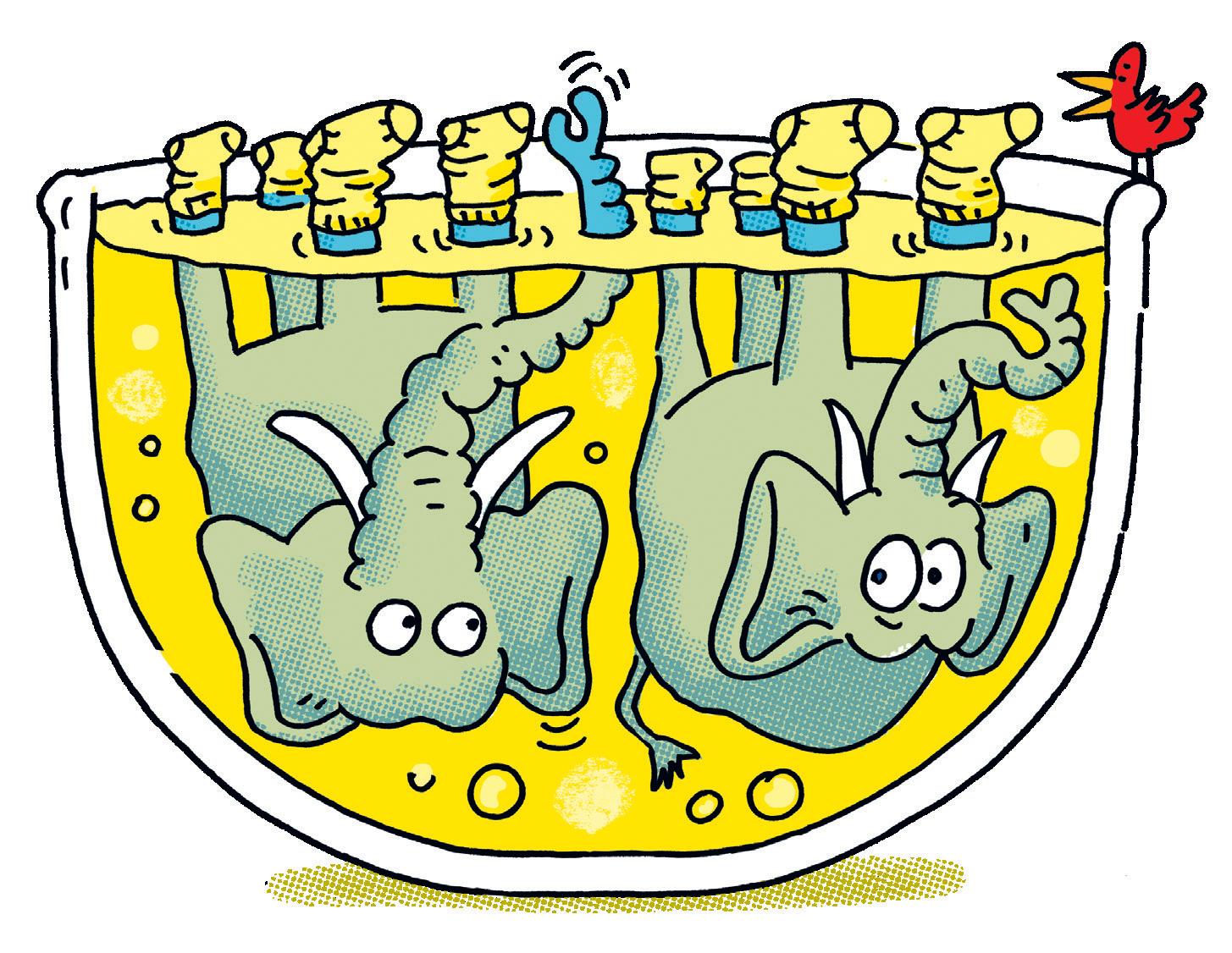

his head!

Why are penguins racing car drivers? brilliant They’realways in Pole position!
WhatQuestion: flies but always stays rooted to one place?
Answer: A flag!
Tickle your ribs and tease your brain with our favourite gags and riddles, hand-picked by our jokes editor May. What do do after school? elves
Where was Henry VIII crowned? Which book most stirring descriptions? has the Their
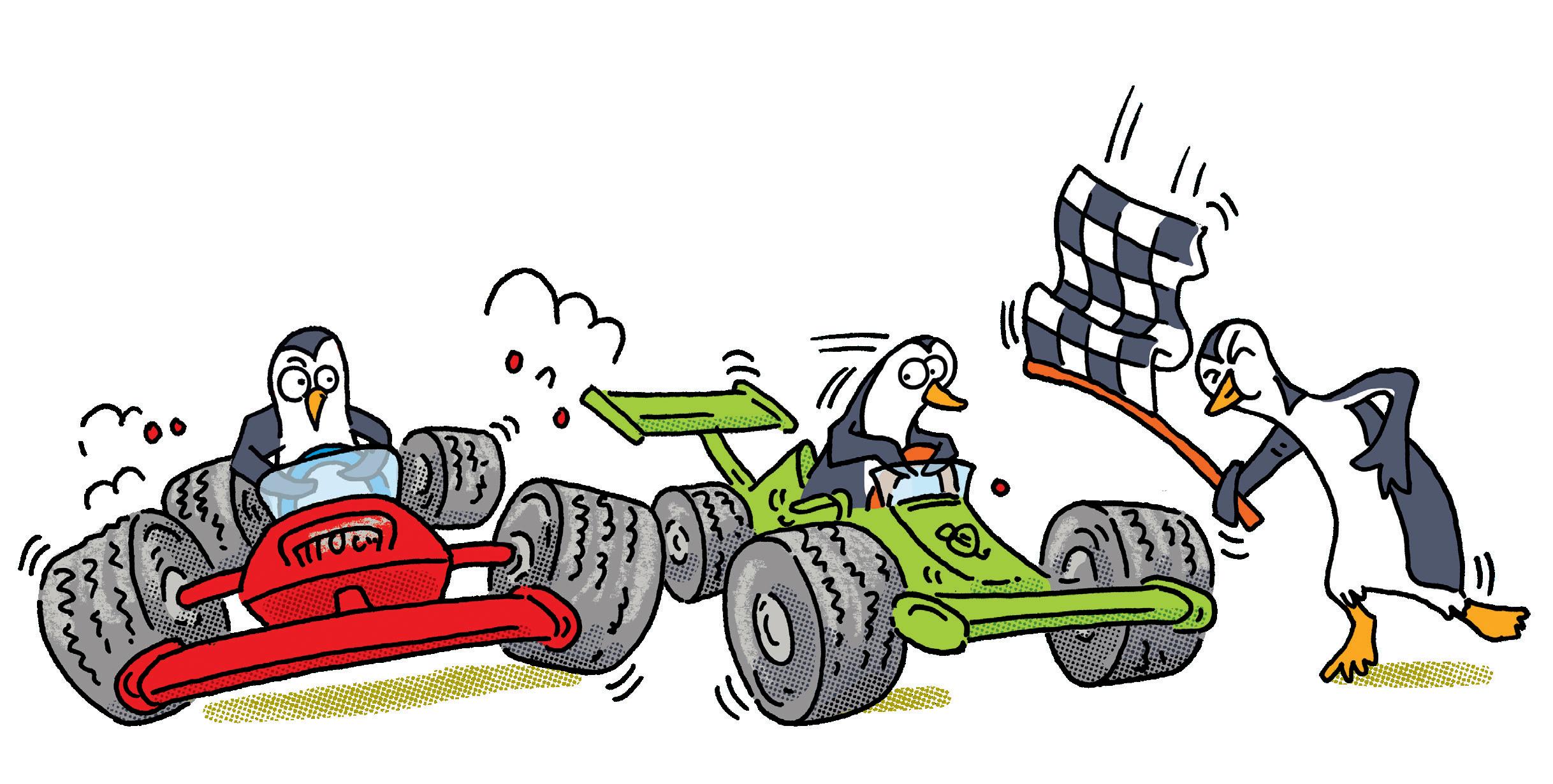

Question: What has a bottom at the top?
Answer: Your legs!
